Crossrail
description: a railway construction project in London aiming to provide better east-west transit
57 results
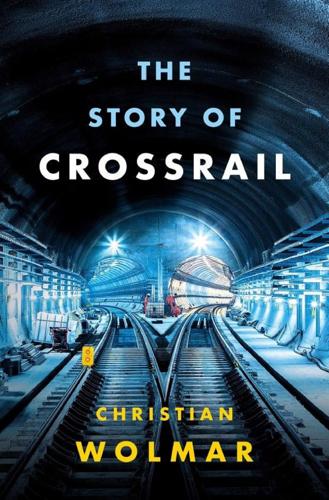
The Story of Crossrail
by
Christian Wolmar
Published 5 Sep 2018
32–3 and the Central London Rail Study 40 and the Channel Tunnel 66 and the Cross London Rail Links team 69 and cross-town railways 37–8 and Crossrail routes 122 privatization 77, 85, 89, 90, 98 British Transport Commission, London Railways Plan 26 Brown, Gordon 145–7, 151, 153, 158, 274–5 Browne, Liam 170 Buck, Martin 150 Burnham station, potential impact of Crossrail on 130–2 Business Case for Crossrail 95–6, 98–100, 103, 104, 105–6, 113 business case methodology, and benefit–cost ratio 46, 54 businesses agglomeration effects 38, 48, 152–3 funding Crossrail 112, 147–8, 151, 156 Cameron, David 161, 203–4 Canada Water 222–3 canals 23–5 Canary Wharf 56, 62, 64, 65, 98, 123, 128, 132, 146, 150 Crossrail HQ at 164 and the DLR 58, 59, 60 funding Crossrail 150, 151, 152 petition to the House of Lords 142 station construction 150, 158–9, 210–11, 221 tunnel construction 179, 183, 202, 257 Canvey Island 201 Cassel, Sir Ernest 13 Cassidy, Michael 220–1 CBI 110 CBTC (Communications-Based Train Control) 139, 236 Central Line 69, 120–1, 123, 127 Central London Rail Study 34, 38, 40–3, 45, 62, 65, 69–70, 73, 81, 83 and benefit–cost ratio of the Crossrail scheme 49–50 and Docklands 59 Central Railway 9, 12–19, 20 electric locomotives 15–16 fares 17–18 passenger numbers 18 ventilation 16–17 Centre Point 158, 229 Chambers, Mr Anthony 136–7 Channel Tunnel Rail Link (now HS1) 66, 79, 89, 91, 98, 164, 165, 186 construction 169, 186, 209, 274 Chelsea–Hackney line see Crossrail 2 (Chelsea–Hackney line) China 138–9 CIL (Community Infrastructure Levy) 114, 149, 279 Circle Line 10, 122, 125, 161, 249 City & South London 10–12, 13, 15, 17 City of London 95, 96 and the benefits of Crossrail 270 Big Bang (financial services) 38, 40, 123 and Crossrail tunnel construction 176–7 and the first Crossrail bill 77 and the first Tube railway 11 funding Crossrail 146–7, 150–1, 152 petition regarding Liverpool Street 136, 141 City of London Corporation 220–1 Clark, Katy 134 coalition government (Conservative–Liberal) 155–6, 159, 161 Colin Buchanan & Partners 153 the Combine 25 Community Infrastructure Levy (CIL) 114, 149, 279 commuter trains 41, 98 Comprehensive Spending Review 149, 159, 160, 163, 173 Connaught Tunnel 126, 132, 191, 196–7, 203 Conservative governments Conservative–Liberal Democrat coalition 155–6, 159 and the Crossrail 2 project 278–9 transport policies 28–9 construction industry changing patterns of employment 260–1 cost savings on Crossrail 162 health and safety 170–2 construction work (Crossrail) dealing with contractors 259–63 deaths and injuries cyclists 231–2 workers 172, 228–9, 263–4 demolition work 158 design contracts 172–3 lorry movements and safety record 228–32 safety regime 169, 169–72, 178–9, 194 tenders for contracts 163 testing regime 264–5 see also stations (Crossrail); tunnel boring machines (TBMs); tunnels (Crossrail) cost–benefit analysis agglomeration effects 38, 48, 152–3 of transport megaprojects 45–54 County of London Plan (1943) 25–6 Cross London Rail Links 69, 70, 73, 96, 119, 120, 125, 143 Business Case 95–6, 98–100, 103, 104, 105–6, 113 Environmental Statement 117, 129–32 and ownership of Crossrail 158 Race Equality Impact Statement 132–3 see also Crossrail project Crossrail 2 (Chelsea–Hackney line) 29, 41–2, 50, 65, 70–1, 91, 277–81 funding 279–80 politics of 278–9 Crossrail project benefit–cost ratio of 52–3 benefits of 270–1, 280 communication systems 262–3 criticisms of 267–8 Crossrail Limited established 143 delay in opening 162, 265, 269 estimated passenger numbers 128, 268 HQ 164 innovation programme 53 invisibility of 269–70 job creation 96, 128–9 legal status of 157–8 maintenance 249, 265 management structure 164–5, 168–9, 208–9, 233 planning process 71–4, 133–4 programme partner 167–8 project delivery agreement 163–4 project delivery partner 166–7 public awareness campaign 116–17 routes 97–9, 267 inside tunnels 71–2, 97–8, 119–22, 126–8 Kingston branch 104–6 outside tunnels 99, 104–6, 122–5 safety culture 39–40 Transport and Works Act application 88–9 website 117, 151, 276 see also construction work (Crossrail); Cross London Rail Links; Elizabeth Line; funding Crossrail; Parliamentary bills; trains Custom House station 226 cyclists, killed by Crossrail contractors’ lorries 231–2 Daily Mail 17 Darling, Alistair 99–100, 101–3, 105–6, 110 Dartford 127 Department for Transport 46, 66, 78, 96, 100, 138 building of Crossrail 143 and Crossrail station 209, 220 and Crossrail trains 239, 243, 251 funding Crossrail 146, 147, 160, 274 legal status of Crossrail 157–8 project delivery agreement for Crossrail 163 disabilities, people with, accessibility at Crossrail stations 141, 214, 226, 250–1 District Line 24, 97, 105, 133, 161, 249 District Railway 19 Dix, Michele 278, 279, 280 DLR (Docklands Light Railway) 54, 58–62, 196, 226 Dobson, Frank 146 Docklands 43, 54–67, 71, 95, 96, 280 Crossrail route 97–8, 125 Development Corporation 56–9, 60 East London docks 55 Limehouse Link 58 Docklands Light Railway (DLR) 54, 58–62, 196, 226 Dog Kennel Bridge 142 driver-only trains 104 East London docks 55 East London Line 97 Extension 129 East London Rail Study 63–4 Eastern Counties & Thames Junction Railway 196 Ebbsfleet 98, 127 economic growth 83–4 Edward, Prince of Wales (later Edward VII) 14, 17 Electric Traction Company 13 Elizabeth Line 271 as part of Transport for London 249–50 stations see stations (Crossrail) tunnels 183 employment apprenticeships 276–7 central London 38, 40 changing patterns of 268 in the construction industry 260–1 and City deregulation 123 and the Crossrail concept 30 Crossrail and job creation 96, 128–9 in west London 124 English Heritage 116 English Nature 116 Ennis-Hill, Jessica 190 Environmental Statement 117, 129–32 Essex 122–3 ETCS (European Train Control System) 236–7, 245–7, 248 Eurostar 127 Fairfield Conservation Area Residents Association 136 Farringdon 7, 8, 25, 120–2, 128, 142, 179, 250 station construction 211, 221 station design 216 tunnel construction 182–3, 187, 189, 203, 204 Fennell, Desmond 38 The Fifteen Billion Pound Railway 195 financial services, Big Bang 38, 40, 123 Finsbury Circus 194, 224–5 Finch, Spencer 221–2 First World War 20, 25 Fleet Line see Jubilee Line Flyvbjerg, Bent 51, 52, 165 France, RER (Réseau Express Régional) 34–6, 41, 81–2, 107 freight trains 139–40 Fugro 178–9 funding Crossrail 82, 111–16, 143, 145–56 annual statements on 159 businesses 112, 147–8, 151, 156 Canary Wharf Group 150, 151, 152, 158–9 City of London 146–7, 150–1, 152 Comprehensive Spending Review 149, 159, 160, 163, 173 cost escalation 267, 274 and savings 159–63 cost estimates 74, 99, 128–9, 147, 159 cost-saving measures 104 Heathrow Airport 149–50 National Audit Office report on 272–3 Network Rail 148, 151, 160–1 property development at stations 112–14 trains 237–40, 243 Transport and Works application 88–9 Gatwick Airport 121 G.E.
…
Pensions Ltd 137 geology of London, and the Crossrail works 175, 177–8, 179, 224 Germany megaprojects 165 S-Bahn railways 36–7, 41, 107–8 GLA (Greater London Authority) 66, 94, 147, 151 GLC (Greater London Council) 28, 29, 34, 49–50 abolition of 66, 82, 90 and Thameslink 49 Goldman Sachs 221 Gordon, Douglas 221 Grayling, Chris 278 Great Eastern Railway 20 Great Northern & City 21 Great Northern Railway 5 Great Western Allotment Association 137 Great Western Railway 5, 42, 97, 106, 123, 126, 247 Greater Anglia line 107 Greater London Authority (GLA) 66, 94, 147, 151 Greater London Plan (Abercrombie Report) 25–6 Greathead Shield 10–11, 13, 171, 184 Green Belt policy 30, 41 Green, Leslie 227–8 Greening, Justine 189 Gunnell, Barbara 269–70 Hackney cabs 4 Halcrow Fox Associates 64 Hamburg 37 Hammersmith & City Line 119, 217 Hammond, Philip 154, 155 Harmsworth, Alfred 17 Harris, Nigel 272 Havering, London Borough of 137–8 Heath, Don 37–8, 71–2, 78–9, 89, 122 Heathrow Airport 5, 30, 72, 92–3, 96, 97, 99, 100, 121, 131, 146 BAA and Crossrail funding 149–50 control of station 250 Crossrail route to 124–5, 127 Crossrail services 236 Express service 92–3, 101, 126, 209–10 and HS2 268 Junction 106 signalling system 236–7, 245–6, 249 terminals 127, 210, 268, 275 trains for 242 Hendy, Peter 158 Henry VIII, King 201 Herrenknecht AG 191 Heseltine, Michael 28, 56 historical finds, during Crossrail construction 199–201 Hitier-Abadie, Claire 231 Holden, Rob 164, 165, 208–9 Hollobone, Philip 134 Holt, Brian 231 Hong Kong 116 Hopkins, Kelvin 134 horse-drawn vehicles omnibuses 2, 3–4, 8, 9 trams 8–9 House of Commons, Opposed Bill Committees 74–5 housing, and the Crossrail 2 project 278 HS2 project 99–100, 268, 275, 279, 280 HS1 see Channel Tunnel Rail Link (now HS1) Hughes, Simon (now Sir Simon) 64 Iacobescu, George 221 Independent London 83, 87 industrial action 104 Innovate18 275–6 Inter-City trains 33 Isle of Dogs 57, 58, 59, 62, 97–8, 99, 128, 158, 196 Iver Parish Council 142 James of Blackheath, Lord 176, 201–2 James, Siân C. 134 Joffe, Chantal 221 Johnson, Boris 153, 158, 161, 189, 204 Jubilee Line 20, 29, 41–2, 67, 119 construction 31 and the Crossrail route 123 and Crossrail stations 119 Extension 41–2, 55, 64–6, 69, 70, 78, 89–90, 100–1, 118, 274, 277 cost-benefit analysis of 47, 50 signalling system 247 stations 213, 220, 222–3 Karsa, Maria 231 Khan, Sadiq 278 King’s Cross St Pancras 79, 227 King’s Cross station 7 fire 38–40, 89 Kingston branch 104–6 Kirkpatrick, Scott Wilson 76 Labour governments commitment to Crossrail 145–7 revival of Crossrail 90–1 transport policies 28–9 Labour Party 78, 84–5, 155 Lambeth Group stratum 179, 196 Laurence, George 82 Liddell-Grainger, Ian 134 lifts Central Railway 15 City & South London 15 Limehouse Link 58 Limmo Peninsula 189, 190–1 Liverpool and Manchester Railway 4 Liverpool Street 42, 71, 99, 100, 122, 123, 124 Crossrail control centre 250 Crossrail service from 236 Crossrail station 128, 224–6, 271 artwork 221 construction 211 design 216 and the London Rail Study 29, 30 ticket gates 136 ticket halls 140–1 tunnel construction 187, 194–5 archaeological finds during 200 Livingstone, Ken 90, 109, 145–6, 153 Location of Offices Bureau 32 Londinium (Roman settlement) 177, 200 London & North Western Railway 5, 6 London Assembly Transport Committee 160 London City Airport 197–8 London Docklands Development Corporation 56–9 London East-West Study 91–2, 93–4, 104 London and Greenwich Railway 4 London Overground 214, 222–3 night use 265 London Planning Charge 149 London Rail Study (1974) 29–32 London Transport 25, 47, 59, 61, 63, 66, 71, 85 and the Central London Rail Study 69–70 and Cross London Rail Links 69 and Crossrail routes 122 ‘Docklands Public Transport Scheme’ 62 and the first Crossrail bill 74, 82, 83–4 and Oxford Circus 120 safeguarding Crossrail 87, 88, 90 London Underground 66, 74, 89–90, 271 apprentices 276 and Crossrail routes 122 and Crossrail stations 250 interface savings 148–9, 161 and the Jubilee Line Extension 64–5, 213 King’s Cross fire 38–40, 89 night use 265 overcrowding 35–6, 40, 41, 95, 96 passenger numbers 32, 40–1, 74, 159–60 PPP funding for 102, 114–15, 146, 164 signalling systems 248–9 small-bore Tube lines 21 stations 141, 227–8 Long, Jeremy 235 Lovelace, Ada 188 Luton Airport 121 McDonald, Neil 70 MacGregor, John 78 McNulty, Tony 117–19, 143 Maidenhead 95, 97, 106, 126, 243 Main, Peter 193–4, 195 Major, John 77, 78, 85 Major Project Association 51 Malins, Richard 73 Manchester 37–8 Marble Arch 2 Marek, John 85 Marlow, Tony 75, 78, 84 Maryland station 226, 242 Mayfair residents, objections to Crossrail 78, 79–80 mayor of London, office of 84, 90–1, 146, 153, 161 Meads, Richard 34, 73 Meale, Alan 134 megaprojects benefit–cost ratios of 45–54, 59 cost escalation of 165 Metropolitan Line 7, 25, 42, 69, 71, 72, 92, 121, 122, 123–4, 215, 249 Metropolitan Railway 2, 3, 6–8, 21, 24, 134 Middleton, James 142 Millennium Dome 63 Miller, Linda 197 Montague, Adrian 102–3, 105–6, 110 Montague Review 102–4, 105–6, 110, 111, 112–13, 115, 116, 117 Morgan, Terry 164–5, 166, 168, 169, 198, 207, 208, 220, 221–2, 264, 272, 275 and apprenticeships 276–7 Morton, Sir Alastair 91 motorway boxes 27–8 motorway building 26, 33 Mott, Basil 13 Mott MacDonald 172–3 MTR (Mass Transit Railway) 234–5, 250 Munich, S-Bahn railway 37, 107–8 Museum of London Docklands, Archaeology of Crossrail 200–1 National Audit Office (NAO), report on the Crossrail project 162, 272–3 National Council of the Cycling Touring Club 138 National Rail Network 93 Network Rail 249 and Crossrail stations 250 and Crossrail trains 235, 240 funding Crossrail 148, 151, 160–1, 274 interfaces with Crossrail 250 Newcastle 38 newts, great crested 131–2 nineteenth century canals 23–5 London transport developments 2–6 Norris, Steve 66, 84, 85, 146 North London line 31–2, 57, 105 North London Railway 5–6, 13 North Metropolitan Railway and Canal Company 24–5 Northern Line 19–20, 120, 122 northern regions, and the Crossrail 2 project 278–9 Oakervee, Douglas 158, 164 Old Oak Common 123–4, 132, 141, 242, 268, 280 Olympia & York 54, 57, 58, 59–60, 61–5, 66–7 Olympic Games (2012) 129, 190, 275 omnibuses 2, 3–4, 8, 9 One Canada Square 57 Open Spaces Society 142 optimum bias 49, 50, 104 Osborne, George 161, 162 Oxford Circus 120, 125 Oxford Street 141, 280 Oxford Street and City Railway proposal 10 Paddington 7, 42, 106, 109, 161 and the Crossrail route 122, 124, 125, 267, 268 Crossrail services from 236 Crossrail station 128, 250 artwork 221–2 construction 210–11, 216–21 contract for 207 design 216 platforms 219–20, 242 Crossrail tunnels 71, 119 construction 176, 179 and the London Rail Study 29, 30 Paddington–Liverpool Street proposed rail route 91, 92 Paris, RER (Réseau Express Régional) 34–6, 41, 81–2, 107 Parker, Peter 32–3 Parkinson, Cecil 70–1, 77–8 Parliamentary bills first Crossrail bill (1991) 73–85 objections to 78–81 hybrid bill process 93–4, 110, 134, 167 Opposed Bill Committees 74–5 second Crossrail bill (2005) 117–19, 124 becomes law 143 House of Commons select committee 134–41 House of Lords select committee 141–3, 176 petitioning process 135–9, 141–3 political opposition to 145 Pearman, Hugh 181, 215, 222 Pearsall, Phyllis 188 Pearson, Charles 6, 121–2 Pelton, John 168 Periton, Simon 221 Pettit, Gordon 108 PFI (Private Finance Initiative) 66, 103, 114–15, 146, 275 and Crossrail trains 237–40 Piccadilly Line 19–20, 97 Pidgeon, Caroline 160 Pidgley, Tony 154 plague bacteria 177, 202 Plumstead 256, 257, 258 politicians 145–7 Post Office Railway 194, 217 PPP (public–private partnerships) London Underground 102, 114–15, 146, 164 Tube Lines 276 Prescott, John 90, 91, 93 property development, financing Crossrail through 112–14 Pudding Mill Lane 126, 128, 136–7, 190, 193, 256 Pugh, John 134 Purchase, Ken 79, 85 Race Equality Impact Statement 132–3 Rail magazine 152, 272 Railtrack 77, 166 Railway Canal Company 24 Railways Act (1993) 77 Ramblers’ Association 142 Raynsford, Nick 139 Reading 95, 97, 106, 126, 236, 243, 250, 251 Regent’s Canal 23–5 Reichmann brothers 54, 57, 58, 62 Richmond–Kingston branch 104–6 Rifkind, Malcolm 78 Riordan, Linda 134 road schemes 27–8 benefit–cost ratios of 52, 53 Docklands 58 robotic theodolites 181 Romford 137–8, 141 control centre for Crossrail 249–50, 262–3 Royal Commission on Metropolitan Railway Termini 9–10 Royal Docks 126, 128, 132, 196–7 Royal Oak 119, 126, 199, 218, 256 SCADA (Supervisory Control and Data Acquisition) 263 Schabas, Michael 43, 47, 63, 69, 70, 71, 120, 122, 123, 125 and the DLR 58, 60, 61 on funding Crossrail 149, 150 and Superlink 106–7, 109 Scottish Parliament building 157 Second World War 17, 20, 37, 55 Crossrail construction and risks from unexploded bombs 176, 197, 202–3 the Shard 57 Shenfield 85, 95, 99, 107, 122–3, 124, 127, 236, 244, 250 Shillibeer, George 3 Siemens 237, 239 signalling systems 72, 139, 155, 243, 245–9, 265 ATP (Automatic Train Protection) 245–6, 247 CBTC (Communications-Based Train Control) 139, 236, 247–8, 249 equipment 259 ETCS (European Train Control System) 236–7, 245–7, 248, 249 Simmonds, Ellie 190 small-bore Tube lines 21 Smith, David 124 Smith, Howard 94–5, 107–8, 233, 234, 235, 238, 241, 243, 252 Smithfield Market 121 Smithfield Market Traders 142 Snow Hill Tunnel 25, 29, 49–50 social media 117 Soulsby, Sir Peter 134 Southend Arterial Road Action Group 138 SRA (Strategic Rail Authority) 90, 91, 92, 94, 95, 101, 104, 139, 143 Stansted Airport 100, 107, 121 stations Jubilee Line Extension 213 mainline stations and commuter trains 41, 96 Victoria Line 35–6 stations (Crossrail) 3, 72, 73, 81, 128 artwork 220–2 construction 140, 207–28 box method of 210–11, 217–18 Canary Wharf 150, 158–9 contacts for 207–8 improving spaces around the station 223, 227 lorries carrying material 229–32 removal of spoil 218 sprayed concrete lining technique 212, 215 and TBMs 182, 207, 211–12, 219 control of 250 design 73, 210, 212–16, 225–6 accessibility 141, 214, 226, 250–1 entrances 119–20, 121, 122 and the Environment Statement 130–2 fitting out 258–9, 261 House of Commons committee proposals 139–41 platform-edge doors 219–20 platforms 128, 130, 219–20, 241–2, 244 property development at 112–14 size of 271 step-free access to 141 surface stations 214, 225–6 test station in Bedfordshire 215 testing 264 toilet facilities 251–2 ventilation shafts 128 Steer Davies Gleave 80 Steer, Jim 42–3, 80–3, 87–8, 104–5 Stepney Green 126, 190, 193, 196 Stockley Junction 132 strikes 47 Submarine Delivery Agency 209 Superlink scheme 106–9 sustainable development 129 tax increment financing 111–12 United States 115–16 TBMs see tunnel boring machines (TBMs) technological innovation 53 TfL see Transport for London (TfL) Thames Gateway 129 Thames Valley 124 Thameslink 29, 79, 89, 107, 108, 121, 129, 249 and the Crossrail 2 project 278 extension plan 49–50 Programme 94–5 signalling system 247 timetable changes 252, 265 trains 237, 239, 239–40, 251 Thamesmead 154, 280 Thanet Sand Formation 179 Thatcher, Margaret 32, 34, 57, 60, 66, 70–1, 78, 274 Tindall, Gillian 6, 200 Tkáčik, René 228–9, 263 tollgates 2, 7 Tottenham Court Road 120, 128, 158 control of station 250 station construction 211, 221, 229–30 tunnel construction 182–3, 187, 194, 195, 201 Tower Hamlets residents 78, 80–1, 97, 132–3 Town and Country Planning Act (1990) 114 Train, George 8 trains 233–49 articulated 240 bi-mode 126 commuter trains 41, 98 Crossrail Aventra model 243–4 average journey times 251 CCTV cameras on 244 design 138 design faults 244–5 doors 220, 238, 242 driver-operated 243–4 electrification 125–6 facilities 33, 108–9 lack of toilets on 251–2 length of 121, 128, 236, 241–2 main depot 141 management through tunnels 252 procurement 237–49 size of 73 and the tunnel envelope 262 fitting out Crossrail tunnels 254–8 freight trains 139–40 housing 242–3 operating 233–7 rolling stock contract 128 Thameslink 237, 239, 239–40 see also signalling systems trams 8–9, 18–19, 24 Transcend 167–8 Transport 2010 91 Transport for London (TfL) 32, 94, 95, 96 and benefits of the Crossrail scheme 48 construction of Crossrail 143 and the Crossrail 2 project 277–8 and Crossrail stations 141, 209, 214, 220, 227 accessibility 250–1 and Crossrail trains 237–8, 239, 240, 241, 243, 251 Elizabeth Line as part of 249–50 funding Crossrail 111–12, 147, 148–9, 160, 161, 274 legal status of Crossrail 157–8 project delivery agreement for Crossrail 163, 164 and revenue from Crossrail fares 234 transport megaprojects, cost–benefit analysis of 45–54 Travelstead, G. Ware 56–7 Treasury and benefit–cost ratios of megaprojects 48, 49, 50–1 Crossrail station contracts 209 and the first Crossrail Bill 75–7, 82 funding Crossrail 154, 156, 161, 162–3 Tube Lines 276 Tube railways development of 6–8, 9–21 Central Railway 9, 12–19 powered by electricity 11 ‘sub-surface’ lines 7 see also London Underground Tucker, Bill 166–7, 169, 173, 182, 204, 259–61 tunnel boring machines (TBMs) 173, 181–93, 195, 203–5, 228 building of pedestrian tunnels 192 compensation grouting 187 and the Connaught tunnel 197 disposal and dismantling of 204–5 earth pressure balance TBMs 191 mixed-shield TBMs 191–2 naming of 188–90 performance of 192–3 safety features 185 sensors 185–6 size of 184 spoil excavation 193, 198 and station construction 182, 207, 211–12, 219 unknown objects encountered by 202 ventilation 185 workforce 183, 184–5, 192–3, 194 tunnels Central Railway 12 Connaught Tunnel 126, 132, 191, 196–7, 203 construction and the Greathead Shield 10–11, 13, 171, 184 depth 127–8 and the London Railways Plan 26 Munich S-Bahn railway 37 New Austrian Tunnelling Method 101 small-bore Tube lines 21 Snow Hill Tunnel 25, 29, 49–50 Superlink proposal 109 Thameslink 95 twin-bore 127 see also Channel Tunnel tunnels (Crossrail) 12, 42–3, 49, 95, 139–40 construction 175–205 archaeological and historical finds 199–202 boreholes 178–9, 184 deaths and injuries during 172, 178 finishing ceremony 203–4 fitting out 184, 253–8, 261, 274 and the geology of London 177–8, 179 lorry movements 198 management structure 166–7, 168–9 risk of obstructions 175–7 risks from unexploded bombs 176, 197, 202–3 safety regime 169–72, 178–9, 194 sensors 180–1, 194–5 spoil disposal from excavations 193, 198–9 sprayed concrete linings 181, 190, 195, 228–9 training of tunnellers 52 tunnelling apprentices 277 types of track 255–6 water problems 180, 196, 197 workforce 184–5, 194, 195 see also tunnel boring machines (TBMs) costs 162 depth of 127–8 management of trains through 252 objections to 80 opening date 162 Richmond–Kingston branch 105 routes 71–2, 97–8, 119–22, 126–8 and signalling systems 249 size of 73, 183 tunnel envelope 262 Tunnicliffe, Denis (now Lord) 64, 89 Twain, Mark 14 twin-bore tunnels 127 Tyburn tollgate 2 United States Embassy officials’ opposition to Crossrail 78–9 megaprojects 157, 269 tax increment financing 115–16 University College London, Omega research team 52, 54 Upper Lea Valley 278 vegetation, environmental impact on 131 Victoria Line 20, 27, 35–6, 120 Victoria Station 120, 124, 227 Wainwright, James 219 Walbrook, River 200 Wallasea Island 198–9 Walters, Leo 79–80 Warburg, SG 76 Ward, Reg 58–9 Warren, David 90 Waterloo & Greenwich Railway 62–3 Waterloo station 97, 104, 124, 278 WebTAG (web Transport Analysis Guidance) 46 West Coast Main Line 5, 101, 123 West Drayton 226 Westway 28 Whitechapel 128, 133, 211 station construction 221, 222–4 wildlife, environmental impact on 131–2 Willesden Junction 6 Willis, Jon 65 Wilson, Harold 28 Wimbledon–Hackney proposed rail route 91, 92 Wolstenholme, Andrew 209–10, 224, 225 Wood, Ted 231 Woolwich station 98, 139, 140, 149, 154 construction 210 World Bank 51 Wright, Richard 221 Wright, Simon 168, 169, 253–4, 257 summary of the Crossrail project 271–2, 273, 275 Yerkes, Charles 19, 20, 25 About Christian Wolmar CHRISTIAN WOLMAR is an author and broadcaster specialising in transport matters.
…
Seeing off the Naysayers 1 Review of the Crossrail Business Case, Department for Transport, July 2004, p. 57. 2 Ibid., p. 59. 3 Ibid., p. 62. 4 Ibid., p. 63. 5 Review of the Crossrail Business Case, Department for Transport, July 2004, p. 97. 6 Ibid. 7 Ibid. 8 House of Commons Debates, 7 April 2005. 9 Ibid. 10 Michael Schabas, The Railway Metropolis: How Planners, Politicians and Developers Shaped Modern London, Institution of Civil Engineers, 2017, p. 202. 11 Ibid., p. 203. 12 Ibid., p. 199. 13 Interview with author. 14 Schabas, The Railway Metropolis, p. 204. 15 Non technical summary of the Crossrail Environmental Statement, p. 54. 16 Crossrail Environmental Statement, Vol. 3, p. 30. 17 Ibid., p. 31. 18 This and subsequent two quotes from Crossrail Environmental Statement, Vol. 3, p. 31. 19 This and subsequent quotes in this section from Crossrail Environmental Statement, Vol. 3, p. 32. 20 Ibid. 21 https://learninglegacy.crossrail.co.uk/learning-legacy-themes/environment/biodiversity/ 22 Department for Transport, Crossrail race equality impact assessment, first report of the full assessment, p 19. 23 Institution of Civil Engineers, Crossrail project: programme managing the Elizabeth Line, London, November 2017, p. 13. 24 Ibid., p. 14. 7.
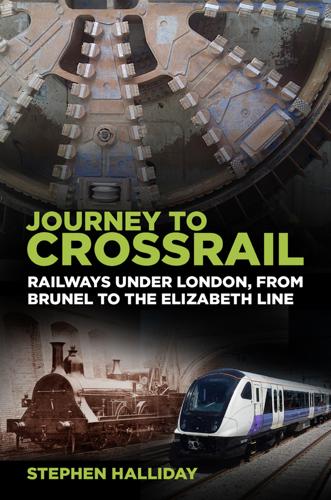
Journey to Crossrail
by
Stephen Halliday
(Jayflux via Wikimedia Commons CC SA 4.0) Crossrail Canary Wharf. (Tony Hisgett, via Wikimedia Commons CC 2.0) Crossrail tunnel, December 2013. (Matt Brown via Wikimedia Commons CC 2.0) Crossrail construction shaft, December 2013. (Matt Brown via WikimediaCommons CC 2.0) Greenwich Crossrail TBM, May 2013. (DarkestElephant via Wikimedia Commons CC SA 3.0) Removal of the temporary track at the Royal Oak Crossrail portal, London, prior to installation of overhead cable gantries and permanent track. (Marcus Rowland via WikimediaCommons CC SA 4.0) Whitechapel Crossrail work, December 2013. (Matt Brown via Wikimedia Commons CC 2.0) A mock-up of the Crossrail rolling stock displayed at the London Transport Museum depot, Acton, prior to its production.
…
But alas, the hope that they would contribute to solving London’s transport problems was not to be realised. For that we have to look elsewhere. 5 ENTER CROSSRAIL ‘The construction of two new railway lines in tunnels under central London.’ Central London Rail Study Report, 1989. CROSSRAIL ENTERS THE DICTIONARY The expression Crossrail was first used in the London Rail Study Report of 1974, prepared by the Department of the Environment (DoE) and the Greater London Council (GLC). It recommended a ‘Crossrail’ tunnel to link Paddington to the British Railways Eastern Region via Liverpool Street with intermediate stations at Marble Arch, Bond Street, Leicester Square and Holborn.
…
Cross London Rail Links (CLRL) was established as a partnership between Transport for London and Channon’s Department of Transport to carry forward the Crossrail plan. At this stage it proposed a network of routes: East-West Crossrail: Paddington to Marylebone and Liverpool Street (as proposed in 1974) with intermediate stations at Tottenham Court Road and Bond Street; cost £885 million. City Crossrail: from London Bridge to Essex Road with intermediate stations at Fenchurch Street and Liverpool Street. Essex Road is on the Great Northern Line north of King’s Cross; cost £520 million. North–South Crossrail: linking the West Coast main line from Euston to Victoria via Stations at Tottenham Court Road and Piccadilly Circus; cost £895 million.
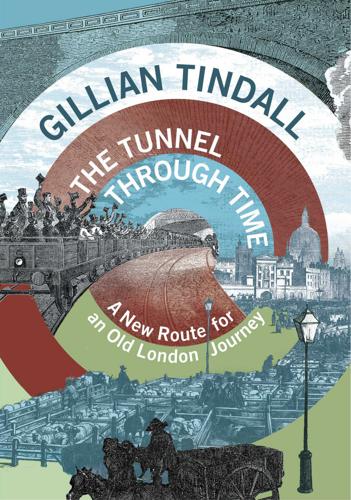
The Tunnel Through Time: A New Route for an Old London Journey
by
Gillian Tindall
Published 14 Sep 2016
Regulars have been murmuring for decades about the inadequacy of its cramped ticket hall and its rabbit-warren passages. But while a number of people, as the 2000s progressed, had vaguely heard of a project called Crossrail in the planning stage that might or might not happen, very few realised that the Tottenham Court Road station was scheduled to become a key Crossrail site and that willy-nilly the existing old-fashioned station would get swept up in this change. That was why nothing had been done about it before. Some general concept of Crossrail had been part of the 1940s planning for post-war London and over the 1950s, ’60s and ’70s the project waxed and waned again.2 But this was the heyday of motorway construction outside London and attempts at it within the metropolis, for there was a persistent belief that the future lay with the car.
…
It was successfully achieved, while a posse of engineers and workmen held their collective breath. And there has been yet another consideration to be taken into account. In the future, a Crossrail Two is planned to arrive here also. The Crossrail being constructed is an east–west route, with its central underground section running at an angle that is actually south-east to north-west. It is logical to suppose that, one day in the not-too-distant future, London will equally require a north–south route – again, one running at an angle, in counterpoint to Crossrail One, north-east to south-west. So far, this exists only as coloured lines on planners’ drawings but already the route has a name.
…
A further generation has passed, and now at last Crossrail has arrived and the forgotten dead have, in a fragmented sense, lived again. It has been their last appearance. CHAPTER VI Going East After Liverpool Street, the next Crossrail station is at Whitechapel, partway along the Mile End Road, bypassing Aldgate which lies a little further to the south where London’s wall once ran down towards the Tower. Whitechapel might also seem, therefore, the logical next place to explore physically and historically. But in fact we are going to travel fairly rapidly through it. Passing under Bishopsgate, Crossrail curves to the north, skirting the old market of Petticoat Lane (Middlesex Street), tunnelling underneath an eighteenth-century chapel-turned-synagogue in Sandys Row, and thence just south of the one-time artillery ground that, in the late sixteenth and seventeenth centuries, occupied the land that had been St Mary Spital’s.
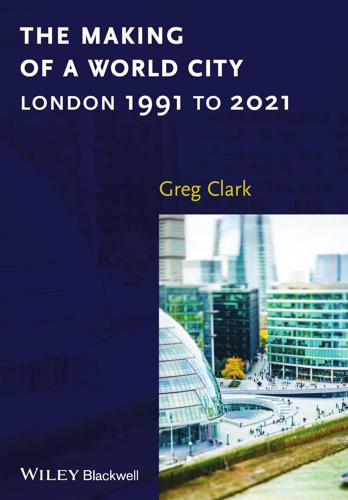
The Making of a World City: London 1991 to 2021
by
Greg Clark
Published 31 Dec 2014
But the high quality of the station design and the speed of the connection to central London and to the north-west suburbs proved critical to Canary Wharf’s growth in the 2000s. In effect, however, the prioritisation of the JLE to support the Canary Wharf development effectively put back the Crossrail development by over a decade. The 1996 central government transport strategy for London did not make a firm commitment about Crossrail, and the project was omitted from the New Labour government’s 10-year transport plan published in 2000 (Travers, 2009). The momentum for Crossrail did not pick up properly until 2004, when it appeared plausible that central government would be more amenable to assembling a funding package, to which it eventually contributed approximately one-third.
…
Phase 1 was completed in time for the 2012 Olympics and was funded through an EIB loan of £450 million, with the aim of catalysing the redevelopment of many of the more deprived suburbs in East London. TfL’s financial and lobbying power has also been important in making the case for Crossrail. Despite being subject to the central government spending review London’s evolving infrastructure platform 115 in 2010, Crossrail was finally given the go-ahead subject to £1 billion of savings. The £14.5 billion headline construction cost of the project is largely publicly funded. A Department of Transport grant of £4.1 billion, and £7.1 billion from the Mayor, comprise the bulk of the start-up costs.
…
A quarter of its £4.1 billion of capital expenditure is also funded by government grant, which helps cover key surface transport and tube line projects such as the Northern Line Underground extension to Battersea (Mayor of London, 2014d). GLA oversees capital spending of approximately £6.3 billion in 2014–2015, two-thirds of which was allocated to TfL. Much of the GLA-held capital investment is linked to Crossrail, the Northern Line extension, housing and regeneration programmes, but this only comprises a quarter (£1.6 billion) of total capital spending, with almost all the rest made possible through TfL through a combination of grants, borrowing, Crossrail funding sources and reserves. Because most of London’s internally held financing power is linked to the investment programme at TfL, the city’s investment progress recently has been skewed more towards transport than in other areas such as housing, energy, waste and water.
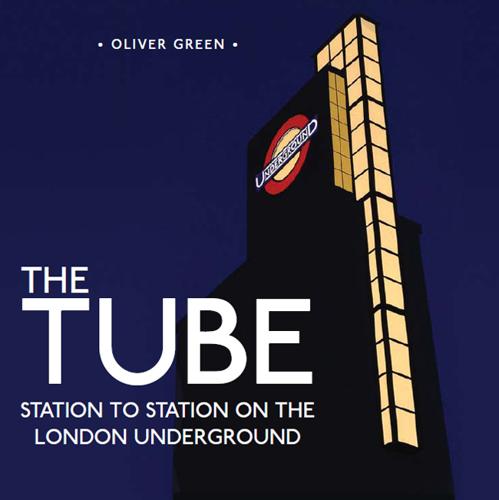
The Tube: Station to Station on the London Underground
by
Oliver Green
Published 15 Feb 2012
All three of these systems are now managed for the Mayor of London by TfL as part of an integrated multi-modal transport system for the capital. They all appear on the Tube map and use the same cashless Oyster card ticketing system. By 2018 new deep tunnels for Crossrail will be carrying mainline services from east to west below London. Technically Crossrail will not be part of the Underground, but all the new stations will have direct interchange with the Tube, and feel seamlessly integrated into London’s familiar underground travelling environment. Contrasting Edwardian styles at South Kensington, 2012.
…
Where completely new stations have been built, such as Hoxton and Haggerston, these have the quality of the best modern urban design but also make a gesture back to Holden’s classic Tube stations of the 1930s. Crossrail, a far more ambitious project, is a joint venture between TfL and the Department of Transport to build a new railway right under London linking Heathrow and Maidenhead in the west with Shenfield and Abbey Wood in the east. New tunnels will take high-frequency mainline-size trains deep below central London, with Tube interchange at seven new stations between Paddington and Canary Wharf. It will be the London equivalent of the Paris RER lines built in the 1970s, which are separate from the city’s Metro but linked to it. Cutaway impression of the multi-level Crossrail station at Canary Wharf, now under construction in a giant concrete coffer dam built within the former West India Docks.
…
Cutaway impression of the multi-level Crossrail station at Canary Wharf, now under construction in a giant concrete coffer dam built within the former West India Docks. Crossrail is scheduled to open in 2018. This huge and costly project was first proposed over twenty years ago and, like the Victoria and Jubilee lines, is only going ahead after many years of planning, debate and eventual government authorisation to spend public money. Tunnel boring began in 2012 and construction is now due for completion in 2018. Crossrail will be, in effect, London’s next Tube, but on a mainline scale. Transport for London’s wider responsibilities have made it easier to integrate services across the whole spectrum of travel, and to plan future developments on a broad scale that old London Transport was unable to achieve.
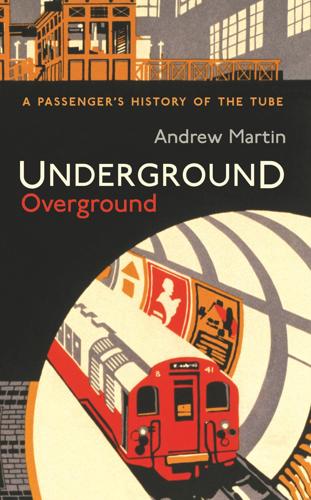
Underground, Overground
by
Andrew Martin
Published 13 Nov 2012
That other half-underground line, Thameslink, is to have a capacity increase; and Crossrail will probably be followed by Crossrail 2 (a tunnel from Chelsea to Hackney), just as High Speed 1, through Kent (which starts and ends in a tunnel), will be followed by High Speed 2, heading north (which will also start in a tunnel). Crossrail (Crossrail 1, that is – let’s keep our feet on the ground) will apparently alleviate congestion on the Central, Jubilee, Bakerloo and District Lines by ‘between 20 and 60 per cent’, which is just as well. The Tube Upgrade, which will be completed about when Crossrail opens in 2018, will provide a 30 per cent increase in capacity to a system that is unfortunately 50 per cent over capacity.
…
The Big Dig, however (it’s only a matter of time before it’s called that), will be Crossrail: 73 miles from Heathrow and Maidenhead in the west to Shenfield and Abbey Wood in the east. Crossrail, its spokespeople want to make clear, is definitely not ‘a Tube’. They don’t think the term does justice to a line with full-size trains, only 13 of whose 73 miles will be ‘in tunnel’. But those 13 miles go through central London, and where the Underground interchanges with Crossrail, its own stations will be boosted and glamorised, especially at Bond Street and Tottenham Court Road. The tunnelling shields for Crossrail will incorporate a canteen and toilets, and there is to be a tunnelling academy at Ilford, to train the thousands of employees in mole-like arts.
…
THE NEW ROAD (AND THE NEW TRAFFIC) The New Road – and we might now imagine a more violent quaking along its length, as its moment of truth approaches – had been built in 1757. In 1857 it was decided it was no longer new, and it was renamed, along most of its length, the Euston Road, while the stretches to the west and east became Marylebone Road and Pentonville Road. It ran from Paddington to the City, which may sound familiar. Crossrail, the underground express line that is supposed to be opening in 2017, will also connect those two places. The definitive London commute is from west London to the City in the east, and in his novel Keep the Aspidistra Flying (1936) George Orwell invoked ‘the strap-hanging army that swings eastward in the morning, westward at night, in the carriages of the Underground’.
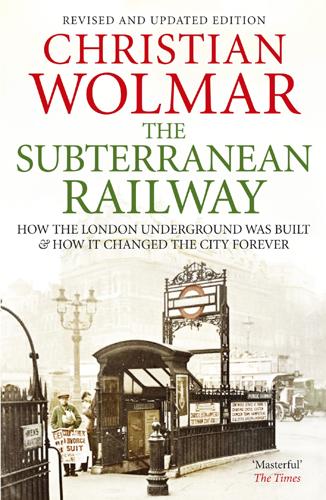
The Subterranean Railway: How the London Underground Was Built and How It Changed the City Forever
by
Christian Wolmar
Published 30 Sep 2009
Not surprisingly, though, it was vetoed by the subsequent commission because of the extensive demolition it would have required in the City, and instead we got the girdle of stations around central London served by the Circle Line. Now, however, Farringdon is being reborn as a key station in the National Rail Network and, in 2018, when both Thameslink and Crossrail are due to be completed, it will be the crossing point of the north-south Thameslink services, and the east-west Crossrail routes, as well as being on the Circle and Metropolitan lines. Trains from Farringdon will, as originally intended, serve destinations in all directions: south to Brighton, west to Maidenhead, north to Peterborough, and east to Shenfield.
…
With new trains, refurbished staffed stations and a frequent service, this has been a much welcome addition to the network, and even if officially it is not part of the Underground system, it uses Marc Brunel’s original tunnel under the Thames, once slated for abandonment. There is lots more to celebrate, too. Construction of the long-delayed Crossrail scheme which is part underground, part conventional railway is underway as I write, and Thameslink, which uses the tracks on the Underground’s second oldest section – the extended lines between King’s Cross and Blackfriars – is also undergoing major refurbishment and improvement. While neither are officially part of the Underground, they are very much integrated into the system.
…
Today, Farringdon is a busy through station for the Underground, and for Thameslink trains which run on two parallel lines that were, as we shall see in Chapter 3, built within five years of the opening of the Metropolitan to cope with the huge number of trains seeking to use this new underground railway. The station has recently been rebuilt and extended, too, in readiness for the Crossrail trains scheduled to arrive at the end of the decade. There is no trace of the fact that Farringdon was the original terminus where the banquet was held to celebrate the opening of the Metropolitan in 1863. London, in fact, pioneered two different types of underground railway, both of which were world firsts – those built using the ‘cut and cover’ method like the Metropolitan (now known prosaically as the sub-surface lines) and the deep tube lines drilled out of the London clay deep below the surface in order to avoid the clutter of drains, sewers and utilities which had already built up in Victorian times.

World Cities and Nation States
by
Greg Clark
and
Tim Moonen
Published 19 Dec 2016
However, the relationship between the Mayor, the London Assembly and the boroughs has not always been well articulated and this has been an ongoing source of dissatisfaction. This chapter also highlights the limitations of the UK’s centralised finance system, whereby London has had to ‘bid’ for financial support from central government for large ‘trophy’ projects (for example, the Jubilee Line, Millennium projects, the Olympic Games, Crossrail 1, Crossrail 2). The city’s very success in advocating for this investment has exposed limitations in an arrangement 38 World Cities and Nation States whereby projects can only be mounted one at a time, each requiring extensive case making, protracted negotiation, promotional and lobbying effort. The emphasis on eye-catching projects eclipses London’s more systemic investment needs, and the city has responded by developing long-term infrastructure plans to explain the investment gaps, priorities and costs to central government.
…
But the agenda for London is incomplete: the escalating problems of housing and house prices, transport infrastructure and, above all, airport policy need urgent attention. On key political issues such as the role of the Mayor, the Crossrail development schemes, housing supply and the addition of airport capacity in the region, business interest groups engage directly and successfully in the policy development process. The highly professional business leadership organisation London First has good channels of communication with central government, often working in tandem with the city government. It urges the national tier to be bold and decisive on major infrastructure projects (for example, Crossrail 2 and airport expansion) and to ensure that the business climate is kept attractive even during more t urbulent periods for the economy.
…
The 200‐kilometre, 72‐station metro system now forms the backbone to Paris’s long‐term development, including the creation of new neighbourhood ‘hubs’ along the route, as well as the city’s bid for the 2024 Olympic Games. Many other national governments are making special provision to help their world city improve its transport system and how it is governed. In London, the east–west Elizabeth Line (Crossrail 1) was part‐funded by the national department of transport (a £4.7 billion grant from a total package of £15 billion) and in 2016 the Chancellor has given the north–south Crossrail 2 project priority status, with a view to being up and running by the early 2030s. Moscow’s own enormous subway expansion which aims to create a more polycentric city receives only a small federal contribution but federal political support is vital for 206 World Cities and Nation States the many projects to be bankable and delivered on time.
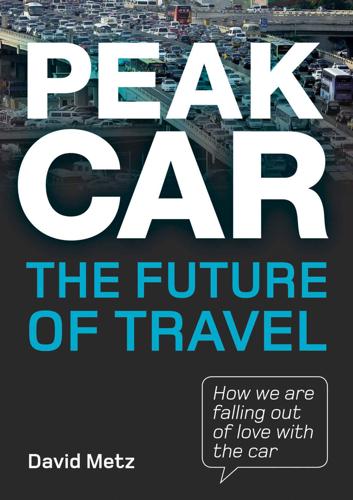
Peak Car: The Future of Travel
by
David Metz
Published 21 Jan 2014
But tunnels are expensive to construct and prone to cost overruns. A breakthrough in tunnelling technology that reduced costs substantially would be desirable but seems not in prospect. Nevertheless, 26 miles of new tunnels are being constructed under London as part of Crossrail, the new east-west rail route, and plans for Crossrail 2, a northeast-southwest line, have been issued for consultation. Some cities have constructed roads in tunnels. Part of the outer orbital road around Paris is one of the longest urban road tunnels in the world, and other sections of the network have been roofed over to reduce traffic impact and provide new public spaces.
…
A further difficulty with the case for HS2 is that in general the long‑run benefits from faster travel take the form of property development and upgrading, not time‑saving. So the question is where will the development arising from HS2 arise. Consider Crossrail, another big rail project currently under construction across London. This is a new route that tunnels under central London, emerging to the surface on the east and west sides. In my view, it is fairly straightforward to predict the resulting land use changes, particularly west of London which has traditionally been more attractive for living than the east side of the city. Construction of Crossrail will save ten minutes crossing London from the west to the financial district in the east, which will allow ten minutes more commuting time from more distant, pleasant residential locations, both by longer distance rail and by car from outlying villages to stations on the route.
…
The pioneering Docklands Light Railway showed how accessible was this new district to the City, the original financial centre. Growing demand for travel to Canary Wharf has been met by the extension of the underground Jubilee Line with its grand stations, the refurbished Overground, using the tracks of obsolete rail routes, and soon to come is Crossrail, the new east-west route being tunnelled under central London. Speedy and reliable travel by rail means that this form of public transport is acceptable to the well-paid employees, despite sardine-like packing at peak usage. Road traffic in this new quarter is quite light. Growing cities People are migrating to cities because this is where the action is.
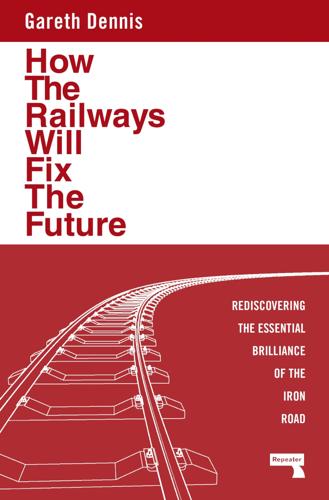
How the Railways Will Fix the Future: Rediscovering the Essential Brilliance of the Iron Road
by
Gareth Dennis
Published 12 Nov 2024
They’ve repeated this over and over again across the country. The electrification college in South Wales was rendered useless when Westminster cancelled electrification of the South Wales Main Line beyond Cardiff. The Tunnelling and Underground Construction Academy in London, built for Crossrail with the intention of being used for Crossrail 2 and the expansion of the London Underground system, has lain dormant since Crossrail’s tunnelling contracts concluded thanks to central government withdrawing all but tick-over funding from Transport for London. It’s a similar story for research and development. Perhaps the most excruciating example is the Very Light Rail National Innovation Centre in Dudley in the West Midlands.
…
In 1990, things were looking up for Britain’s railways: ridership had been climbing solidly since the mid-1980s; the average subsidy was as low as 20% of running costs, making the British system one of the most efficient in Europe; Thameslink was providing the first high-capacity suburban rail link through London, with Crossrail planning well advanced; the Transpennine Route Upgrade was being developed, intended to deliver electric services between Manchester and Leeds; and British Rail was planning for new high-speed rail links between the Channel Tunnel, London and the North of England. Then the early-1990s recession hit.
…
Vague and impotent talk of a new rail organisation has remained just that: talk. Three decades after our tale of British railway liberalisation began, how are things looking now? Ridership is back up and still climbing, but subsidies are now among the highest in Europe. Thameslink was completed in 2018; Crossrail in 2022. The Transpennine Route Upgrade is picking up pace, but electrification between Manchester and Leeds is not planned for completion until 2041, an incomprehensible half century since the plans were initiated. High-speed links across the country? Almost completely cancelled. I would not describe this as a ringing endorsement of rail market liberalisation, but there’s more at play.
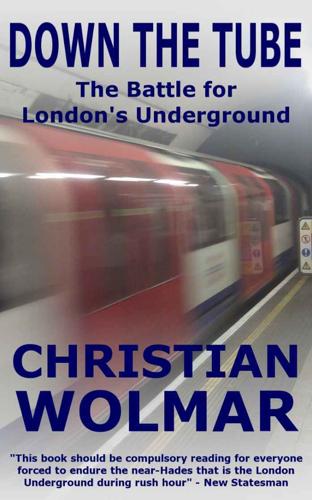
Down the Tube: The Battle for London's Underground
by
Christian Wolmar
Published 1 Jan 2002
Big projects are particularly prone to such cost increases precisely because they are such rare birds that the expertise of managing them is lost as people are never involved in one more than once. In a rational world, London would have a series of continuous projects to improve its railway network – the JLE should have been followed by Crossrail and then Chelsea-Hackney, which has now been dubbed Crossrail 2, and so on. According to Tunnicliffe, such a rolling programme would cut costs to the public sector of these projects by a third. Martin Callaghan, the project director for the London Underground PPP, says that this is a good reason for having the PPP: ‘People in LU only ever work on one line upgrade because they come along so infrequently that everyone has to learn how to do them.
…
CAPABILITY: This is a measure of the potential performance of each line in terms of the number of people it can carry per hour. The higher the capability, the lower the average journey time can be. CROSSRAIL: A proposed new main-line railway linking east and west London with a new tunnel between Paddington and Liverpool Street stations. No funding is yet available, although £154m has been allocated for preparatory work. The proposed Chelsea to Hackney line is now known as Crossrail 2. CTRL: The Channel Tunnel Rail Link, a new 62-mile railway linking the mouth of the Channel tunnel with St Pancras. DEEP TUBE LINES: The Underground lines built in tunnels bored under London, characterised by the limited height and width of the trains.
…
The service was a joint venture, between the Metropolitan and an existing railway company, the Great Western, which provided the rolling stock and drivers. There was, too, public sector involvement through investment by the Corporation of London, which was anxious to see the line succeed as a way of getting traffic off its overcrowded roads, an argument that has resonance today since the City Corporation is strongly supportive of the proposed Crossrail project which, coincidentally, is also intended to link Paddington with the City. The way the enterprise was funded bears some resemblance to the PPP structure in that it was a genuine partnership between the public and private sectors, but with two important differences: the railway had an integrated structure with track and operations under the same management, and, most important, there was a genuine risk of the shareholders losing all their capital, something which, as we shall see, is highly unlikely in today’s PPP.
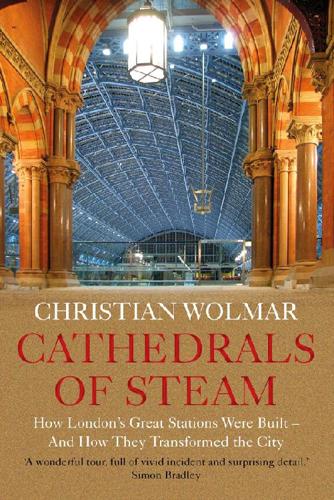
Cathedrals of Steam: How London’s Great Stations Were Built – and How They Transformed the City
by
Christian Wolmar
Published 5 Nov 2020
It was designed by Nicholas Grimshaw, whom we will meet again when we arrive at Waterloo and London Bridge, and it is difficult to argue with Oliver Green, who says it is ‘a very effective reworking… that has improved the station’s facilities but also enhanced its historic features’.5 My own favourite part is the back entrance that leads directly, via an escalator, to the canal quayside, embellished by the life-size statue of a man seemingly awaiting a train. The one big addition, unfortunately not yet completed, is the Crossrail station adjoining the main building on the West Side. This has replaced the cab entrance from Eastbourne Terrace where a long ramp used to descend to an archway that led to platform 1. Now a glass roof, oddly decorated with mock clouds that will be difficult to distinguish from the real ones, will allow light through to the Crossrail platforms as the tracks, at this stage, are just below the surface as they head off towards Bond Street, the next stop, and further east.
…
By the same author Railways A Short History of Trains Driverless Cars: On a Road to Nowhere The Story of Crossrail Railways & the Raj Are Trams Socialist? To the Edge of the World Engines of War Blood, Iron & Gold Fire & Steam The Subterranean Railway On the Wrong Line Down the Tube Broken Rails Forgotten Children Stagecoach The Great Railway Disaster The Great Railway Revolution First published in hardback in Great Britain in 2020 by Atlantic Books, an imprint of Atlantic Books Ltd. Copyright © Christian Wolmar, 2020 The moral right of Christian Wolmar to be identified as the author of this work has been asserted by him in accordance with the Copyright, Designs and Patents Act of 1988.
…
The whole thirteen-mile circular line, linking twenty-seven stations including most of the north London terminuses, cost an estimated £11m, which even accounting for inflation would translate into around £1,100m in today’s money, all paid for by private investors. It was a great bargain, given that Crossrail, the new railway under London, is costing at least £18bn. There was still no truce between Watkin and Forbes, however. They did, apparently, sit together at the opening journey on 17 September but made sure that no photo was taken of them. When public services started the following month, there was turmoil because of the companies’ mistrust of each other.
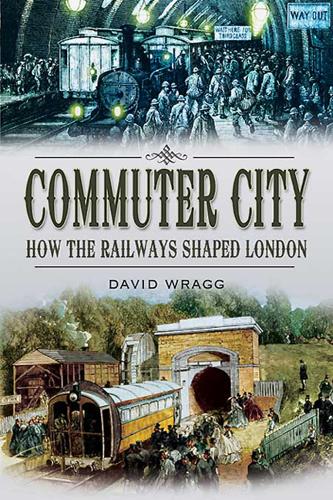
Commuter City: How the Railways Shaped London
by
David Wragg
Published 14 Apr 2010
Nevertheless, Paddington failed to offer good fast onward connections to the City and to the new development at Canary Wharf, and it eventually became clear that something faster and more direct was needed, especially with the example of Parisian RER regional expresses putting London’s railways at a disadvantage. The new project became known as ‘Crossrail’, and it has become a matter of controversy concerning both the route and even the question of whether the money spent on the Channel Tunnel Rail Link would have been better spent and benefitted more travellers if it had been devoted to Crossrail. As a new railway, it required parliamentary approval and the Crossrail Act was passed on 22 July 2008. The plan is for the line to be completed by 2017, with 200-metre long ten-car trains running at two-and-a-half minute frequencies on two routes, the first of which will be a tunnel linking Liverpool Street with Paddington, while there should also be a Chelsea-Hackney line.
…
In contrast with the early railways, which landowners and others viewed with concern, if not outright fear, many have viewed their community being left off the Crossrail map as a disaster. Early plans considered routes such as Paddington to Richmond and Kingston-upon-Thames, or to Aylesbury, High Wycombe and Watford, or in the east a service to Dartford. One problem is that the original plan anticipated generous contributions being made by property developers who would see the value of their investment rise with the completion of Crossrail. The economic problems which first became apparent in 2008 have placed such contributions in doubt. In 2009, work began at Tottenham Court Road station, a particularly difficult site where it is expected to take seven years to complete.
…
The first RER route opened in 1969. The only British equivalent is Thameslink, which sets no records for speed, while Crossrail waits some time in the future. It should be ready in the next decade, but major British projects have a habit of running late, so if it opens by 2020, that will be an achievement. Many commentators believe that the twenty-five minutes or so time saving on services from London to Paris and Brussels by the Channel Tunnel Rail Link does not justify the cost and that the money would have been better spent on Crossrail. The CTRL has also made life much less convenient for passengers to the East Midlands using St Pancras, who now have a longer walk to what amounts to a satellite station outside the terminus.
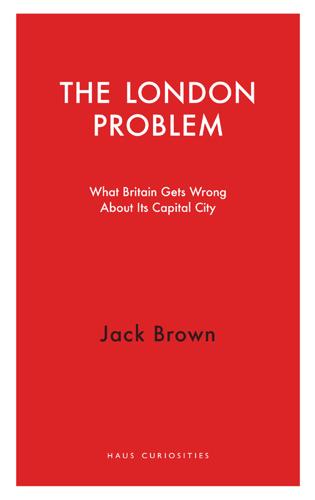
The London Problem: What Britain Gets Wrong About Its Capital City
by
Jack Brown
Published 14 Jul 2021
Additionally, Londoners alone were paying for more and more of the capital’s infra-structure – arguably unfairly, given that they also pay for investment in the rest of the country, and commuters across the wider south-east regularly use London’s transport without being asked to contribute towards its construction. As of March 2018, Transport for London no longer receives a central government grant towards its operating costs. Crossrail was part-funded by an additional tax on London-based businesses, and over half of the planned ‘Crossrail 2’ would be funded by London-only sources.55 Nevertheless, the idea that London received ‘more than its fair share’ persisted. Away from transport, other new pots of funding were established to counter the idea that London ‘gets everything’. A ‘Stronger Towns’ fund, initiated under May but ultimately delivered by her successor, Boris Johnson, was established to provide funding to ‘left behind’ towns across the country.
…
The city centre, covering just 0.01 per cent of the UK’s landmass, was responsible for 7 per cent of the nation’s jobs and 10 per cent of UK GVA.1 There were some signs that not all was well. A drop-off in Tube use suggested that more people were working from home or staying home for entertainment. Alongside the delayed delivery of Crossrail, this decrease had put Transport for London in a financially difficult spot back in 2018.2 An ongoing shortage of affordable housing was fuelling a growing cost-of-living crisis, making life in the capital less appealing for the highly skilled and mobile, and increasingly impossible for the less well off.
…
Brown, ‘Transport investment should not be an “either/or” debate’, op. cit. 54.J. Williams, ‘Huge fires have consumed northern moors for a week. Why the silence from London’s media?’, New Statesman, 2/7/18; and A. Burnham, ‘As the Northern rail crisis worsens, Grayling is asleep at the wheel’, The Times, 1/6/18. 55.‘Funding’, Crossrail 2. 56.J. Brown, ‘The government’s Stronger Towns Fund ignores London’s poor communities’, OnLondon, 6/3/19. 57.‘Sadiq Khan condemns government’s “abject failure” on housing’, Mayor of London, 23/11/17; and P. Crerar, ‘Sadiq Khan: Theresa May is most anti-London PM since Margaret Thatcher’, Evening Standard, 5/5/17. 58.
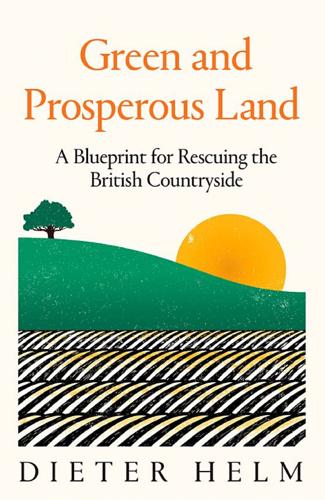
Green and Prosperous Land: A Blueprint for Rescuing the British Countryside
by
Dieter Helm
Published 7 Mar 2019
A major enhancement is well within our grasp, and the costs are not that great in getting there, especially when compared with the costs of some of the physical infrastructure ambitions described above. If, for example, HS2 costs £50 billion and Crossrail 2, say, £25 billion, think what £75 billion of environmental enhancements might look like in comparison. Add in some all-too-predictable cost overruns and these two projects will cost over £100 billion. It is unlikely that the gains from the environmental enhancements would be less than those claimed for HS2 and Crossrail. It is not just a failure of imagination that holds us back, but also a basic failure to do the economics properly. Part three of this book tackles the economics head-on, showing why the benefits exceed the costs, and in many cases way beyond the narrow margin for HS2.
…
It will be transformed from the passive, centrally controlled electricity grid of today. Take communications. By 2050 it will all be fibre; we can expect to have massively enhanced 5G mobile and fibre networks. Train networks will be more integrated at the international level, and there may be High Speed 2 (HS2), Crossrail 2 and full electrification, whether overhead or with batteries. Roads will be intelligent digital highways. We have a National Infrastructure Commission to look into all this and come up with a 30-year plan to present to each parliament.4 When it comes to the natural environment – the critical infrastructure on which all else depends – this sort of ambition is largely absent.
…
The number and diversity of plants and animals can be measured too. How many people spend how much time doing what in nature is measurable. We can also measure mental health and obesity and relate all these to the time spent with and experience of nature (or the lack of it). These outputs are every bit as measurable as the time saved by HS2 or Crossrail; by the speed of internet access, and the use time people get out of the internet; by the impacts on carbon emissions of renewable energy technologies; by the convenience and use of electric car charging and other outputs from physical infrastructures. Natural capital infrastructure is on an empirical par with physical infrastructure.
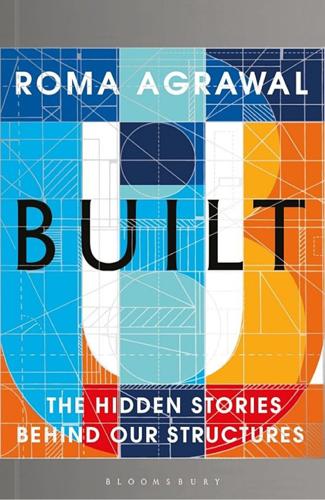
Built: The Hidden Stories Behind Our Structures
by
Roma Agrawal
Published 8 Feb 2018
The London Underground – the first underground train network in the world – was made possible because of the work of Marc and Isambard Brunel, who showed us how to build structures in very fluid soil. * To dig their tunnels, the engineers building Crossrail (London’s new train line) have been using a modern version of Marc Brunel’s first and unsuccessful idea. Brunel couldn’t get enough power to rotate giant blades, but electricity has made this simple for us. Instead of a manually operated machine, we use ‘tunnel boring machines’ (TBMs) – which are, of course, anything but boring. Each of Crossrail’s TBMs – described as ‘giant underground factories on wheels’ – is as long as 14 London buses end-to-end. The front has a huge circular cutter that spins, eating into the ground in front of it.
…
A laser guidance system makes sure that the tunnel stays on course. Behind the TBM, a complex array of arm-like devices fix concrete rings in a circle (steel could also be used) to create the tunnel lining. There’s an endearing tunnelling tradition which proclaims that the TBMs must be named – with female names – before work can start. Crossrail ran a competition to name its TBMs in pairs, since the machines work in twos, radiating in opposite directions, starting from a point. One pair is named after the monarchs of the great railway ages: Victoria and Elizabeth. Another after Olympic athletes: Jessica and Ellie; another after the women who wrote the first computer program and drew the beloved London A–Z maps: Ada and Phyllis.
…
Romano; here courtesy of wikipedia; here © exaklaus-photos; here © Heritage Images; here © Heritage Images; here © Everett Collection Historical / Alamy Stock Photo; here © Fotosearch / Stinger; here © Stock Montage; here © Washington Imaging / Alamy Stock Photo; here © Popperfoto; here © North Wind Picture Archives / Alamy Stock Photo; here © Empato INDEX Page numbers in italic refer to the illustrations 3D printing here, here, here 9/11 here Abbey Mills Sewage Treatment Works, London here, here acanthus leaves here acceleration, of sway here Acropolis, Athens here Acton, London here, here Admiralty here adobe here aeroplanes here, here aggregates here, here air gaps, fire prevention here akasha here Akashi Kaikyo Bridge, Japan here Alexander the Great here Anatolia here, here Andronicus of Cyrrhus here Angel of Independence victory column, Mexico City here aqueducts here, here, here, here, here, here aquifers here, here Arabian Sea here arches aqueducts here, here, here Cattedrale di Santa Maria del Fiore, Florence here construction here, here corbelled arches here, here Derinkuyu here forces acting on here, here, here, here, here insulae here pointed arches here quadripartite arches here, here Roman here, here, here, here, here Archimedes here, here, here, here, here, here, here Arciniega, Claudio de here, here Aristotle here Armageddon (film) here Armstrong, Lord here Arnolfo di Cambio here Arthur, Chester here ash, volcanic here, here, here Assyria here Athens here Acropolis here Parthenon here Propylaea here ‘Tower of the Winds’ here, here atoms here Atrush, River here Attenborough, David here attenuation tanks, sewage here Augustus, Emperor here Avignon here Azerbaijan here Aztecs here, here, here, here, here, here Babylon here, here, here bacteria recycling waste water here, here ‘self-healing’ concrete here sewage treatment here baking here balance, cable-stayed bridges here balconies here Bank of China Tower, Hong Kong here Baroque architecture here basements, skyscrapers here, here Basilica Cistern, Istanbul here, here Basilica di Santa Croce, Florence here Batman Begins (film) here Battersea, London here Bazalgette, Joseph here, here, here, here, here beams here, here, here, here in ancient architecture here exoskeletons here flexing here, here, here, here shape here bearings cable-stayed bridges here earthquake protection here, here Beckton sewage treatment works, London here, here beehives here, here Beijing here Belgium here ‘the bends’ here Bénézet, Saint here Berbers here Bessemer, Anthony here Bessemer, Henry here, here Bessemer Process here, here, here Bilbao here biomimicry here, here, here birds here, here ‘Bird’s Nest’ National Stadium, Beijing here Black Sea here boats Falkirk Wheel here, here The Pontoon here, here, here sailing here Boeing aeroplanes here bolts, tie-systems here Bombay Stock Exchange here, here bombs here, here Bond, James here bonds, metals here bone, biomimicry here Bosque de Chapultepec, Mexico City here bouncy bridges here braces here bricks here, here arches here, here Cattedrale di Santa Maria del Fiore, Florence here, here concrete here Indus Valley Civilisation here Jericho here load-bearing structures here manufacture here mortar here, here Roman here, here, here tunnels here, here, here Victorian architecture here bridges here Akashi Kaikyo Bridge, Japan here Brooklyn Bridge, New York here, here, here, here, here cable-stayed bridges here, here, here, here construction here Falkirk Wheel here, here forces here Forth Bridge here foundations here, here, here, here Golden Gate Bridge, San Francisco here graphene here Ishibune Bridge here, here London Bridge here, here Millau Viaduct here, here movement joints here Northumbria University Footbridge, Newcastle here, here, here, here, here, here, here Old London Bridge here, here piers here, here Pont d’Avignon here The Pontoon here, here, here Quebec Bridge here, here, here reinforced concrete here resonance here, here, here Roman here rope bridges here silk bridge here, here span here steel here stress-ribbon bridges here, here suspension bridges here, here, here, here Sydney Harbour Bridge here, here, here and temperature here 3D printing here trusses here tuned mass dampers here, here Britain Beneath Your Feet (documentary) here British Association here British Empire here Bronze Age here Brooklyn Bridge, New York here, here, here, here, here Brooklyn Engineers’ Club here Brunel, Isambard here, here, here, here Brunel, Marc here, here, here, here Brunel, Mary here Brunel, Sophia here, here Brunelleschi, Filippo here, here, here, here, here, here burdock here Burj Khalifa, Dubai here, here, here Byzantine Empire here, here cables cable-stayed bridges here, here, here, here The Pontoon here stress-ribbon bridges here, here suspension bridges here, here, here caisson disease here, here caissons here, here, here, here calcite here calcium, in concrete here, here California here Caligula, Emperor here Callimachus here Cambridge Centre for Smart Infrastructure and Construction here Canada here canals aqueducts here Falkirk Wheel here, here Nineveh here locks here, here Singapore here cantilevers here carbon adding to iron here in steel here, here, here carbon dioxide, concrete-making here carbon fibres, elevators here cast iron here Castle of the Teutonic Order, Malbork here catenary curves here, here, here Cattedrale di Santa Maria del Fiore, Florence here, here, here, here causeways here caves, Derinkuyu here Celtic axes here, here cement here, here, here, here, here see also concrete centering here, here, here, here Centre Pompidou, Paris here, here, here, here ceramics here cesspits here Chatham Dockyard here, here Chicago here DeWitt-Chestnut apartment building here John Hancock Center here, here China here, here, here, here, here, here cholera epidemics here, here, here chuna mortar here Church here cisterns here, here clay in cement here clay mines here reinforcing tunnels with here tunnelling into here see also bricks cofferdams here, here, here collapses here, here columns here, here dis-proportionate collapse here after explosions here Old London Bridge here pontoon bridges here Quebec Bridge here, here resonance and here Ronan Point here, here, here, here, here, here Tacoma Narrows Bridge here Tay Bridge here World Trade Center New York here Colosseum, Rome here, here, here columns here, here, here, here Basilica Cistern, Istanbul here, here Corinthian columns here, here exoskeletons here failure here, here insulae here Pantheon, Rome here safety calculations here World Trade Center collapse here Commission of Sewers here compression here, here arches here, here, here, here beams here cable-stayed bridges here columns and here concrete here, here domes here, here load-bearing systems here skyscraper cores here suspension bridges here computer-aided design here concrete here aggregates here, here aqueducts here arches here beams here, here carbon dioxide emissions here columns here compression here, here cracking here, here, here curved shapes here domes here in fires here floors here, here, here making here moulds here Pantheon, Rome here, here, here, here piles here, here prefabrication here, here reinforced concrete here, here Roman here, here, here, here, here, here, here ‘self-healing’ concrete here in skyscrapers here, here, here, here, here, here, here sound proofing here steel reinforcement bars here strength here and tension here, here versatility here conduits, kariz (water system) here, here Constantine, Emperor here cooking here Cooper, Theodore here corbelled arches here, here core, skyscrapers here, here, here, here, here Corinth here Corinthian columns here, here Cornwall here Cow Court, Rotherhithe here cranes here, here, here, here, here, here Crassus, Marcus Licinius here Crimean War (1853–56) here Crossness Sewage Treatment Works, Erith, London here, here Crossrail, London here crows here Crystal Palace station, London here crystals, in metals here, here culverts here, here, here curved shapes here Czech Republic here dampers earthquake protection here, here tuned mass dampers here, here, here, here, here ultra-thin skyscrapers here Dardanelles here Darius I, King of Persia here Dark Ages here Darlington here Darwin’s bark spider here, here Delhi, Iron Pillar here, here, here, here Democritus here Derinkuyu here desalination plants here deserts, water systems here DeWitt-Chestnut apartment building, Chicago here Dhaka University here diagrids here, here disease here, here, here, here dis-proportionate collapse here diving bells here, here diving boards here, here domes Cattedrale di Santa Maria del Fiore, Florence here, here, here construction here forces acting on here, here Pantheon, Rome here, here, here, here, here Doric columns here drawbridges here Driver, Charles Henry here drones here Dubai, Burj Khalifa here, here, here ductility here, here earth four elements here see also soil earthquakes here, here, here, here East India Company here East London Railway Company here East River, New York here Eastgate Centre, Zimbabwe here Edge Moor Iron Company here Edinburgh here eggs here, here, here, here Egypt here, here, here, here, here Eiffel Tower, Paris here, here, here elasticity metals here spider silk here electricity cables here, here elements here elevators here, here, here, here, here, here embankments, rivers here Empire State Building, New York here, here end-bearing piles here, here energy earthquakes here making concrete here pulleys here Epicurus here epidemics here, here Erciyes here escalators here escape routes, skyscrapers here, here exoskeletons here, here, here, here, here, here, here exothermic reactions here explosions here, here, here, here external braced frames see exoskeletons Fa Hsien, A Record of Buddhistic Kingdoms here fairy chimneys here, here Falkirk here Falkirk Wheel here, here Ferris Wheels here fertilisers here, here fibre optic cables here filters, waste water here, here fires here, here concrete and here Great Fire of London here Great Fire of Rome here Old London Bridge here World Trade Center, New York here First World War here Fisac, Miguel here flexible membrane moulds here floating bridges here, here floods here, here, here floors here, here, here, here Florence Basilica di Santa Croce here Cattedrale di Santa Maria del Fiore here, here, here, here, here Palazzo Vecchio here Ponte Vecchio here forces in arches here, here and collapses here designing bridges here in domes here, here earthquakes here frame structures here, here gravity here, here load-bearing structures here, here piles here pulleys here wind here see also compression; tension formwork, concrete here Forth and Clyde Canal here Forth Bridge, Scotland here Forum, Rome here, here fossils here foundations here bridges here, here, here, here, here building on soft ground here, here insulae here on piles here Roman here, here tunnels here four elements here Four National Taps (Singapore) here frame structures here, here exoskeletons here, here, here, here, here, here, here parts of here tie-systems here France here, here, here Franchini, Gianfranco here Fratres Pontifices here frequency here, here fresh water here friction arches here, here piles here, here weight and here From Russia with Love (film) here furnaces here, here, here Gardon, River here, here Garuda here gas explosions here geometry, irregular here Georgetown Visitation Convent here, here Germany here, here, here ‘The Gherkin’, London here, here, here, here Giotto here, here Giza, Great Pyramid here, here Glasgow here glass here, here, here, here Goh Chok Tong here Golden Gate Bridge, San Francisco here Gonabad here Gothic architecture here grape skins here graphene here, here gravity here, here, here Great Fire of London (1666) here Great Fire of Rome (AD 64) here Great North Run here, here Great Pyramid of Giza here, here ‘Great Stink’, London (1858) here Great Wall of China here, here Greece here, here, here, here ‘ground granulated blast furnace slag’ (GGBS) here Guggenheim Museum, Bilbao here guns, Crimean War here Gupta dynasty here Gyllius, Petrus here gypsum here, here, here Hadrian, Emperor here Harappa here, here Harris, Andres here Hasan here Haughwout, E.V. & Co. here, here healing here Hearst Tower, Manhattan here, here Heartlands Project, Cornwall here Hellespont here, here Heraclitus of Ephesus here Herodotus, The Histories here herringbone pattern, brick-laying here, here Hewitt, Abram here Heydar Aliyev Center, Azerbaijan here Hiero II, King here Hinduism here, here Hittites here Hoare, Edward here Hodge, Ivy here, here Hong Kong here, here Hood Canal Bridge here Horologion of Andronikos Kyrrhestes, Athens here, here horse hair, reinforcing plaster here hot-working metal here, here House of Commons, London here houses frame structures here, here insulae (apartment buildings) here, here load-bearing structures here, here on Old London Bridge here Huitzilopochtli here huts, mud here, here, here hydration here, here hydraulics, earthquake protection here Iltutmish, tomb of, Delhi here Imperial College London here India here, here, here, here, here, here Indus Valley Civilisation here, here Industrial Revolution here Institute of Making here Institution of Structural Engineers here insulae (apartment buildings) here, here intumescent paint here Iran (Persia) here, here Iraq here, here iron here cast iron here frame structures here furnaces here Iron Pillar, Delhi here, here, here, here reinforced concrete here Roman here rust here strengthening here suspension bridges here wrought iron here see also steel Iron Age here iron oxide here irregular geometry here Ishibune Bridge, Japan here, here Islamic architecture here, here Israel here Istanbul, Basilica Cistern here, here Italy here, here, here jacks, tightening cables here Japan here, here, here, here Jeddah Tower here Jenga here Jericho here Jerwan here jibs, cranes here John Hancock Center, Chicago here, here Johor River here Jordan here Jordan, River here Justinian, Emperor here kariz (water system) here, here keystones, arches here, here Khan, Fazlur here, here, here kilns, brick here, here, here Kodumanal here Kuala Lumpur here, here, here Landesgartenschau Exhibition Hall, Stuttgart here lasers here lava, volcanic here, here Leaning Tower of Pisa here, here Lebanon here Lee Kuan Yew here Leeds University here LEGO here Leonardo da Vinci here, here Levant here lime here lime mortar here limestone here, here, here Lincoln Cathedral here Lincoln’s Inn, London here loads on arches here building on soft ground here load-bearing structures here, here patterned loading here piles here preventing collapses here World Trade Center collapse here, here, here locks, canals here, here Loki here London here, here Crossrail here Crystal Palace station here Great Fire here London Overground here New London Bridge here, here Old London Bridge here, here Ronan Point, Canning Town here, here, here, here, here, here 30 St Mary Axe (The Gherkin) here, here, here, here St Pancras Renaissance Hotel here sewers here, here, here, here The Shard here, here, here, here, here, here, here, here, here, here, here Tower of London here Tube here, here, here, here tunnels here, here, here Los Angeles here McLean, Thomas here McLure, Norman here Madagascar here Madrid here, here Malaysia here, here, here, here, here Malbork here Maltesers here Manhattan here, here, here, here maps, wind here Marathon, Battle of (490 BC) here Marmara here master builders here materials choice of here science of here see also concrete, steel etc mega-skyscrapers here, here Melendiz Daglari here membrane engineering here Menander here Mendeleev, Dmitri here Merdeka Tower, Kuala Lumpur here Mesopotamia here, here metal here bonds here ductility here elasticity here molecular structure here see also iron; steel Metropolitan Board of Works, London here Metropolitan Cathedral, Mexico City here, here, here Metropolitan Commission of Sewers, London here Mexico City here, here Angel of Independence victory column here Metropolitan Cathedral here, here, here Torre Latinoamericana here Torre Mayor skyscraper here, here mica here microfiltration here Middle Ages here Middle East here Millau Viaduct here, here Miller, Abraham here Milton Keynes here Milwaukee Art Museum here minarets here mines, clay here Miodownik, Mark here Mohenjo-daro here, here molecular structure, metal here Monier, Joseph here Moon here Morocco here mortars here, here, here, here moulds, for concrete here movement joints, bridges here mud mud huts here, here, here reinforcing with straw here multi-use buildings here Mumbai here, here, here MUPAG Rehabilitation Center, Madrid here muqanni here Murphy, Senator Henry here Murrow Memorial Bridge here mythology here, here Namazu here Napoleon Bonaparte here National Museum of Anthropology, Mexico City here National Taps, Singapore here Native Americans here Nature, biomimicry here, here, here navvies here Neolithic man here Nero, Emperor here, here New York here, here, here Brooklyn Bridge here, here, here, here, here Empire State Building here, here Hearst Tower here, here 432 Park Avenue here World Trade Center here, here New York Bridge Company here New York Herald here New York Star here New York World’s Fair (1853) here NEWater here Newcastle, Northumbria University Footbridge here, here, here, here, here, here, here Newton, Isaac here, here third law of motion here, here, here newtons here Niederfinow Boat Lift here night soil trade here Nightingale, Florence here Nineveh here Norse mythology here Northumbria University Footbridge, Newcastle here, here, here, here, here, here, here octopuses here oculus (opening) here, here, here, here Old London Bridge here, here opus caementicium here Osaka here osmosis here, here, here Otis, Elisha here, here, here, here, here, here Ottoman Empire here Ovando-Shelley Dr Efraín here, here Oxford University here oxidation here oxygen, Bessemer Process here paint, intumescent here Pakistan here Palazzo Vecchio, Florence here Palm Jumeirah, Dubai here Pantheon, Rome here, here, here, here, here parabolic cables here Paris here Centre Pompidou here, here, here, here Eiffel Tower here, here, here Paris Exposition (1867) here 432 Park Avenue, Manhattan here Parker, John here, here Parthenon, Athens here patterned loading here pendulums earthquake protection here, here, here, here Metropolitan Cathedral, Mexico City here, here penthouses here Percival, Lt-General Arthur here periodic table here Persia here, here Peter of Colechurch here Petronas Towers, Kuala Lumpur here, here Philadelphia here Phoenicians here phosphorus here, here Piano, Renzo here piers, bridges here, here piledrivers here, here piles here, here, here, here, here, here Pillar, Iron (Delhi) here, here, here, here pipes, robots checking here Pisa, Leaning Tower of here, here plaster here, here plaster of Paris here Plataea here, here Pliny the Elder, Historia Naturalis here Plutarch’s Lives here pneumatic caissons here polyethylene (PE) formwork here polypropylene (PP) formwork here polystyrene blocks, formwork here polyvinylidene fluoride here Pompeii here, here Pompidou Centre, Paris here, here, here, here Pont d’Avignon here Pont du Gard aqueduct here, here Ponte Vecchio, Florence here The Pontoon here, here, here potholes here pozzolana here, here Pratt trusses here prefabrication here, here prehistoric buildings here Propylaea, Athens here Public Utilities Board, Singapore here pulleys here, here, here, here, here pumping stations, sewers here, here Purnell, Phil here pyramids here, here, here, here, here, here qanat (water system) here Quadracci Pavilion, Milwaukee Art Museum here quadripartite arches here, here quartz here Quebec Bridge here, here, here Quebec City here Qutb complex, Delhi here, here Rael, Ronald here Raffles, Sir Stamford here raft foundations here, here railways here, here, here, here rainwater here, here, here, here recycling waste water here Regent’s Canal, London here reinforced concrete here, here Renaissance here, here Rennie, John here repairs, future possibilities here reservoirs here, here resonance here, here, here, here, here reverse osmosis here, here, here rice here Richard the Raker here rivers untreated sewage in here, here, here, here see also bridges road repairs here robots here, here, here rocks, formation of clay here Roebling, Emily Warren here, here, here, here, here, here, here Roebling, John Augustus here, here, here, here Roebling, Washington here, here, here Rogers, Richard here Romans here aqueducts here, here, here arches here, here, here, here, here Basilica Cistern, Istanbul here, here bricks here, here, here bridges here, here columns here concrete here, here, here, here, here, here, here cranes here, here, here fires here foundations here, here insulae (apartment buildings) here, here iron here on materials here mortars here ‘Tower of the Winds’, Athens here, here Rome here, here Colosseum here, here, here Forum here, here Pantheon here, here, here, here, here Ronan Point, Canning Town, London here, here, here, here, here, here rope bridges here, here ropes, pulleys here rotating bridges here, here Rotherhithe, London here rubber bands here, here rubber bearings here, here rust here, here safety, skyscrapers here, here sailing here Saint Lawrence River here, here 30 St Mary Axe, London (The Gherkin) here, here, here, here St Mary’s Church, Rotherhithe, London here St Mary’s Church, Stralsund here St Pancras Renaissance Hotel, London here Salamis, Battle of (480 BC) here salty water desalination plants here reverse osmosis here, here, here San Francisco here sand, tunnelling into here sanitation here, here, here, here Saudi Arabia here Scotland Falkirk Wheel here, here Forth Bridge here Tay Bridge collapse here Scott, George Gilbert here sea urchins here Second World War here, here, here, here sedimentary rocks here ‘self-healing’ concrete here Sennacherib, King here sewers here, here, here, here Shanghai here The Shard, London here, here, here, here, here, here, here, here, here, here, here Sheffield here Sherlock Holmes (film) here The Shield (tunnel-boring machine) here, here, here Shinto here ships see boats shipworms here, here, here shock absorbers, earthquake protection here silicates, in concrete here silicon here, here silk bridge here, here Singapore here skulls, birds here skyscrapers basements here, here Burj Khalifa, Dubai here, here, here concrete in here, here, here, here, here, here, here core here, here, here, here, here elevators here, here escape routes here, here exoskeletons here, here, here, here, here, here, here explosions in here, here fires here first skyscrapers here height here, here, here mega-skyscrapers here, here piles here prefabrication here, here The Shard, London here, here, here, here, here, here, here, here, here, here, here slenderness ratios here stability systems here, here steel in here, here substructure here sway here, here, here, here and winds here slenderness ratios, skyscrapers here Snow, Dr John here Soho, London here soils piles in here subsidence here under London here water table here Spain here Spanish Pavilion, World Expo (2010) here Sparta here Spartacus here spiders, silk bridge here, here springs, wagon here, here stability systems, skyscrapers here, here stairs here, here starlings (artificial islands) here, here steel here beams here, here, here, here Bessemer Process here, here bridges here columns here core of skyscraper here, here, here, here ductility here exoskeletons here, here in fires here, here, here frame structures here hot-working here, here piles here reinforcing concrete with here, here, here rust here thermal expansion here trusses here waste materials here Stewart, James here stone bridge-building here constructing arches here load-bearing structures here Stralsund here Strasbourg Cathedral here straw, reinforcing mud with here Strépy-Thieu boat lift here stress-ribbon bridges here, here struts here Stuttgart here subsidence here, here substructure piles here, here skyscrapers here suspension bridges here, here, here, here sway, skyscrapers here, here, here, here Sydney Harbour Bridge here, here, here Syria here, here Tacoma Narrows Bridge, Washington here Taipei 101 tower here, here, here, here Taiwan here Taj Mahal, Agra here Tamil Nadu here Tarn valley here Tay Bridge here Tebitu, River here temperature bridges and here reinforced concrete and here Tenochtitlan here, here tension here, here beams here brick structures here cable-stayed bridges here, here, here concrete and here, here domes here, here metals here reinforced concrete here, here skyscraper cores here stress-ribbon bridges here suspension bridges here Teotihuacan here Teredo navalis (shipworm) here termite mounds here, here Texcoco, Lake here, here Thales here Thames, River Bazalgette’s sewers here, here New London Bridge here, here Old London Bridge here, here sewage in here Thames Tideway Tunnel here, here, here Thames Tunnel Company here, here, here thermal coefficients, reinforced concrete here Thrace here, here Three Gorges Dam here tie-systems here timber see wood toilets here, here, here Tokugawa shogunate here Tokyo here, here top-down construction method here, here, here Tornado Tower, Doha here Torre Latinoamericana, Mexico City here Torre Mayor skyscraper, Mexico City here, here toughness, spider silk here Tower Hamlets, London here Tower of London here towers cable-stayed bridges here, here suspension bridges here, here ‘Tower of the Winds’, Athens here, here and winds here see also skyscrapers treadwheels here Treasury (UK) here trees here, here, here, here Trevithick, Richard here triangles, trusses here, here, here Triton here trusses here, here, here Tuas here Tube, London here, here, here, here tubular system, exoskeletons here tuff here tuned mass dampers here, here, here, here, here tuning forks here tunnels kariz (water system) here, here Thames Tideway Tunnel here, here, here Thames Tunnel here, here, here, here tunnel boring machines (TBMs) here, here Turkey here, here, here, here turtles here, here typhoons here UN-Habitat here underground railways here, here, here, here underground structures here underwater structures here, here Union Canal, Scotland here United States Supreme Court Building, Washington here University of California, Berkeley here Urban VIII, Pope here Utica here vaults, quadripartite here, here Vauxhall Bridge, London here, here Velcro here ventilation systems here, here, here, here Vertigo (film) here Vesuvius, Mount here, here vibrations bridges here earthquakes here frequency here Victorian architecture here Vierendeel trusses here Vishnu, Lord here Vitruvius Pollio, Marcus here, here De Architectura here, here, here, here, here volcanoes here wagon springs here, here walls, wattle and daub here Wapping, London here War Office (British) here Warren, Gouverneur K. here Warren trusses here waste disposal here, here, here, here water here aqueducts here, here, here aquifers here, here bridge foundations here, here, here canals here, here cisterns here, here cofferdams here, here concrete-making here, here desalination plants here floods here inJapan here kariz here, here in London here, here osmosis here, here, here rainwater here, here, here, here recycling here reservoirs here, here in Singapore here waste water here, here, here, here water pipes here, here water table here wattle and daub here Wayss, Gustav Adolf here webs, spiders’ here, here weight and friction here gravity and here pulleys here weirs here wells here, here Westminster, London here Wheel, Falkirk here, here Wikipedia here Willis, Bruce here wind here, here wind maps here wind tunnels here, here windlasses here, here, here windows, insulae here, here women engineers here, here, here wood bridges here centering here, here, here early houses here, here formwork here piles here, here, here shipworms here wattle and daub here Woolwich Dockyard here World Expo (2010) here World Health Organization here World Trade Center, New York here, here World’s Fair, New York (1853) here wrought iron here Wuhan Greenland Centre here Xerxes, King of Persia here, here Zimbabwe here A NOTE ON THE AUTHOR Roma Agrawal is a structural engineer who builds big.
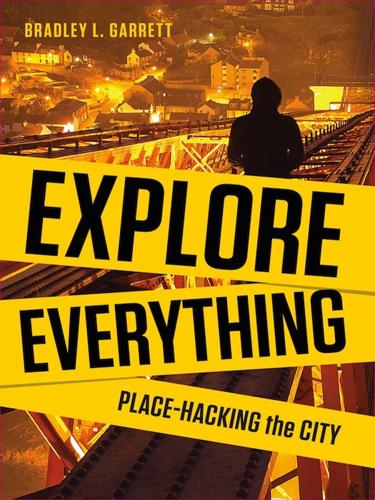
Explore Everything
by
Bradley Garrett
Published 7 Oct 2013
We understood these experiences were not isolated events: we were building completely new urban assemblages where connections, rhythms, flows, boundaries and potentiality were foregrounded. It felt increasingly like we were an integral part of London, witnesses to all its connections. Dan, sitting on the edge of the King’s Reach Tower, watching the new Crossrail construction at Blackfriars, told me, ‘I keep coming back because I feel so alive up here. It’s more real than real life.’ This sense of overcoming the ‘futile’ daily grind in the city impacted the way we interacted with one another as well. We trusted each other with our lives while climbing buildings, but we also, more personally, fed on the adrenaline rush of living dangerously together.
…
I did some research later and found that there are over twenty miles of tunnels under the great river.16 We are constantly surrounded by new tunnelling and excavation work that most people never see the interior of, and are only reminded of their existence when, for instance, workers hit a water pipe or run into a burial ground, as happened in 2013 during Crossrail excavations in Farringdon.17 As geographer Stephen Graham has written, The expanding subterranean metropolitan world consumes a growing portion of urban capital to be engineered and sunk deep into the earth. It links city dwellers into giant lattices and webs of flows which curiously are rarely studied and usually taken for granted.18 Recall, of course, that the Victorians were afraid of noxious gasses and spiritual forces that resided underground, so the state found need to convince and educate people about the benefits of subterranean infrastructure.
…
The interconnections between lines – such as at Holborn, where the Piccadilly line connects with the Central line sitting on top of it, both underground, with trains passing through each day transporting millions of people to and fro – are almost incomprehensible. Add to that that there were known bunkers underneath this tangle of tunnels and a new Crossrail system being planned and drilled underneath it all, and the vertical reality of London began to feel like one of those incredibly impossible nineteenth-century Piranesi engravings. And we were inside it. As we began to undertake more infiltration, we responded to starker infrastructural backdrops, like transit tunnels, by putting a body in frame when photographing them.
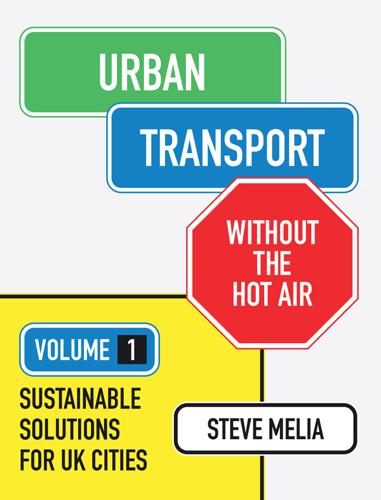
Urban Transport Without the Hot Air, Volume 1
by
Steve Melia
After serious problems with contracts let by central government for extensions to the Jubilee underground line and the DLR, the Treasury finally allowed the mayor and TfL the freedom which most European mayors would take for granted – to borrow money and manage the contract for building Crossrail, the next big transport infrastructure project. Crossrail would provide London with an east–west suburban rail line in a tunnel, similar to the RER line A, which opened in 1977 in Paris. It was one of many transport projects at different stages of planning or implementation when Johnson took over from Livingstone in 2008. The London congestion charge The most controversial transport policy initiated by Livingstone was the congestion charge, a daily charge for vehicles entering central London.
…
Admitting that existing cycle infrastructure left much to be desired, it made the bold statement that: “Timid, half-hearted improvements are out – we will do things at least adequately, or not at all.”177 This policy went directly against the national guidance by declaring that “we will segregate where possible”. This would include Dutch-style hybrid paths and a 15-mile ‘Crossrail for the bike’ – a continuous cycle route crossing London from east to west. Time will tell to what extent the reality will match up to these commitments, but from 2012 onwards there were already signs of a shift in attitudes among transport planners and some political leaders in other British cities.
…
Secondly, the physical and transport choice environment makes it easier for people who could afford a car not to do so…” He speculates about demographic changes in the capital – a young population, people moving from countries with less of a car culture – and adds that institutional arrangements are fundamental. TfL has control or influence over all forms of transport in London, and the mayor also controls strategic planning. So what difference does that make in practice? “If the tube goes down [we can] tell people in real time about their alternative options. How is Crossrail going to connect along its route? What cycle parking should we put at Euston if HS2 goes there? How do you connect buses at local town centres to the increasingly used Overground network? Those are questions which most transport authorities can’t even ask because they don’t own the answer [but TfL can, because of the breadth of its powers].”
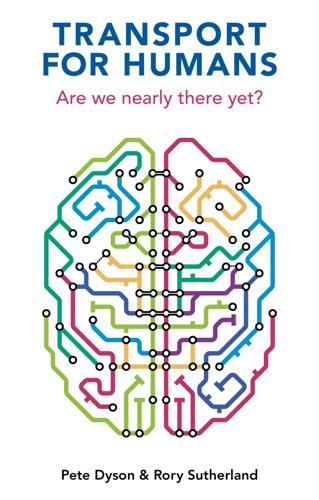
Transport for Humans: Are We Nearly There Yet?
by
Pete Dyson
and
Rory Sutherland
Published 15 Jan 2021
Authorities insist that this is only a temporary measure, calling it a ‘complicated addition to the map’.11 But if they remove it again, passengers might well end up making needlessly complex journeys, as do many tourists who visit South London. (Another new line, the Elizabeth Line (formerly known as Crossrail), will be included by default, not least because it is operated by Transport for London rather than the British–French joint venture Govia, who at the time of writing run Thameslink services.) Directions The abstraction of straight lines guides our decision making in subtle ways. We are more likely to select vertical and horizontal routes than diagonal ones: a study of nearly one million trips on the Santiago Metro in Chile found that people subconsciously estimate the ‘angular cost’ of a route and prefer paths that appear straight on their London-inspired map.12 Back in London, the Central Line gets a cognitive head-start from this effect: it is liable to be chosen even when it is not the quickest route because it looks like a straight line.
…
Public transport values of time. 23 Foster (2001). Michael Beesley and cost benefit analysis. 24 M. E. Beesley. 1973. Urban transport studies. In Proceedings of ECMT Economic Research Centre Conference, 24th Round Table, Paris. URL: www.internationaltransportforum.org/europe/ecmt/pubpdf/ECMTpub.pdf. 25 Based on Crossrail’s total cost being £18 billion for seventy-three miles and the Victoria Line having cost £7 million per mile in 1968 prices. 26 Statistic presented by M. Turró. 2021. Evidence, power and money in transport’s pandemic response. AET Webinar, 7 January (https://aetransport.org/covid-videos; https://rebalancemobility.eu/wp-content/uploads/2021/01/AET-Webminar-7-1-2021-Turro%CC%81.docx).
…
The planning fallacy ‘Over time, over budget, under benefits, over and over again.’ 10 Bent Flyvbjerg, a Danish transport geographer, coined this phrase as the Iron Law of Megaprojects. These are the massively expensive initiatives that collectively comprise roughly 8% of global GDP.11 In the United Kingdom we have Crossrail (the Elizabeth Line), HS2 and the Lower Thames Crossing motorway. France has the Grand Paris Express, Germany has Berlin Brandenburg Airport and Stuttgart 21, the United States has its high-speed lines and Boston’s Big Dig highway, Spain has mothballed airports, Pakistan has the M5 motorway and Kenya the Mombassa–Nairobi railway.
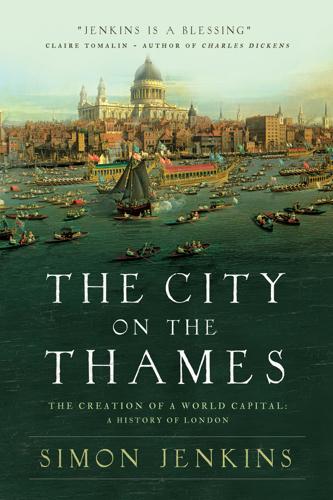
The City on the Thames
by
Simon Jenkins
Published 31 Aug 2020
Though the network was later extended piecemeal into the suburbs – notably the long Metropolitan lines to Uxbridge, Watford and Amersham – it remained in essence as left by Yerkes in his storming five-year campaign across subterranean London. ‘With no exaggeration,’ concluded Wolmar, without Yerkes, ‘many of today’s Tube lines would never have been built.’ There was no further tunnelling until the Victoria Line in the 1960s, followed by the Jubilee Line and, more recently, Crossrail. Meanwhile, in the streets above… While Yerkes’s navvies were burrowing under the capital, London above was more dilatory. Electric trams were ubiquitous in European and American cities in the 1880s, but the first ones did not arrive in London until 1891. The idea of putting rails down the centre of London’s mostly narrow streets had never appealed to business.
…
At the same time, a more down-to-earth County Hall was engineering two major benefits to movement in London, bus lanes and the new Victoria and Jubilee Tube lines. The Victoria Line, completed in 1971, was the first in half a century, finally linking a neglected swathe of north-east London with the centre. The Jubilee Line followed in 1979 and linked the north-west. They were inexpensive and unobtrusive, compared with the later Crossrail. At the same time, a Thames barrier was being constructed at Woolwich, to open in 1984. It was to protect London not so much from high tides as from storm-water surges upstream meeting an incoming tidal flow. For the time being, London seemed safe. Gunfight at Covent Garden corral While argument over the Motorway Box raged, another battle was being fought over what was to prove a last attempt by the GLC’s planners to restructure inner London.
…
A sceptical MP, Tam Dalyell, compared it instead with the court of Louis XVI. Peerages were distributed to London’s arts ‘luvvies’, who crowded the steps of Downing Street to be photographed with the JFK of the new age. Vanity projects tumbled from Whitehall into the lap of an eager capital: a bid for the 2012 Olympics, a lavishly over-engineered Tube line, Crossrail, a new Tate gallery on Bankside, even a dubiously needed super-sewer down the Thames. London had itself a sugar daddy. Investment in its infrastructure was soon running at two-and-a-half times that in the north of England, or so the northern outpost of the Institute for Public Policy Research bitterly calculated.

The Flat White Economy
by
Douglas McWilliams
Published 15 Feb 2015
Further growth is likely to be needed to enable the Flat White Economy sectors to grow. This in turn will again require local authorities to be liberal with their planning permissions and will also mean that the epicentre of the Flat White Economy will shift further East. Improved infrastructure will also be required – better road use, improved rail transport with Crossrail 2 and Crossrail 3 and improved cycle path infrastructure. Transport My Gresham lecture in May 2013 on how to improve transport in London8 underlined areas of success and failure. Public transport provision in London has been a success, but its costs have been excessive. The lecture pointed out that the late Bob Crow’s tube drivers earned more than Ryanair pilots, despite manifestly lower skill requirements and the combination of excessive pay and low productivity had built up an excessive cost base for all forms of public transport in London.
…
article=1021&context=confpapers INDEX Accenture Fintech Innovation Lab ref1 accommodation ref1, ref2, ref3 cheap ref1, ref2, ref3 cramped ref1 displacement of ref1 proximity to amenities ref1 Advanced Card Systems ref1 advertising/marketing ref1, ref2 campaigns ref1 digital ref1 investment in ref1 online ref1, ref2, ref3, ref4 role of creativity in ref1 Aerob ref1 AirWatch ref1 Alibaba ref1, ref2 floated on NYSE ref1 Allegra Strategies ref1 Allford, Simon ref1 Allford Hall Monaghan Morris ref1 Amazon.com, Inc. ref1, ref2, ref3 Apple, Inc. ref1, ref2, ref3 development kits ref1 facilities of ref1 product lines of ref1 Argentina Buenos Aires share of GDP ref1 Association of London Councils ref1 AT&T Inc. ref1 Australia ref1 Sydney ref1 Austria Vienna share of GDP ref1 Bangladesh economy of ref1 Dhaka ref1 Bank of England investment guidelines ref1 BASF SE ref1 Bell Telephones personnel of ref1 Bennet, Natalie leader of Green Party ref1 bicycles ref1 fatalities associated with ref1 sales of ref1 use in commuting ref1 big data ref1 Birmingham Science Park Aston Innovation Birmingham Complex ref1 Bold Rocket ref1 bonuses ref1 use in property market ref1 Boston Consulting Group ref1, ref2 British Bars and Pubs Association ref1 British Broadcasting Corporation (BBC) BBC Scotland ref1 Brough, Graham ref1 Brown, Gordon ref1, ref2 Burkina Faso Ouagadougou ref1 Burt, Prof Ronald ref1, ref2 Cable and Wireless assets of ref1 Cameron, David economic policies of ref1, ref2 immigration policies of ref1 Canada ref1 Montreal ref1 Toronto ref1, ref2 Vancouver ref1 capital rate of return ref1, ref2 capitalism ref1, ref2, ref3 profits ref1 Catholicism ref1 Centre for Cities ref1, ref2 Centre for Economics and Business Research (Cebr) ref1, ref2, ref3, ref4, ref5, ref6, ref7, ref8, ref9 estimates of UK economic growth ref1 offices of ref1 personnel of ref1, ref2 Centre for Retail Research ref1, ref2 champagne sales figures ref1, ref2 Channel 4 ref1 China Beijing ref1, ref2, ref3 Haidian district ref1 economy of ref1 Golden Shield firewall (Great Firewall of China) ref1 government of ref1, ref2, ref3 Hong Kong ref1, ref2, ref3, ref4, ref5, ref6 Cyberport ref1 Hong Kong Stock Exchange ref1 People’s Liberation Army (PLA) ref1, ref2 special economic zones Hangzhou ref1 Shenzhen ref1 Zhongguancun Innovation Way (Z-innoway) ref1 China Mobile ref1 China Telecom ref1 China Unicom ref1 Cisco Systems facilities of ref1 cloud computing ref1, ref2 Coalition Government immigration policy of ref1, ref2 coffee shops culture of ref1 cyber cafes ref1 growth of market ref1 Commonwealth migration from ref1 Companies House ref1 Confederation of British Industry (CBI) ref1, ref2 personnel of ref1 Confucianism ref1 Conservative Party ref1 Cooper, Wayne ref1 Corporation of London ref1, ref2, ref3 Crafts, Nick ref1 creative economy ref1 Cridland, John leader of CBI ref1 Cromwell, Oliver ref1 Crow, Bob ref1 Daily Mail ref1 Danone ref1 Danticat, Edwidge ref1 Davis, Charles ref1 Decoded ref1 Deloitte ref1 deregulation of financial markets (1986) ref1 digital economy ref1, ref2, ref3, ref4 emergence of ref1, ref2 role of creativity in ref1 Dorling, Danny ref1 Dunne, Ronan CEO of O2 (UK) ref1 Durden, Tyler ref1 Economic Journal, The ref1, ref2 Economist, The ref1, ref2, ref3 Edinburgh University ref1 Eggers, Dave Circle, The (2013) ref1 Egypt Cairo ref1 share of GDP ref1 employment ref1 growth ref1 immigrant labour ref1 in FWE ref1, ref2, ref3, ref4 job creation ref1 low-skilled jobs ref1 public sector 1112 science, technology, engineering and mathematics (STEM) ref1 growth of ref1 shortages ref1 end user demand ref1 Engels, Friedrich ref1 Entrepreneurs for the Future (E4F) ref1 entrepreneurship ref1, ref2, ref3 e.Republic Center for Digital Government and Digital Communities Digital Cities award programme ref1, ref2 Esquire (magazine) ref1 European Economic Area (EEA) ref1 migrants from ref1 contribution to fiscal system ref1 migrants from outside ref1 contribution to fiscal system ref1 European Union (EU) free movement of labour in ref1 member states of ref1, ref2, ref3 taxation regulations ref1 Eurostar ref1 Eurozone ref1, ref2 Crisis (2009–) ref1, ref2, ref3 economy ref1 Facebook ref1, ref2, ref3, ref4 IPO of ref1 Falmouth University ref1 Fan, Donald Senior Director for Office for Diversity of Walmart ref1 FanDuel ref1 Farage, Nigel leader of UKIP ref1 feudalism ref1 financial services ref1, ref2, ref3, ref4, ref5 lifestyles associated with ref1, ref2 Financial Times (FT) ref1 FT Global Top 500 Companies ref1 Fintech ref1 First World War (1914–18) ref1 fiscal transfer ref1, ref2, ref3 net ref1 potential use to cover local deficits ref1 Flat White Economy (FWE) ref1, ref2, ref3, ref4, ref5, ref6, ref7, ref8, ref9, ref10, ref11, ref12, ref13, ref14, ref15, ref16, ref17 advantages of immigration for ref1, ref2, ref3 business model for ref1 development and growth of ref1, ref2, ref3, ref4, ref5, ref6, ref7, ref8, ref9 employment in ref1, ref2, ref3, ref4 shortages ref1 impact on UK economy ref1, ref2 model of ref1, ref2, ref3 replicating ref1-ref2 role of creativity in ref1 startups in ref1 business model ref1 Flat Whiters ref1 accommodation data for ref1 social culture of ref1 fashion ref1 nightlife ref1 transport ref1 technology used by ref1 Forbes (magazine) ref1 France ref1 education system of ref1 Paris ref1, ref2, ref3 share of GDP ref1 Paris-Sarclay ref1 creation of (2006) ref1 potential limitations of ref1 promotion of ICT in ref1 Forst and Sullivan ref1 France ref1, ref2 Freeman, Prof Christopher ref1 Fujitsu Ltd. ref1 Funding Circle ref1 Gates, Bill ref1 Germany ref1, ref2, ref3 Berlin ref1 economy of ref1 Glaeser, Edward ref1 Triumph of the City, The ref1 Global Financial Crisis (2007–9) ref1, ref2 Banking Crises (2008) ref1 impact on migration ref1 UK recession (2008–9) ref1 Global Innovation Index ref1 globalisation ref1, ref2, ref3 Glyn, Andrew ref1 Goodison, Sir Nicholas Chairman of the Stock Exchange ref1 Google, Inc. ref1, ref2, ref3, ref4, ref5, ref6, ref7, ref8 acquisitions made by ref1 development kits ref1 offices of ref1, ref2 Greater London Authority (GLA) ref1, ref2 Green Party members of ref1 Gröningen Growth and Development Centre ref1 Guardian, The ref1, ref2, ref3 Harbron, Rob ref1, ref2 Harrison, Andy Chief Executive of Whitbread ref1 Harvard Business School ref1 Harvard University Harvard Lab for Computer Graphics and Spatial Analysis ref1 HCL Technologies ref1 Heisnberg, Werner uncertainty principle ref1 Hewlett-Packard Company (HP) ref1 Huawei Technologies ref1 immigration ref1, ref2, ref3, ref4, ref5, ref6 advantages for FWE ref1, ref2, ref3 economic impact of ref1, ref2 impact on social cohesion ref1 impact on wages ref1 legislation ref1 access to state benefits ref1 quota systems ref1 non-EEA ref1, ref2 restrictions on ref1, ref2, ref3 Imperial College, London facilities of ref1 India ref1, ref2 Calcutta ref1 IT sector of ref1 Karnataka ref1 Bangalore ref1, ref2, ref3, ref4 Electronics City ref1 Mumbai ref1 inequality ref1 potential role of London in ref1, ref2 sources of wealth ref1 Infosys Ltd ref1 initial public offering (IPOs) ref1 innovation ref1, ref2, ref3, ref4, ref5, ref6, ref7, ref8 hubs ref1, ref2 independent ref1 investments in ref1 projects ref1 Institute for Public Policy Research ref1 intellectual property protection of ref1, ref2 Intel Corporation ref1, ref2, ref3 facilities of ref1 personnel of ref1 International Business Machines (IBM) ref1, ref2 facilities of ref1, ref2, ref3 personnel of ref1, ref2, ref3 internet usage ref1 investment ref1, ref2, ref3 advertising and marketing ref1 capitalising of ref1 in innovation ref1 process of ref1 Israel ref1, ref2 Defence Ministry ref1 Haifa ref1 tech sector of ref1 IT spending ref1, ref2 accounting for ref1 software ref1 Italy ref1 Frascati ref1 Rome ref1 ITC Infotech India Ltd ref1 Japan ref1 economy of ref1 Tokyo ref1 share of GDP ref1 Johnson, Boris Mayor of London ref1, ref2, ref3 Johnson Press plc ref1 Judaism ref1 Kaldor, Nicholas ref1 Keynes, John Maynard ref1 Economic Consequences of the Peace, The ref1 KPMG ref1 labour ref1 division of ref1 immigrant ref1, ref2, ref3, ref4 market ref1 shocks ref1 share of income ref1, ref2 supply of ref1, ref2, ref3, ref4 Labour Party ref1 immigration policies of ref1 Lai, Ian ref1 Laserfiche ref1 Lawson, Nigel ref1 Leeds Beckett University ref1 Level 39 ref1 Liberal Democrats immigration policies of ref1 lifestyles ref1 associated with financial services ref1 Livingstone, Ken ref1 Lloyds ref1 London School of Economics (LSE) ref1 MadRat games ref1 MagnetWorks Engineering ref1 Mahindra Satyam ref1 Mainelli, Michael Gresham Professor of Commerce ref1 Malaysia ref1 Kuala Lumpur ref1 Manchester Science Parks (MSP) ref1 market capitalisation ref1, ref2 market economy ref1 Marx, Karl ref1, ref2 Labour Theory of Value ref1 Marxism ref1 Massachusetts Institute of Technology (MIT) ref1 campuses of ref1 Technology Review ref1, ref2 MasterCard ref1 McAfee, Inc. ref1 McKinsey Global Institute ref1 McQueen, Alexander ref1 McWilliams, Sir Francis ref1 Pray Silence for Jock Whittington (2002) ref1 Medvedev, Dmitry ref1 technology policies of ref1 Metcalfe, Robert ref1 Metcalfe’s Law concept of ref1 Mexico ref1 Mexico City ref1 share of GDP ref1 Microsoft Corporation ref1, ref2, ref3, ref4 facilities of ref1 Future Decoded conference ref1 personnel of ref1 Windows (operating system) ref1 Migration Advisory Committee ref1 Miliband, Ed immigration policies of ref1 MindCandy ref1 Moshi Monsters ref1 offices of ref1 Mitsui Chemicals ref1 Mohan, Mukund CEO of Microsoft Ventures in India ref1 Mongolia Ulan Bator ref1 Moore, Gordon Earle Moore’s Law ref1 MphasiS ref1 National Institute of Economic and Social Research (NIESR) ref1, ref2 Netherlands Amsterdam ref1 network effects ref1 relationship with supereconomies of scale ref1 Network Rail offices of ref1 New Scientist ref1 New Statesman ref1 Nitto Denko ref1 Nokia Oyj ref1 O2 (Telefónica UK Limited) ref1 offices of ref1 personnel of ref1 Office of Communications (Ofcom) ref1 Olympic Games (2012) ref1, ref2 online shopping ref1, ref2 Organisation for Economic Cooperation and Development (OECD) ref1, ref2, ref3, ref4 Osborne, George ref1 Outblaze ref1 Pareto Principle concept of ref1 Passenger Demand Forecasting Council ref1 PayPal ref1 PCCW ref1 Poland accession to EU (2004) ref1 Pollock, Erskine ref1 Procter & Gamble Co. ref1 property markets ref1, ref2 commercial ref1, ref2 housebuilding ref1, ref2 house/property prices ref1, ref2, ref3, ref4 property crisis (2007) ref1 residential ref1 use of bonuses in ref1 public spending ref1, ref2, ref3 Barnett formula ref1 relationship with taxation ref1 Qualcomm facilities of ref1 Reinartz, Werner ref1 Republic of Ireland ref1 research and development (R&D) ref1, ref2, ref3 definitions of ref1, ref2 expenditure ref1, ref2 hubs ref1, ref2 industrial ref1 Research Council for the Arts and Humanities ‘Diasporas, Migration and Identities’ ref1 Rogers, Everett Diffusion of Innovations (1962) ref1 Russian Federation ref1 economy of ref1 Defence Ministry ref1 Moscow ref1, ref2 Skolkovo Innovation Centre ref1, ref2 Saffert, Peter ref1 sales and advertising ref1 Sarkozy, Nicolas technology policies of ref1 Scottish Media Group (STV) ref1 Second World War (1939–45) Blitz, The (1940–1) ref1 shared accommodation ref1 Silicon Canal ref1 Silicon Roundabout ref1, ref2, ref3, ref4, ref5 Silicon Valley ref1, ref2, ref3, ref4, ref5, ref6 role of US government defence spending in development of ref1 social culture of ref1 Silva, Rohan Senior Policy Advisor to David Cameron ref1 Singapore ref1, ref2, ref3, ref4 government of ref1 Research, Innovation and Enterprise Plan (RIE 2015) ref1 research centres of ref1 A*Star Biopolis ref1 Fusionopolis ref1 Campus for Research Excellence and Technological Enterprise (Create) ref1 CleanTech Park ref1 Singapore Science Park ref1 Tuas Biomedical Park ref1 skills drain ref1 Skyscanner ref1 small- and medium-sized businesses (SMBs) ref1 small- and medium-sized enterprises (SMEs) ref1 Small Business Service Household Survey of Entrepreneurship ref1 Smith, Adam Wealth of Nations, The ref1 Smith, Michael Acton founder of MindCandy ref1 Social Democratic Party (SDP) formation of (1981) ref1 social media ref1 restrictions on ref1 Solow, Robert ref1 South Africa Johannesburg share of GDP ref1 South East Regional Assembly ref1 South Korea Seoul ref1 share of GDP ref1 Spain Barcelona ref1 Ibiza ref1 Sprint Corporation ref1 startups ref1 business models of ref1 in FWE ref1 Stigler, George ref1 supereconomies of scale concept of ref1 relationship with network effects ref1 Sweden Stockholm share of GDP ref1 Tata Consultancy Services ref1 taxation ref1, ref2, ref3, ref4, ref5 allowance ref1 corporation ref1 EU regulations ref1 National Insurance ref1, ref2, ref3 regional variation of ref1 relationship with public spending ref1 Tech City ref1, ref2, ref3 technology clusters ref1, ref2, ref3 identification of ref1 Techstars/Barclays ref1 telecommunications ref1 Thatcher, Margaret ref1, ref2 Thile, Peter ref1 trade unions ref1 Transport for London (TfL) ref1, ref2 UK Independence Party (UKIP) members of ref1, ref2 United Kingdom (UK) ref1, ref2, ref3, ref4, ref5, ref6, ref7, ref8, ref9, ref10 Bath ref1 Birmingham ref1, ref2 Bristol ref1 Cambridge ref1 Cheshire ref1 Civil Service ref1 Department for Business, Innovation and Skills ref1, ref2 Department for Transport ref1 economy of ref1, ref2, ref3, ref4, ref5, ref6, ref7, ref8, ref9 contribution of creative industries to ref1 growth of ref1, ref2, ref3, ref4, ref5 Edinburgh ref1 GDP per capita ref1, ref2, ref3, ref4, ref5, ref6 Glasgow ref1, ref2 media clusters in ref1 government of ref1, ref2, ref3 Index of Multiple Deprivation ref1 ‘Innovation Report 2014’ ref1 Hounslow ref1 labour market of ref1 Leeds ref1, ref2, ref3 London ref1, ref2, ref3, ref4, ref5, ref6, ref7, ref8, ref9, ref10, ref11, ref12, ref13, ref14, ref15, ref16, ref17, ref18, ref19, ref20, ref21, ref22, ref23 business sector of ref1 Camden ref1, ref2 City Fringes ref1, ref2 City of London ref1, ref2, ref3, ref4, ref5, ref6, ref7 cultural presence of ref1 economy of ref1, ref2, ref3, ref4, ref5, ref6, ref7, ref8, ref9, ref10 migrant labour in ref1 expansion of ref1, ref2, ref3 GDP per capita ref1, ref2 GVA of ref1, ref2, ref3 Hackney ref1, ref2, ref3 Haringey ref1, ref2 Islington ref1, ref2 Old Street ref1, ref2, ref3, ref4, ref5, ref6 share of national GDP ref1 Shoreditch ref1, ref2, ref3, ref4 Tower Hamlets ref1 transport infrastructure of ref1 Crossrail ref1 Westminster ref1, ref2, ref3 Manchester ref1, ref2, ref3 Midlands ref1 Milton Keynes ref1, ref2 Newbury ref1 Newcastle ref1 Northern Ireland ref1 Northampton ref1 Office for National Statistics (ONS) ref1 Oxford ref1 Parliament House of Commons ref1 House of Lords ref1 pub industry of ref1 Reading ref1 Salford ref1 Slough ref1 United States of America (USA) ref1, ref2, ref3, ref4 Baltimore, MD ref1 Boston, MA ref1, ref2 Buffalo, NY ref1 Cambridge, MA ref1 Chicago, IL ref1 Columbus, OH ref1 Detroit, MI ref1 economy of ref1 government of ref1, ref2 Irving, TX ref1 Jacksonville, FL ref1 Los Angeles, CA ref1 Minneapolis, MN ref1 Nashville, TN ref1 New York City, NY ref1, ref2, ref3, ref4 New York Stock Exchange (NYSE) ref1 Palo Alto, CA ref1 Portland, OR ref1, ref2 Raleigh, NC ref1 Salt Lake City, UT ref1 San Diego, CA ref1 San Francisco, CA ref1 Seattle, WA ref1, ref2 Washington DC ref1 Winston-Salem, NC ref1 University of Chicago faculty of ref1, ref2 University of London ref1 University of Sussex faculty of ref1 venture capital ref1, ref2 Visa facilities of ref1 Vodafone offices of ref1 wages ref1, ref2, ref3, ref4, ref5, ref6 depression of ref1, ref2 growth of ref1 impact of immigration on ref1 low ref1, ref2 Walmart personnel of ref1, ref2 Waze acquired by Google ref1 We Are Apps ref1 Whitbread Costa Coffee ref1 personnel of ref1 Wikipedia ref1 Wilson, Harold ref1 administration of ref1 Wipro Technologies ref1 Wired (magazine) ref1 Woolfe, Steven UKIP spokesman on migration and financial affairs ref1 World Bank ref1 Xiaomi ref1 Yorkshire Post, The ref1 ZopNow ref1
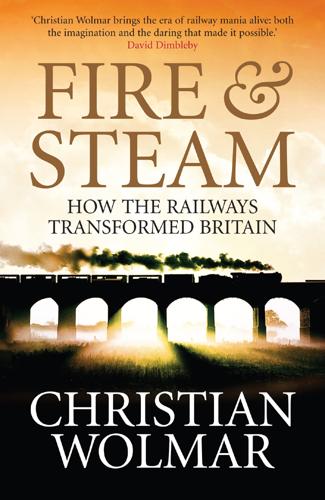
Fire and Steam: A New History of the Railways in Britain
by
Christian Wolmar
Published 1 Mar 2009
And while minor enhancements such as restoring sections of double track and improving junctions are being undertaken, there is no clear plan to deal with the overcrowding that is now making rail travel intolerable for many passengers. Progress has been painfully slow on initiatives such as double-decker trains and extended platforms to cope with demand. Plans for major schemes such as Crossrail, which involves building a tunnel under London between Liverpool Street and Paddington in order to relieve the overcrowded Underground system, have been repeatedly stalled through lack of money and, more importantly, political direction. Despite the reluctance of governments to commit more resources, the railways are no longer seen as a dying industry: the days of Beeching and Serpell are long gone.
…
D., ref1 boat trains, ref1, ref2, ref3 Bodmin, ref1 Bodmin & Wadebridge Railway, ref1, ref2 Boer War, ref1 boilers, ref1; multi-tube, ref2 Bolton, ref1 Bolton & Leigh Railway, ref1 Bon Accord, ref1 Bonavia, Michael, ref1, ref2, ref3, ref4 Booth, Henry, ref1, ref2 Boston, ref1, ref2 Bouch, Thomas, ref1 Boulogne, ref1 Bournemouth, ref1, ref2 Bournemouth Belle, ref1 Bourneville, ref1 Boulton, Matthew, ref1 Box tunnel, ref1, ref2 Bradford, ref1, ref2 Bradshaw, George, ref1 Bradshaw, Robert, ref1, ref2 Bradshaw’s rail guide, ref1 braking systems, ref1, ref2 Branch Line Committee, ref1 branch lines, ref1, ref2; closures, ref3, ref4, ref5, ref6, ref7 Brassey, Thomas, ref1, ref2, ref3 Brecon, ref1 Brentwood Gazette, ref1 Bridges, Frank, ref1 Bridgwater, Duke of, ref1, ref2, ref3 Bridgwater canal, ref1, ref2 Bridgwater, Frome & Central Somerset Railway, ref1 Briggs, Asa, ref1 Brighton, ref1, ref2, ref3; London services, ref4, ref5, ref6, ref7, ref8, ref9, ref10; electrification of line, ref11 Brighton Belle, ref1 Bristol, ref1, ref2, ref3, ref4, ref5, ref6, ref7; time in, ref8; London services, ref9, ref10, ref11, ref12, ref13, ref14, ref15; Temple Meads station, ref16; Parkway station, ref17 Bristol & Exeter Railway, ref1 British Electric Traction, ref1 British Expeditionary Force, ref1, ref2 British Rail, ref1, ref2, ref3, ref4, ref5, ref6, ref7; and Settle & Carlisle line, ref8, ref9; marketing, ref10, ref11; finances, ref12, ref13, ref14; workforce, ref15, ref16; industrial relations, ref17; reorganization, ref18; safety record, ref19; and privatization, ref20 British Railways (BR), ref1, ref2, ref3; and horses, ref4, ref5; interest payments, ref6; regions, ref7, ref8; staff numbers, ref9, ref10; and safety, ref11; switch from steam, ref12, ref13; freight wagons, ref14, ref15; livery and insignia, ref16; modernization programme, ref17, ref18; finances, ref19, ref20; route miles, ref21; see also British Rail British Railways Board, ref1, ref2, ref3 British Transport Commission, ref1, ref2, ref3, ref4, ref5, ref6, ref7, ref8 British Transport Hotels, ref1 Brixton, ref1 broad gauge, ref1, ref2, ref3, ref4, ref5; see also standard gauge Broad Street station, ref1, ref2 broccoli trains, ref1 Bromley, ref1 Brontë sisters, ref1 Brookwood, ref1 Broun, Sir Richard, ref1 Brown, Ernest, ref1 Brown, Patrick, ref1 Broxbourne & Hertford Railway, ref1 Brunel, Isambard Kingdom, ref1, ref2 Brunel, Marc, ref1 Brussels, ref1, ref2, ref3 Buchan, John, ref1 Buckinghamshire, ref1, ref2 buffet cars, ref1, ref2; see also dining (restaurant) cars Buntingford, ref1 Burkhardt, Ed, ref1 Burstall, Timothy, ref1 buses, ref1, ref2, ref3, ref4, ref5; alternative to branch lines, ref6, ref7, ref8; competition with railways, ref9, ref10; coordination with railways, ref11 Bushey, ref1 butter, ref1, ref2 Buxton, Sidney, ref1 Byers, Stephen, ref1 by-laws, railway, ref1 C2C, ref1 cable operation, ref1, ref2, ref3, ref4, ref5, ref6, ref7 Caledonian Railway, ref1, ref2; and railway races, ref3; industrial relations, ref4; and Quintinshill accident, ref5; and amalgamation, ref6 Cambrian Railway, ref1 Cambridge, ref1, ref2, ref3; see also Oxford–Cambridge line Cambridgeshire, ref1 Camden Town, ref1, ref2 Camel, river, ref1 Cameron Highlanders, ref1 Cameroon, ref1 Canada, ref1 canals, ref1, ref2, ref3, ref4, ref5, ref6; and opposition to railways, ref7, ref8; decline of, ref9 Cannon Street station, ref1, ref2 Canterbury, ref1, ref2 Canterbury & Whitstable Railway, ref1 Capitals Limited, ref1 Cardiff, ref1, ref2, ref3 Cardwell, Edward, ref1 Carlisle, ref1, ref2, ref3; see also Settle & Carlisle line Carmarthenshire, ref1 carriages, ref1, ref2, ref3, ref4, ref5; first-class, ref6, ref7, ref8; lighting, ref9, ref10, ref11, ref12, ref13; second-class, ref14, ref15, ref16; smoking, ref17, ref18, ref19; slam-door, ref20; fourth-class, ref21; royal, ref22; building, ref23, ref24; branch line, ref25; third-class, ref26, ref27; deluxe, ref28; heating, ref29, ref30, ref31, ref32; sprung-wheel, ref33; corridors, ref34, ref35, ref36, ref37; toilets, ref38, ref39; clerestory roofs, ref40, ref41; express, ref42; and wartime, ref43; LMS, ref44; Southern, ref45, ref46; women’s, ref47; open-plan, ref48; postwar, ref49; scrapped, ref50; air-conditioning, ref51, ref52, ref53, ref54; Marks 1 and 2, ref55 cars, ref1, ref2, ref3, ref4, ref5, ref6; competition with rail, ref7, ref8; age of, ref9, ref10 Carstairs, ref1 Carter Paterson, ref1 Castle, Barbara, ref1 Castle Cary, ref1 Catch Me Who Can, ref1 Catesby tunnel, ref1 cattle, ref1, ref2, ref3 cemeteries, ref1 Central Electricity Board, ref1 Chambers, Doctor, ref1 Channel Islands, ref1 Channel Tunnel, ref1, ref2, ref3 Channel Tunnel Rail Link, ref1, ref2, ref3 Charing Cross station, ref1 chariots, ref1 Charles II, King, ref1 Charlotte Dundas (steam-powered boat), ref1 Chartist disturbances, ref1 Chat Moss, ref1, ref2, ref3, ref4, ref5 Chatham, ref1, ref2, ref3 cheese, ref1, ref2, ref3 Cheltenham, ref1 Cheltenham Flyer, ref1 Chepstow, ref1 Cheshire, ref1, ref2, ref3 Cheshunt, ref1 Chester, ref1, ref2, ref3 Chester & Crewe Railway, ref1 Chester & Holyhead Railway, ref1 Chichester, ref1, ref2 Chigwell, ref1 Chiltern, ref1 Chippenham, ref1 Chislehurst, ref1, ref2 cholera, ref1 Christie, Agatha, ref1 Church Fenton, ref1 Churchill, Winston, ref1, ref2, ref3, ref4 Churchward, George, ref1, ref2 City & South London Railway, ref1, ref2 City of Truro, ref1, ref2, ref3 Clapham, ref1 Clapham Junction accident, ref1 Clayton tunnel accident, ref1 clergy, ref1, ref2 Clifton Suspension Bridge, ref1 closures, ref1, ref2, ref3; see also Beeching cuts Clyde, river, ref1 coaches, gas-powered, ref1 coal, ref1, ref2, ref3, ref4, ref5; prices, ref6, ref7, ref8, ref9, ref10, ref11; versus coke, ref12; industry, ref13, ref14, ref15; cheap or free, ref16; and wartime, ref17, ref18; and strikes, ref19, ref20; and BR losses, ref21 coal trains, ref1, ref2, ref3, ref4 coal wagons, ref1, ref2 Coalbrookdale, ref1 Coalville, ref1 Coghlan, Francis, ref1 Colchester, ref1 Coleman, Terry, ref1 Comet, ref1 commuter services, ref1, ref2, ref3, ref4, ref5, ref6, ref7, ref8; and electrification, ref9, ref10, ref11; and Southern Railway, ref12; and strikes, ref13 Compagnie du Chemin de Fer du Nord, ref1, ref2 Connex, ref1 Conservative Party, ref1, ref2, ref3, ref4; and privatization, ref5, ref6, ref7 Conway, ref1 Cook, Thomas, ref1 Cooper, Sir Astley, ref1 Co-operative Wholesale Society, ref1 Corinth, Isthmus of, ref1 Corn Laws, ref1, ref2 Cornish Riviera, ref1 Cornwall, ref1, ref2, ref3, ref4, ref5, ref6, ref7 Coronation, ref1 Coronation Scot, ref1 cottages, railway, ref1, ref2 cotton, ref1, ref2, ref3 Coulsdon, ref1 County Donegal Railways, ref1 County Durham, ref1, ref2 courts of inquiry, ref1 Covent Garden, ref1 Coventry, ref1 Craven Arms, ref1 Creevey, Thomas, ref1, ref2, ref3 Crewe, ref1, ref2, ref3, ref4 cricket, ref1 Crimean War, ref1, ref2 Crippen, Dr, ref1 Cromarty Firth, ref1 Cromford & High Peak Railway, ref1 cross-Channel steamers, ref1, ref2, ref3 CrossCountry, ref1 Crossrail, ref1 Croydon, ref1, ref2; airport, ref3 Croydon Tramlink, ref1 Crystal Palace, ref1, ref2, ref3, ref4, ref5 Cubitt, Lewis, ref1 Cugnot, Nicolas, ref1 Cumbria, ref1 cut-offs, ref1 Cycloped, ref1 Daily Telegraph, ref1 Dalhousie, Lord, ref1 Dalton, Hugh, ref1 Dandridge, Cecil, ref1 dandy cars, ref1 Darling, Alistair, ref1 Darlington, Earl of, ref1 Darlington, ref1, ref2, ref3, ref4, ref5 Dartford, ref1, ref2 Dartmoor, ref1 Dawlish, ref1 Day Scotch Express, ref1 Dee, river, ref1 Deeside, ref1 demolitions, ref1, ref2, ref3, ref4 Denison, Edmund, ref1, ref2 Denmark, ref1 department stores, ref1 Derby, Lord, ref1, ref2 Derby, ref1, ref2, ref3, ref4, ref5; railway hotel, ref6; workshops, ref7, ref8 Derbyshire, ref1 Devil’s Dyke line, ref1 Devon, ref1 Dickens, Charles, ref1, ref2; and Staplehurst accident, ref3, ref4 Didcot, ref1 diesel multiple units, ref1, ref2, ref3 Dingwall & Skye Railway, ref1 dining (restaurant) cars, ref1, ref2, ref3, ref4, ref5, ref6, ref7; withdrawn in wartime, ref8, ref9; see also buffet cars Direct Northern Railway, ref1 ‘direct’ railways, ref1 Disraeli, Benjamin, ref1 doctors, ref1 dogs, fares for, ref1 Doncaster, ref1, ref2, ref3; decoy goods yard, ref4 Dorking, ref1 Dorset, ref1 double-decker trains, ref1, ref2 Dousland, ref1 Dover, ref1, ref2, ref3 Down Street station, ref1 Drax power station, ref1 Druimachdar Pass, ref1 Dublin, ref1, ref2, ref3 Dublin & Kingstown Railway, ref1 Dundee, ref1, ref2, ref3, ref4 Dunkirk, ref1 Dunrobin, ref1 Durham, ref1 Dutton viaduct, ref1 Ealing, ref1 Earls Court, ref1 East Anglia, ref1, ref2, ref3 East Coast main line, ref1, ref2, ref3, ref4, ref5, ref6, ref7, ref8, ref9; and railway races, ref10, ref11; and accidents, ref12, ref13; expresses, ref14, ref15; publicity, ref16; and wartime, ref17, ref18; electrification, ref19, ref20, ref21; increased speeds, ref22; high-speed trains introduced, ref23 East India Company, ref1 East Kent Railway, ref1 East Lothian, ref1 East Suffolk branch line, ref1 Eastbourne, ref1, ref2, ref3 Eastern Counties Railway, ref1, ref2, ref3, ref4, ref5, ref6; industrial relations, ref7 Eastern Region, ref1 Eastleigh, ref1 Eccles, ref1 Economist, The, ref1 Eddington, Rod, ref1 Edinburgh, ref1, ref2, ref3, ref4, ref5; connection with Glasgow, ref6, ref7, ref8, ref9; suburban railways, ref10, ref11; London services, ref12, ref13, ref14, ref15, ref16, ref17, ref18, ref19; and Forth Bridge, ref20; accident, ref21 Edinburgh & Berwick Railway, ref1 Edinburgh & Glasgow Railway, ref1, ref2 Edinburgh Chronicle, ref1 Edmondson, Thomas, ref1 Edmonton, ref1 Edward I, King, ref1 Edward VII, King, ref1 Eglinton, Lord, ref1 Eiffel Tower, ref1, ref2, ref3 Eldon, Lord, ref1 electric telegraph, ref1, ref2 electrification, ref1, ref2, ref3, ref4, ref5, ref6; Southern Railway, ref7, ref8, ref9; under BR, ref10, ref11, ref12 Elgin, ref1 Elizabethan, ref1 Elliot, James, ref1 Elliott, John Blumenfeld, ref1 Ellis, Hamilton, ref1, ref2, ref3, ref4, ref5, ref6 Ely, ref1, ref2 emergency cords, ref1 Employers’ Liability Act, ref1 Engine Drivers’ and Firemen’s United Society, ref1 English Welsh and Scottish (EWS), ref1 Epping, ref1 Epsom, ref1 Ericsson, John, ref1 Esbjerg, ref1 Essex marshes, ref1 Eston, ref1 Eton College, ref1 European Commission, ref1 Eurostar, ref1, ref2, ref3 Eurotunnel, ref1 Euston station, ref1, ref2, ref3, ref4, ref5, ref6, ref7, ref8, ref9, ref10; incline and cable operation, ref11, ref12; grandeur of old station, ref13, ref14, ref15, ref16; and Great Western Railway, ref17; access to, ref18; hotel, ref19; and railway races, ref20, ref21; new layout, ref22; military trains, ref23; need for ‘double headers’, ref24; compared with St Pancras, ref25; smells, ref26; rush-hour traffic, ref27; rebuilding, ref28 evacuations, wartime, ref1 Evening Standard, ref1 Evening Star, ref1 excursion trains, ref1, ref2, ref3, ref4, ref5; and Armagh accident, ref6 Exeter, ref1, ref2, ref3, ref4, ref5, ref6; London services, ref7, ref8, ref9, ref10, ref11 Experiment, ref1 Express County Milk Supply Company, ref1 express trains, ref1, ref2, ref3, ref4 Fairlop, ref1 Faith, Nicholas, ref1 Falkirk, ref1 Falmouth, ref1 fares, ref1, ref2, ref3, ref4, ref5, ref6; regulation, ref7, ref8, ref9, ref10, ref11, ref12, ref13, ref14; below-cost, ref15; pooling system, ref16; price competition, ref17, ref18, ref19; cheap, ref20; increases, ref21, ref22, ref23, ref24, ref25; return, ref26; passenger duty, ref27; wartime, ref28; income from, ref29; and privatization, ref30 farm removals, ref1 Farnham, Lord and Lady, ref1 Farrington, ref1 Fay, Sam, ref1, ref2, ref3 Fenchurch Street station, ref1 Fenwick, Simon, ref1 ferries, ref1, ref2 Ffestiniog Railway, ref1, ref2 Fiddlers Ferry power station, ref1 Fiennes, Gerard, ref1, ref2, ref3 Fife, ref1 First World War (Great War), ref1, ref2, ref3, ref4; railways at outbreak, ref5, ref6, ref7, ref8, ref9, ref10, ref11; impact on railways, ref12, ref13, ref14, ref15, ref16, ref17; armistice signed on train, ref18; legacy for railways, ref19, ref20 fish, ref1, ref2, ref3, ref4, ref5 Fleetwood, ref1 Flint, ref1 fly shunting, ref1 Flying Scotsman, ref1, ref2 fog, ref1, ref2, ref3 Folkestone, ref1, ref2; Pavilion Hotel, ref3 food and drink, ref1, ref2, ref3, ref4 football, ref1, ref2 Forbes, James, ref1, ref2 Fort William, ref1 Forth Bridge, ref1, ref2, ref3, ref4, ref5 Fowler, Sir Henry, ref1 fox-hunting, ref1, ref2 France, ref1, ref2, ref3, ref4, ref5, ref6; and First World War, ref7, ref8, ref9, ref10; high-speed network, ref11, ref12, ref13; and Second World War, ref14, ref15; and electrification, ref16 Fraser, Tom, ref1 free trade, ref1, ref2 Freeman, Roger, ref1 freight services, see goods services French, Benjamin, ref1 French, Sir John, ref1 French Revolution, ref1 Freud, Clement, ref1 Frome, ref1 fuel cells, ref1 Furness Railway, ref1 Further North Express, ref1 Gallipoli, ref1 Galloway, ref1 Garnkirk & Glasgow Railway, ref1 Garstang & Knott End Railway, ref1 Gas Light & Coke Company, ref1 Gatwick Express, ref1, ref2 Geddes, Sir Eric, ref1, ref2 General Railway Workers Union, ref1, ref2 General Strike, ref1 George V, King, ref1 Germany, ref1, ref2; and electrification, ref3; ICE trains, ref4; Maglev accident, ref5 Gerrards Cross, ref1 Gifford & Garvald Railway, ref1 Giles, Frank, ref1 Gill, Eric, ref1 Gimbert, Ben, ref1 Giza, Great Pyramid, ref1 Gladstone, William, ref1, ref2, ref3, ref4, ref5 Glamorgan, ref1 Glasgow, ref1, ref2, ref3; London services, ref4, ref5, ref6, ref7, ref8, ref9, ref10, ref11; connection with Edinburgh, ref12, ref13, ref14, ref15; suburban railways, ref16, ref17; workmen’s trains, ref18; evacuation, ref19; port of, ref20; and electrification, ref21 Glasgow & South Western Railway, ref1, ref2 Glasgow, Paisley & Greenock Railway, ref1 Glasgow–Stranraer branch line, ref1 Glastonbury, ref1 Gloucester, ref1, ref2, ref3 GNER, ref1 Godstone, ref1 Golden Arrow, ref1, ref2 golf courses, ref1 Golspie, ref1 Gooch, Daniel, ref1, ref2, ref3, ref4 Gooch, John, ref1 Gooch, Thomas, ref1, ref2 goods (freight) services, ref1, ref2, ref3, ref4, ref5; number-takers, ref6; separated from passenger services, ref7; charges and receipts, ref8, ref9, ref10, ref11, ref12; decline in, ref13, ref14, ref15, ref16, ref17; average speeds, ref18; and wartime, ref19; scrapped, ref20; and Settle & Carlisle line, ref21; under privatization, ref22 Gosport, ref1, ref2 Goswick accident, ref1 Gourvish, Terry, ref1, ref2, ref3, ref4 Grace, W.
…
G., ref1 gramophone records, ref1 Grand Junction Railway, ref1, ref2, ref3, ref4, ref5, ref6, ref7; amalgamation, ref8, ref9 Grangemouth, ref1, ref2 Granite City, ref1 Grantham, ref1; accident, ref2 Granville Express, ref1 Gravesend, ref1 Gravesend & Rochester Railway, ref1 Gray, Thomas, ref1, ref2 Grayling, Chris, ref1 Great Central Railway, ref1, ref2, ref3, ref4; creation of, ref5; and cooperation, ref6; publicity, ref7; fish services, ref8; and wartime, ref9, ref10; closure, ref11 Great Eastern Railway, ref1, ref2, ref3, ref4, ref5, ref6, ref7; maps, ref8; and amalgamation, ref9, ref10; wine list, ref11 Great Exhibition, ref1, ref2 Great Heck accident, ref1 Great North of Scotland Railway, ref1 Great North Road, ref1 Great Northern Advertiser, ref1 Great Northern Cemetery, ref1 Great Northern Railway, ref1, ref2, ref3, ref4, ref5, ref6, ref7, ref8; route to Scotland and railway races, ref9, ref10, ref11; costs, ref12; track length, ref13; topography, ref14; enters price war, ref15; and Midland Railway, ref16, ref17; introduces third class, ref18; locomotive confiscated, ref19; begins selling coal, ref20; and amalgamation, ref21, ref22 Great Western Magazine, ref1 Great Western Railway, ref1, ref2, ref3, ref4, ref5, ref6; gauge, ref7, ref8, ref9; costs, ref10; speeds, ref11; and parliamentary trains, ref12; and royal travel, ref13; freight services, ref14; track length, ref15; time system, ref16; expansion, ref17; consolidation, ref18, ref19, ref20; and Welsh lines, ref21; and Irish services, ref22; treatment of poorer passengers, ref23; offers hunters’ tickets, ref24; financial difficulties, ref25; accidents, ref26, ref27; telegraph system, ref28; wages and bonuses, ref29, ref30; industrial relations, ref31, ref32, ref33; provident society, ref34; working hours, ref35; first corridor train, ref36; and railway races, ref37, ref38; modernization and improvements, ref39, ref40; and cooperation, ref41; publicity, ref42, ref43, ref44, ref45; loss-making services, ref46; and Helston line, ref47; compensation claim, ref48; and amalgamation, ref49, ref50, ref51; profitability, ref52, ref53, ref54; introduces warning system, ref55; livery, ref56, ref57; service improvements, ref58; hundredth anniversary, ref59; and wartime, ref60, ref61; workshops, ref62; and diesels, ref63 Greeks, ancient, ref1 Green, Chris, ref1 Greenwich, ref1 Greenwich Mean Time, ref1 Gresley, Nigel, ref1, ref2 Gretna Junction, ref1 Grey, Earl, ref1 Grimsby, ref1, ref2 ‘Grouse Traffic’, ref1 Guildford, ref1 Gunnislake, ref1 hackney cabs, ref1 Hackworth, Timothy, ref1, ref2, ref3 Halifax, ref1 Hall, Stanley, ref1 Hampshire, ref1 Hampton Court, ref1 Hardy, Thomas, ref1 Harford, Edward, ref1 Harrow, ref1; accident, ref2 Hartlepool, ref1 Harwich, ref1, ref2 Hastings, ref1, ref2, ref3 Hatfield, ref1; accident, ref2, ref3 Heath, Edward, ref1, ref2 Heathrow Express, ref1 Hedley, William, ref1 Helmsdale, ref1 Helston, ref1 Henry, Thomas, ref1 Henshaw, David, ref1, ref2, ref3 Herapath, John, ref1 Hereford, ref1, ref2 Hertfordshire, ref1, ref2, ref3, ref4 Hetton Colliery, ref1 Hewitt, John, ref1 High Speed One, ref1, ref2 High Speed Train (HST), ref1, ref2, ref3 High Street Kensington station, ref1 High Wycombe, ref1 Highbridge, ref1 Highland Railway, ref1; wartime service, ref2, ref3 Highlands, ref1, ref2, ref3, ref4, ref5 Hill, Rowland, ref1 Hitchin, ref1 Holborn Viaduct station, ref1 Holden, Michael, ref1 Holiday Haunts, ref1 holiday trains, ref1, ref2, ref3, ref4, ref5 Holland, ref1, ref2 Holyhead, ref1, ref2 hooliganism, ref1 Hopton incline, ref1 Hornsey, ref1 horses, ref1, ref2, ref3, ref4, ref5, ref6, ref7, ref8; on Swansea & Mumbles Railway, ref9; and railway gauge, ref10; and Stockton & Darlington Railway, ref11; and Liverpool & Manchester Railway, ref12, ref13; bolting, ref14, ref15; and trams, ref16; and railway amalgamation, ref17; under BR, ref18, ref19 hotels, ref1, ref2, ref3, ref4 Hounslow, ref1 Household Words, ref1 housing, ref1, ref2, ref3, ref4, ref5 Howson, Martha, ref1 Huddersfield, ref1 Hudson, George, ref1, ref2, ref3, ref4, ref5, ref6, ref7, ref8 Hughes, Henry, ref1 Huish, Captain Mark, ref1, ref2, ref3 Hull, ref1, ref2, ref3, ref4, ref5; Royal Station Hotel, ref6; Paragon station, ref7, ref8 Hull & Barnsley Railway, ref1, ref2 Hull Trains, ref1 Hundred of Manhood & Selsey Tramway, ref1 Hunterston, ref1 Huskisson, William, ref1, ref2, ref3, ref4 Hyde Park, ref1 Immingham, ref1 Imperial Airways, ref1 India, ref1, ref2, ref3 Ingleton, ref1 innkeepers, ref1 InterCity, ref1, ref2, ref3, ref4, ref5 InterCity ref1 trains, ref2 interlocking, ref1, ref2 International Exhibition, ref1, ref2 Invergarry & Fort Augustus branch line, ref1 Invergordon, ref1 Inverness, ref1, ref2, ref3, ref4, ref5 Ireland, ref1, ref2, ref3, ref4, ref5, ref6; first railways, ref7, ref8, ref9; potato famine, ref10, ref11; steamer services, ref12; railway network, ref13; railway gauge, ref14 Irish Mail, ref1, ref2, ref3 Irish Sea, ref1 Iron Times, ref1 Irwell, river, ref1, ref2 Isle of Wight, ref1, ref2 Italy, ref1 James, William, ref1, ref2, ref3, ref4 Japan, ref1, ref2, ref3; bullet trains, ref4 Jellicoe Specials, ref1, ref2, ref3 Jessop, William, ref1, ref2 John O’Groats, ref1 joint stock companies, ref1 junctions, ref1, ref2, ref3, ref4; flat, ref5 Kelly, Phil, ref1 Kelvedon & Tollesbury Light Railway, ref1 Kemble, Fanny, ref1 Kent, ref1, ref2, ref3, ref4, ref5, ref6; and wartime, ref7, ref8, ref9, ref10 Kent & East Sussex Railway, ref1 Kentish Town accident, ref1, ref2 Kenyon & Leigh Railway, ref1 Kete, John, ref1 Kew, ref1 Killingworth Colliery, ref1 Kilsby tunnel, ref1, ref2 King’s Cross station, ref1, ref2, ref3, ref4, ref5, ref6, ref7; Cambridge trains, ref8; access to, ref9; Great Northern Hotel, ref10, ref11; elegance, ref12, ref13; serves commuter lines, ref14; cemetery services, ref15; and railway races, ref16; and ‘Beer Trains’, ref17; smells, ref18; LNER services, ref19, ref20 Kinnaber Junction, ref1 Kitchener, Lord, ref1 Labour Party, ref1, ref2, ref3, ref4, ref5, ref6, ref7; and rail privatization, ref8, ref9, ref10, ref11 Ladbroke Grove accident, ref1, ref2 Laing, Samuel, ref1 laissez-faire, ref1, ref2, ref3, ref4, ref5 Lake District, ref1 lamps, ref1 Lancashire, ref1, ref2, ref3, ref4, ref5, ref6, ref7, ref8 Lancashire & Yorkshire Railway, ref1, ref2, ref3, ref4, ref5, ref6 Lancaster, ref1 Land’s End, ref1 landowners, ref1, ref2, ref3, ref4, ref5, ref6, ref7, ref8, ref9 Launceston, ref1 Lawson, Nigel, ref1 Lecount, Peter, ref1 Lee Navigation, ref1 Leeds, ref1, ref2; cotton industry, ref3; London services, ref4, ref5, ref6, ref7, ref8, ref9; excursions, ref10; investors, ref11; railway access, ref12; station refurbishment, ref13; and electrification, ref14 Leeds & Selby Railway, ref1 Leeds Institute, ref1 Leicester, ref1, ref2, ref3, ref4, ref5, ref6, ref7 Leigh & Bolton Railway, ref1 Letchworth Garden City, ref1 level crossings, ref1, ref2; keepers, ref3, ref4 Lewisham, ref1, ref2; accident, ref3 light railways, ref1 Light Railways Act, ref1, ref2 Lightfoot brothers, ref1 Lincoln, ref1 Lincolnshire, ref1, ref2, ref3, ref4, ref5, ref6 liners, ref1, ref2, ref3 liveries, ref1, ref2, ref3 Liverpool, ref1, ref2; and building of Liverpool & Manchester Railway, ref3, ref4, ref5, ref6; population, ref7; ban on locomotives, ref8, ref9; tunnel approach, ref10; cable-operated approach, ref11, ref12; and opening of Liverpool & Manchester Railway, ref13; railway connections, ref14, ref15, ref16, ref17, ref18; and horse-races, ref19, ref20; and postal service, ref21; suburban railways, ref22; workmen’s trains, ref23; viaduct bombed, ref24; and electrification, ref25 Liverpool & Manchester Railway, ref1, ref2, ref3, ref4, ref5, ref6, ref7, ref8, ref9, ref10; double track, ref11, ref12, ref13, ref14; surveys, ref15, ref16; costs, ref17, ref18; dividends and profits, ref19, ref20, ref21; gauge, ref22, ref23; choice of steam power and Rainhill trials, ref24; cable-operated section, ref25, ref26; opening, ref27, ref28, ref29; passenger services, ref30; tickets and fares, ref31; carriages, ref32; omnibus connections, ref33; goods services, ref34; mail services, ref35, ref36; track length, ref37, ref38, ref39; excursions, ref40; military transportation, ref41; amalgamation, ref42; telegraph system, ref43; working conditions, ref44; industrial relations, ref45 Liverpool Courier, ref1 Liverpool Mercury, ref1, ref2 Liverpool Overhead Railway, ref1 Liverpool Street station, ref1, ref2, ref3, ref4; Cambridge trains, ref5; building and cost, ref6, ref7; and electrification, ref8; collaboration with private sector, ref9; and Crossrail scheme, ref10 Liverpool Times, ref1 Llanelli, ref1 Llangynog-Llanrhaeadrym-Mochnant branch line, ref1 Lloyd George, David, ref1, ref2 Locke, Joseph, ref1, ref2, ref3, ref4; and Grand Junction Railway, ref5, ref6 Locomotion, ref1 Locomotion No. ref1, ref2 Locomotive Act (Red Flag Act), ref1 Locomotive Exchanges, ref1 locomotives: Duchess class, ref1; coal-burning, ref2; Crampton, ref3; captured by other companies, ref4; builders, ref5; care of, ref6; speed records, ref7, ref8; impact of war, ref9, ref10, ref11; Royal Scots class, ref12; Star and Saint classes, ref13; King and Castle classes, ref14, ref15; Southern, ref16; streamlining, ref17; Pacific class, ref18; investment in, ref19; post-war, ref20; private, ref21; diesel, ref22, ref23, ref24, ref25; survival of steam, ref26, ref27, ref28; electric, ref29, ref30, ref31; Deltic diesels, ref32 London: first railway, ref1; first railway connections, ref2, ref3, ref4; suburbs, ref5, ref6, ref7; termini, ref8, ref9, ref10, ref11, ref12, ref13; growth in railway connections, ref14, ref15, ref16, ref17, ref18, ref19, ref20; suburban and commuter railways, ref21, ref22, ref23, ref24, ref25, ref26, ref27, ref28, ref29, ref30, ref31, ref32, ref33; and postal service, ref34; time in, ref35; exhibition traffic, ref36, ref37, ref38; Midland Railway gains access, ref39; impact of railways, ref40, ref41; workmen’s trains, ref42; population growth, ref43; railway accidents, ref44; and Great Central connections, ref45; tramways, ref46; and wartime, ref47, ref48, ref49, ref50, ref51; and amalgamation, ref52, ref53; integrated transport system, ref54, ref55; wartime evacuation, ref56; and electrification, ref57 London & Birmingham Railway, ref1, ref2, ref3, ref4, ref5, ref6; surveys, ref7; stagecoach connections, ref8; fares, ref9; investors, ref10; and royal travel, ref11; freight services, ref12; amalgamation, ref13, ref14; departure times, ref15; railway cottages, ref16 London & Chatham Railway, ref1, ref2 London & Croydon Railway, ref1 London & Greenwich Railway, ref1; right-hand running, ref2 London & North Eastern Railway (LNER), ref1, ref2, ref3; network, ref4; hotels, ref5; livery, ref6, ref7; accidents, ref8; rugby specials, ref9; food and drink, ref10; service improvements, ref11; publicity, ref12, ref13; profitability, ref14, ref15; split at nationalization, ref16; electrification, ref17 London & North Western Railway (LNWR), ref1, ref2, ref3, ref4, ref5, ref6, ref7; dominant position, ref8; value and profitability, ref9; enters price war, ref10; and Midland Railway, ref11; and Welsh lines, ref12; and Irish services, ref13; sells coal, ref14; working hours, ref15; and route to Scotland, ref16; and railway races, ref17; braking system, ref18; Preston accident, ref19; modernization and improvements, ref20; Sunny South Special service, ref21; electrification, ref22; publicity, ref23; compensation claim, ref24; and amalgamation, ref25, ref26; livery, ref27 London & South Western Railway, ref1, ref2, ref3, ref4; and railway races, ref5, ref6; reputation, ref7; electrification, ref8, ref9; consolidation, ref10; wartime service, ref11; and amalgamation, ref12, ref13 London & Southampton Railway, ref1 London Bridge station, ref1, ref2, ref3, ref4 London, Brighton & South Coast Railway, ref1, ref2, ref3, ref4; collapse, ref5; Clayton tunnel accident, ref6; strike, ref7; Southern Belle service, ref8; electrification, ref9, ref10; and amalgamation, ref11, ref12 London, Chatham & Dover Railway, ref1, ref2, ref3 London Electric Railway, ref1, ref2 London, Midland & Scottish Railway (LMS), ref1, ref2, ref3, ref4, ref5; network and inventory, ref6; livery, ref7; service improvements, ref8, ref9; publicity, ref10; workforce and repair facilities, ref11; profitability, ref12, ref13; and wartime, ref14, ref15 London Midland Region, ref1, ref2 London Necropolis Railway, ref1 London Passenger Transport Board, see London Transport London Post Office, ref1 London, Tilbury & Southend Railway, ref1 London Transport, ref1, ref2, ref3, ref4; headquarters, ref5 London Underground, ref1, ref2, ref3, ref4, ref5, ref6; Metropolitan Line, ref7, ref8; District Line, ref9, ref10; Circle Line, ref11, ref12; impact on shopping habits, ref13; and electrification, ref14; public relations, ref15; and wartime, ref16, ref17, ref18, ref19, ref20; women on, ref21; Bakerloo Line, ref22; Piccadilly Line, ref23; increase in passengers, ref24; overcrowding, ref25; rails, ref26; see also Metropolitan District Railway; Metropolitan Railway London–York Direct Railway, ref1 Londonderry, ref1 looms, steam-powered, ref1 Lord’s cricket ground, ref1 lorries, ref1, ref2, ref3, ref4, ref5, ref6, ref7 Lossiemouth, ref1 Loughborough, ref1 Louis Philippe, King, ref1 Louis XIV, ref1 Ludgate Hill station, ref1 Luton, ref1 Lutterworth, ref1 Macadam, John, ref1, ref2 Macclesfield, ref1 MacDonald, Ramsay, ref1 McGrath, Thomas, ref1 MacGregor, John, ref1, ref2 Macmillan, Harold, ref1 Maglev trains, ref1 Maiden Lane station, ref1 Maidenhead, ref1 Maidenhead Bridge, ref1 Maidstone, ref1 mail order goods, ref1 mail services, ref1, ref2, ref3, ref4, ref5, ref6 Major, John, ref1, ref2, ref3 Mallaig, ref1 Mallard, ref1 Manchester, ref1, ref2, ref3, ref4, ref5, ref6; steam-powered looms, ref7; and building of Liverpool & Manchester Railway, ref8, ref9; population, ref10; indifference to railway, ref11; weavers, ref12; railway connections, ref13, ref14, ref15, ref16, ref17, ref18, ref19, ref20, ref21, ref22; investment in railways, ref23; and excursions, ref24, ref25; railway access, ref26; workmen’s trains, ref27; and railway races, ref28; Great Central connections, ref29, ref30; and electrification, ref31 Manchester & Birmingham Railway, ref1 Manchester & Leeds Railway, ref1, ref2 Manchester & Sheffield Railway, ref1 Manchester, Sheffield & Lincolnshire Railway, ref1, ref2, ref3, ref4, ref5 Marlborough, ref1 Marly, gardens of, ref1 Marples, Ernest, ref1, ref2, ref3 Marsh, Richard, ref1, ref2 marshalling yards, ref1, ref2 Marylebone Cricket Club, ref1 Marylebone station, ref1, ref2, ref3, ref4, ref5 Mayhew, Henry, ref1 Meakin, George, ref1 Mechanics’ Institutes, ref1 Mendips, ref1 Merchant Navy, ref1 Mercury, ref1 Merstham, ref1 Merthyr Tydfil, ref1 Metroland, ref1 Metropolitan District Railway, ref1, ref2, ref3, ref4 Metropolitan Railway, ref1, ref2, ref3, ref4, ref5, ref6; introduces Pullman service, ref7; profitability, ref8; and Great Central Railway, ref9; and amalgamation, ref10 middle classes, ref1, ref2, ref3, ref4, ref5, ref6, ref7 Middlesbrough, ref1, ref2, ref3, ref4 Middlesex, ref1, ref2, ref3 Middleton Colliery, ref1 Mid-Kent Railway, ref1 Midland Counties Railway, ref1, ref2 Midland Railway, ref1, ref2, ref3, ref4, ref5, ref6; enters price war, ref7; access to London, ref8; promotes third class, ref9, ref10; and Irish services, ref11; Pullman service, ref12; industrial relations, ref13; and Settle & Carlisle line, ref14, ref15, ref16; braking system, ref17; coal trains, ref18; and wartime, ref19, ref20; and amalgamation, ref21, ref22, ref23, ref24 Milford Haven, ref1 military trains, ref1, ref2, ref3, ref4, ref5 milk, ref1, ref2, ref3, ref4 Milne, Sir James, ref1 Milton Keynes, ref1 mines, ref1, ref2, ref3, ref4, ref5, ref6 Molesworth, Sir William, ref1 Monmouthshire, ref1 Monmouthshire Railway and Canal Company, ref1 monopolies, ref1; Huish and, ref2, ref3; Victorian fear of, ref4, ref5; privatization and, ref6 monorails, ref1, ref2 ‘monster trains’, ref1 Moon, Sir Richard, ref1, ref2 Morecambe Bay, ref1 Moretonhampstead, ref1 Moreton-in-the-Marsh, ref1 Morning Post, ref1 Morrison, Herbert, ref1 Morton, Sir Alastair, ref1 Motherwell, ref1 motorways, ref1, ref2, ref3, ref4, ref5 Mumbles, ref1 munitions trains, ref1, ref2, ref3 Myers Flat swamp, ref1, ref2 Napoleon Bonaparte, ref1 narrow gauge railways, ref1, ref2, ref3 National Rail Enquiry Service, ref1, ref2 National Union of Railwaymen (NUR), ref1, ref2, ref3, ref4, ref5, ref6 National Wages Board, ref1 nationalization, ref1, ref2, ref3, ref4, ref5, ref6; opposition to, ref7, ref8, ref9; and amalgamation, ref10, ref11, ref12; and industrial relations, ref13 navvies, ref1, ref2, ref3, ref4; deaths of, ref5, ref6, ref7; shipped to Crimea, ref8 Nesham’s Colliery, ref1 Network Rail, ref1, ref2, ref3, ref4 Network SouthEast, ref1, ref2, ref3 New Southgate, ref1 New Zealand, ref1 Newbury, ref1, ref2 Newcastle, ref1, ref2, ref3, ref4; London services, ref5, ref6, ref7, ref8, ref9, ref10; Tyne bridges, ref11; wartime evacuation, ref12 Newcastle & Carlisle Railway, ref1, ref2, ref3, ref4; freight services, ref5 Newcastle & Darlington Railway, ref1 Newcastle Courant, ref1 ‘Newcastle Roads’, ref1 Newcomen, John, ref1 Newington Green, ref1 Newport, ref1 newspaper specials, ref1 newspapers (press), ref1, ref2, ref3, ref4; and railway advertising, ref5, ref6; and railway races, ref7; and rail strike, ref8; Southern Railway campaign, ref9; opposition to nationalization, ref10; switch to road haulage, ref11; opposition to privatization, ref12 Newton, ref1, ref2 Newton Abbot, ref1, ref2 Newtown, ref1 night traffic, ref1 Nightall, Jim, ref1 Nock, O.
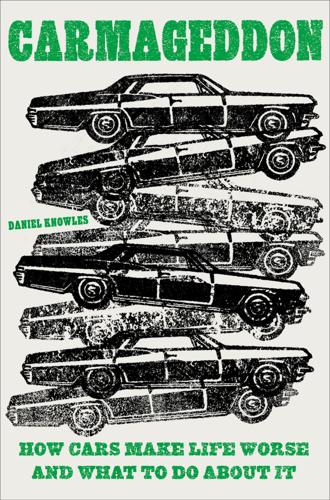
Carmageddon: How Cars Make Life Worse and What to Do About It
by
Daniel Knowles
Published 27 Mar 2023
I would not put it past Musk to achieve some way of reducing the cost of tunnelling too. And if he did, it would be an incredible achievement. Digging underground tunnels is one of the things that makes creating new public transport systems in densely-populated cities such as London and New York so expensive. The cost of Crossrail, for example, the new underground train line that recently opened in London, was £18.7 billion (about $25 billion), or about £2,000 for every man, woman, and child in the city. The Second Avenue Subway in New York, which will initially add just three more stations, is costing $6 billion. The vast majority of the cost in both cases was accounted by the difficulty of tunneling through the ground.
…
Dallas and Houston both have streetcar systems that are underused. Tram systems in America are often a problem for the same reason the old ones died—they have to share space with cars. In the UK, many worry about the ballooning cost of HS2, the first new intercity railway to be built since the nineteenth century, and about Crossrail, the latest new London underground railway, which opened more than two years late and went significantly over budget. But this public transport investment is dwarfed by the enormous subsidy that governments everywhere give to driving, not only through free roads, to drive on and park on, but also through zoning regulations that force businesses to provide free parking.
…
INDEX OF SEARCHABLE TERMS Abraham, Reuben advertisements Africa Amsterdam, Netherlands Apple Arab oil embargo Arizona asthma Atlanta, Georgia bankruptcy batteries Benz, Karl bicycles electric lanes safety sharing programs Biden, Joe Birmingham, England BMW bridges Buchanan, Colin buses lanes for carbon dioxide (CO2) emissions car crashes car manufacturers corruption on deaths on electric vehicles lobbying by scandals car ownership costs of Indian mass subsidies for US Centers for Disease Control, US Chevrolet Chicago, Illinois children China cities free parking impacting public transportation in rebuilding sprawl in traffic in US city/urban planners free parking and Jacobs on postwar traffic and Clean Air Act, US climate change coal cobalt Cobbs, Courtney commutes computers congestion charges Copenhagen, Denmark copper Corporate Average Fuel Economy, US corruption costs car ownership gasoline housing of living parking public transportation road Coventry, England COVID-19 pandemic crimes Crossrail danger Dearborn, Michigan deaths deaths, vehicular US debts decline population transportation Delanoë, Bertrand demand for parking for roads Democratic Republic of Congo Democrats Department for Transport, UK Department of Energy, US Department of Transportation, US Detroit, Michigan developing countries diesel Disney, Walt Driscoll, Bridget drivers/chauffeurs drivers’ licenses drunk driving Edsell, Arthur Eisenhower, Dwight Eisenhower Expressway electric bicycles electric vehicles CO2 emissions and Tesla employment engines internal combustion England See also specific cities Environmental Protection Agency (EPA), US ethanol Europe European Research Group on Environment and Health (EUGT) European Union Experimental Prototype Community of Tomorrow (EPCOT) exports expressways factories Faulkner, William federal government, US fines Fitzgerald, F.
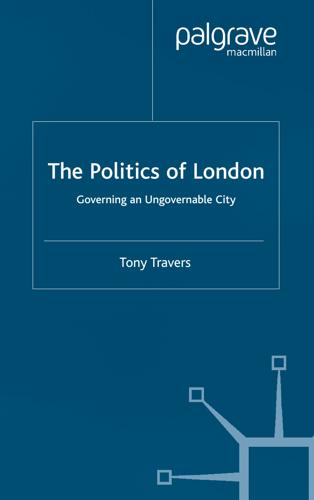
The politics of London: governing an ungovernable city
by
Tony Travers
Published 15 Dec 2004
The long-running problems associated with redeveloping Wembley Stadium, the South Bank arts complex and King’s Cross railway lands all attest to London’s incapacity to deliver major projects. The World Athletics Championships, due to take place in London in 2005, had to be abandoned by Britain because it proved impossible to arrange the construction of a stadium at Picketts Lock in Enfield. Even more importantly for the city’s future, efforts to build CrossRail (an east–west suburban express rail line), a new Underground line from Hackney to southwest London or even new tram services in outer borough centres proved to be as laborious and uncertain in the early years of the GLA as they were during the period of network governance that preceded it. Similarly, the capital needs a major convention centre.
…
To undertake a major project such as a railway line or a sports stadium requires the creation of a complex partnership, generally involving public and private sector institutions. Despite the centralization of taxation and financial control, Whitehall itself is unwilling to lead key projects because it fears the political consequences of failure. As a result, public or private bodies – such as CrossRail, a joint company set up by the mayor and the Strategic Rail Authority, or, at Wembley, the Football League – must attempt to lead partnerships set up to deliver the project. Even where the mayor plays a role in such a partnership, or, as at Wembley, provides additional finance, the overall scale of resources needed is far too great for any institution other than central government to provide.
…
J. 20 173 Clos, Joan 172 Cobbett, W. 2 Index Coleman, Brian 85 Coleman, Neale 86, 87, 102 Cologne 160, 161, 169 Communautés Urbaines (France) 158 communes 162, 164, 165, 166 Communist Party of Great Britain 77t community groups/minority organizations 29, 30, 44, 74 ‘community power’ studies (1950s, 1960s) 13–14 commuters/commuting 28, 142, 147, 156, 170, 192, 207 competitiveness 143, 151 Confederation of British Industry (CBI, 1965–) 33, 89, 150, 151, 153 congestion charging 66, 94, 116, 119, 135, 144, 152, 190–3, 195, 202, 210 Conservative Party 6, 18, 43, 44, 47, 84, 97, 100, 150, 191, 196, 203 change of leader (1990) 32 committee stage, GLA Bill 64 control of LCC (1907–34) 26 GLC elections 28–9 London Assembly election (2000) 74, 76, 77t London mayoral election (2000) 74, 75, 76t manifesto commitment to abolish GLC (1983) 30 members of the London Assembly 114 no lack of experience in London government 134 opposition (1997) to proposed creation of GLA 52 selection of candidate for Mayor 69–70 ‘wanted Assembly to consist of borough council leaders’ 197 see also Thatcher government; Major government consultants (external/freelance) 103, 125–6 Corrigan, Professor Paul 160 corruption 25, 123 council officials 199, 200, 201 councillors 44, 49, 199 Index county boroughs 24 county councils 50, 51 County Hall xi, 29, 30, 45, 82, 90, 104, 191 Crawley 10 Crick, Michael 69 crime 7, 96, 115–17, 130, 145, 185, 194–5, 206–7 New York 179, 180 Crime and Community Safety Commission 96 CrossRail 204 Crow, Bob 91 Croydon 27, 43, 85 Croydon Tramlink 145 Cultural Strategy Group 93–4, 95 culture 163, 190, 194t, 195t, 210 cultural identity 156 cultural policy 61 Cunningham, John 44 Cutler, Horace 29 d’Arcy, Mark 41, 68, 71, 72 Dagenham: Ford works 84, 87, 96 Dali, Salvador 82 Davis, John 41 de Gaulle, Charles 162 death rates 7 decentralization 162, 170–1, 172 Defoe, Daniel 2 Delanoë, Bertrand 165 Delivering the Mayor’s Policies (KPMG, 2001) 125, 126 democracy 25, 37, 151, 157, 158, 197, 209 and decentralization (Spain) 170–1 Italian reforms 163 democratic deficit 37, 56, 197–8 départements (counties), 164, 165 Department of Environment 32 Department of Environment, Transport, and Regions (DETR) 51, 52, 53, 63–4, 78, 129, 201, 202 Department of Trade and Industry (DTI) 33, 128t, 130, 186f, 198, 202 Department of Transport 32 Department for Transport, Local Government, and Regions (DLTR): 221 Housing, Urban Policy and Planning Division 51 deputy mayor 59, 64, 88, 95, 118, 120–2, 183 New York 179 see also Gavron DETR see Department of Environment, Transport, and Regions devolution 8–9, 16, 47–50, 162, 166, 170, 199, 202, 209 Diepgen, Eberhard 166 Directory of Services (GOL) 37 Dobson, Frank 20, 47, 52, 71–4, 76t Dowding, K. 15 Duffy, John 86 Duncan Smith, Iain 196 Dunleavy, P. 15, 60 Duvall, Len 85, 90, 98, 100, 115, 117, 195 East England Development Agency (EEDA) 137 East Ham 27 East London 33, 141 East London Partnership (1989-) 149 economic development/growth 61, 86, 91, 140–1, 144–5, 149, 157, 190, 194–5 economic development strategy (EDS) 119, 130–1, 148 Economic and Social Research Foundation xii economies of scale 155, 157 education 28, 141, 145, 148–9, 179, 195 Edward the Confessor 21, 40 elections 25, 128t domestic British political tradition 159 GLC 28–9, 75, 77, 104 London Assembly (2000) 9, 76–8, 116 London borough 43, 62, 77 London mayoral (4 May 2000) 9, 68–76, 77, 105, 116, 122; Conservatives 69–70; Liberal Democrats 68–9; New Labour 70–3; 222 elections: domestic – continued results 73–6; selection of candidates 68–73 London mayoral (2004) 69, 78, 122, 209–10 New Labour gerrymandering (anti-Livingstone) 73 referenda 44, 51, 59, 61, 62–3, 160, 173 turnout 62, 75, 209 UK general (1983) 30 UK general (1992) 32 UK general (1997) 45–7, 48, 51, 52, 55, 58, 78, 160 UK general (2001) 50 overseas Barcelona 171 Berlin 167 Paris 164 electorate (Greater London) 114 Elephant and Castle 40 emergency planning 194 employment 3–4, 10, 94, 139 Employment Zones 13 Enfield 88 ‘enforcers’ 108, 111, 121 see also Kiley England 158 devolution 201–3 regional government 50, 52, 198, 205 ‘urban renaissance’ required 10 England and Wales 3, 115, 118, 138 English Heritage 186f, 209 environment 86, 116, 119, 139, 173, 188, 190, 194–6, 198, 207 Environment Commission 96 equalities 188, 190 Equalities Policy Commission 96 ‘equalities unit’ 133 Ernst and Young 82 Essex 141 Estate Action 12 euro 152 European Union 13, 36, 37, 39, 98 Evans, Roger 85 Evening Standard 46, 69, 73, 92, 193 Index Fabians 26 Fares Fair policy (GLC) 29–30, 62, 85, 146, 191 Featherstone, Lynne 85, 98 federal government 162, 169–70, 174 Ferguson, Anthony 82 Filkin, Geoffrey (Lord Filkin) 160 financial services 7, 131 fire/fire brigade 24, 26, 28, 31, 57, 86, 188, 197, 198 Fire Commissioner (formerly Chief Fire Officer) 93, 131, 185, 208 Fletcher, Simon 74, 84, 86–8, 102 Ford Dagenham 84, 87, 96 Foster, Norman 82 Four World Cities (Department of Environment, 1996) 34 Fowle, Michael 81 fragmentation 156, 157, 205 France/French state 159, 162, 164, 165 Francis, Ted 70 Franco, F. 170–1 Frankfurt 30, 169 Frye, Michael 90 Fuchs, Ester 54, 160 functional boards/bodies 57, 58f, 107, 108, 119, 124, 125, 126–32, 133, 145, 153, 179, 183, 186f, 198 appointments, accountability, budget, policy, scrutiny 128t see also LDA; LFEPA; MPA; TfL funding 12–13, 36, 39, 48, 60–1, 142, 144 Gaebler, T. 19 Garside, Patricia 41 Gatwick Airport 28 Gavron, Nicky 85, 88, 98, 117, 120–2 ‘gearing’ 134 Germany 158, 159, 162, 163 Gidoomal, Ram 74, 76t Giuliani, Rudolph 55, 108, 121, 177, 179–80 GLA see Greater London Authority GLA, Economics 103 Glaister, Stephen xiii, 91–2 GLATT see Greater London Authority Transition Team Index GLC see Greater London Council Glennerster, Howard xiii global cities 9–10, 131 global competition 157 globalization 13, 34, 152 GOL see Government Office for London Goode, David 101 Gordon, Ian xiii, 7 Gore, Al 20 Gorman, Teresa 70 government definition 20 role 19–20 Government Office for London (GOL) 33, 36, 37–8, 51–4, 58–9, 61, 63–4, 78, 81–3, 96, 142–3, 148, 184–5, 187f, 202 government regional offices 51 Greater London characteristics 5–8 city-wide committees/planning 85, 112, 198 competitive advantage 183 context 1–20 democratic deficit 56, 197–8 demography xi, 5, 22, 139, 157, 190, 191, 192 economic revival (1990–) xi, 157, 190, 191 economic diversity 6–7, 131 employment 4t, 4 global city 9–10 ‘governable, but only in parts, and from time to time’ 210 hybrid system 181 ‘increased awareness’ of 38 metropolitan government 155–8 ‘needs major convention centre’ 204 neighbourhoods versus city as whole xii ‘new politics’ 77 ‘no longer bastion of Middle Britain’ 74 political and economic definitions 147, 157–8 problems xi protean city 182–3 223 reform 51–5 road to reform (1997–2000) 43–79 size 2–5 ‘successful’ 183 ungovernability 182–210 Greater London Assembly xii, 96–100, 104, 137, 138, 141, 143, 150, 154, 178, 185, 186f, 192, 193–7 assessments ‘irrelevant’ 205 ‘lacks sufficient power’ 197 needs greater capacity to hold Mayor to account 210 obstacles to progress 103 public hearings (lacking) 116, 119 research facility needed 120 ‘self-inflicted problems’ 117 shortcomings 193–4, 197 ‘should be given greater veto powers’ 208 election and composition election (2000) 74, 76–8 frequency of meeting (statutory requirement) 96 Labour–Liberal Democrat protocol (2000) 97, 98 New Labour group 88 political composition 76, 97, 99–100, 114, 135 research and support staff 87 voting system 60–1 formation proposed 59 proposed powers and functions (1997 green paper) 56–7 provisions of GLA Act (1999) 65 functions appointments 124, 125, 208 budgetary process 133–4, 208 check and balance on the Mayor 209 committees 114–15 inquiries 194 mayoral question time 116, 120, 194 no appropriate precedents 136 policy-shaping 103–4 powers 65 224 Greater London Assembly: functions – continued role 113–17 scrutiny role 97, 103–4, 116, 117–20, 124, 135, 194–7, 208 subject matter of press notices (2002) 194t subject matter of reports (2000–02) 195t veto powers 126 writing reports 194 Greater London Assembly Committees Appointments 98–100, 106, 115, 123, 125, 194t Budget 98, 100, 116, 195 Economic Development 97, 196 Environment Policy 98 Housing 98 Planning 97, 98 Standing Orders 97 Transport Performance 98, 196 Transport Policy 98, 196 Greater London Assembly members 83, 92, 101, 200 background 84–5 duties 86 Greater London Authority (GLA, May 2000-) 2, 8, 9, 14, 42, 138, 141, 148, 150, 154, 185, 210 assessments devolution of power from Whitehall (required) 206–7 ‘long-term solution’ 206 distinction between strategy and provision ‘blurred’ 146 effectiveness 183–4 further reform 205–9 ‘hamstrung’ 184 ‘hybrid form of government’ 81 limited powers 207 ‘messy territory’ 110 ‘neither local authority, nor regional government’ 201 novelty 86 powers ‘minimal’ 201 re-balancing of power with boroughs (required) 207–8 Index reforms to internal processes (required) 208 senior officials ‘side-lined’ 200 creation 49, 80–105, 122–6 commitment to create 48 Conservative party opposition (1997) to creation of 52 early days 83–6 favoured by business sector 151 green paper (July 1997) 52–5, 56–8, 61, 63, 197 preparation period 85–6 proposed (Labour manifestos, 1987, 1992, 1997) 45 proposed powers 59 ‘virtually no run-in period’ 105 voting system 59–60 financial matters budget 65–6, 80, 105, 132–4, 184 dependence upon central government funding 142 financing arrangements (1998 white paper) 61 funding of election campaigns 60–1 limited tax-raising powers 66, 201, 202 functions core 80 ‘enhancing prosperity’ 197, 198 executive and scrutiny duties 117–20, 124, 128t ‘firm leadership’ 197, 198, 204, 207–8 in practice 106–36 staffing 105, 192; appointment of officials 124, 125, 128t core staff 80, 81, 126 number of staff (GLC comparison) 104 miscellaneous and central government 142–3, 197–9 continuity of membership from GLC 85 headquarters 82 Index Greater London Authority: miscellaneous – continued implications for British government 199–205 lessons from other countries 180–1 separation of powers 67, 110 see also functional bodies; Greater London Assembly; Mayor of London Greater London Authority Act (1999) 8, 61, 63–8, 86, 92–3, 107, 110, 161, 184–5, 188, 201–2, 208 appointment of deputy mayor 120 appointment of LDA chiefs 131 change required (appointment of GLA staff) 126 functional bodies 127, 128t functions of Assembly 96, 118 functions of Mayor 118 London business ‘broadly got what it wanted’ 152 Mayor’s powers over functional bodies 124, 129 provisions 65 spatial development 121 ‘systemic difficulties’ 125 Whitehall efforts to limit powers of proposed Mayor 129 Greater London Authority officers 100–4, 185 background 100–1 Chief Executive 88, 100, 183, 185 Director of Administration 101 Director of Communications 101 Director of Strategy 101 Head of Governance 100–1 provision of effective services for mayor/assembly 102 senior directors 100 Greater London Authority Transition Team (GLATT) 80–3, 84, 87, 102, 104, 105, 122 Greater London Council (GLC, 1965–86) xi, 1, 12, 21, 22, 28–31, 204 abolition (1986) 8, 9, 22, 29, 30–1, 36, 38, 85, 104–5, 149, 153, 166, 197, 198 225 aftermath 35 creation (1965) 64, 158 ‘Labour Effect’ 43–4 lessons for the GLA 65–6 members (1964) 85–6, 101 ‘ten thousand officials’ 58, 104 Greater London Development Plan (GLDP, 1965-) 29 Greater London governance 11–18, 137–54 ‘balkanized’/fragmented 182, 205 bi-partisanship (1986-) 38 democratic deficit 37 ‘eccentric approach’ 42 economic competitiveness and social cohesion 11–12, 17, 19 foreign influences 159–61 further reform 205–9, 210 governing without a centre: benefits 38–9 governing without a centre: costs 36–8 history 21–42 international comparisons 155–81 interregnum (1986–2000) 31–5, 138, 145 key statutory bodies 186–7f long-term realities 205–6 new pragmatism 35–9 origins 21–3 pessimism xi, 14 regional aspect 138–42 spatial mismatch (between economic and political regions) 3–5 ‘special case’ 8 steering, rowing, drowning, waving 18–20 systemic instability xi, 1, 42, 181 ‘too fragmented, too weak, and often incapable’ 210 ‘272 appointed bodies’ (1993) 36 ‘weak’ 154, 182, 205, 210 see also GLC, LCC, MBW Greater South East 3, 4t, 138–42, 157–8, 203 Green, Pauline 71 Green Belt 2, 10, 28 226 green paper: proposed creation of GLA (July 1997) 52–5, 56–8, 61, 63, 101, 197 Green Party 60, 73–4, 84, 88, 95, 97, 114, 134, 173, 196 London elections (2000) 75–8 Greenwich 44, 85, 98 growth coalitions 16, 161 growth machines 14 Gummer, John 34, 46 Hackney 62, 204 Hague, William 20, 52 Hall, John 35, 149 Hall, Sir Peter 3 Hammersmith and Fulham 44 Hamwee, Baroness (Sally) 85, 97, 98, 117, 135–6, 195–6 Hanham, Baroness (Joan) 70 Hargreaves, David 81 Haringey 62, 85, 88 Harris, Lord (Toby) 33, 62, 71, 85, 93, 97, 98, 115, 117, 118, 130, 196 Harrow 43 Harty, Bernard 81 Hastings, Max 69 Havering 62 Hayward, David 87 Hayward, Isaac 27 health 28, 29, 61, 96, 145, 147–8, 194t, 195t, 195 health authorities 127, 149, 187f Health Commission 95 Health and Education Action Zones 13 Heath, Samantha 85, 98 Heathrow Airport 9–10, 40, 112, 141, 149 Hebbert, Michael 38, 150 Herbert Commission 28, 30 Heron Tower 152 Heseltine, Michael 46, 91, 140 higher education 127, 148, 207 Highways Agency 131, 133, 147, 187f Hill, David 53 Hill, Keith 52 Hillier, Meg 85, 98, 99 Hillingdon 62 Hobbes, T. 21 Index Hockney, Damian 76t Hodgkinson, Mike 91–2 Holmes, Chris 95 Holtham, Gerry 81 Home Office 53, 54, 61, 64, 78, 93, 129, 131–2, 186f, 201, 202 Home Secretary 22, 63, 93, 127, 128t, 130, 131, 198, 206 homelessness 35, 39, 185, 207 hospitals 210 housing 11, 23, 26, 27–8, 29, 33, 35, 37, 39, 96, 112, 116, 119, 139, 142, 144–5, 148–9, 184, 210 Housing Commission 95, 96 Housing Corporation 100, 148, 186f, 209 Howlett, Elizabeth 85 Hughes, Robert 62 Hughes, Simon 55, 62, 64, 68–9, 81 hundred-mile city (Sudjic) 3, 139 ideology 40, 44 Île de France 164, 166 India Act (1935) 65 inequality 7, 11, 35, 152 infrastructure 142, 149, 170, 176, 178, 182, 192 Inner London 21, 38, 164, 205 Inner London Education Authority 22, 31, 32 Institute for Public Policy Research (IPPR) 81 interview material 109–13, 130, 143, 147–9, 153–4 investment xi, xii, 6, 16, 33, 58, 143, 152, 157, 171, 190 Isle of Dogs 40 Italy 158, 159, 163 Jackson, Glenda 64, 71–3, 95 James I, King 2 Jasper, Lee 86, 93, 96 Jenkins, Simon xiii, 46, 159, 193 John Smith Memorial Lecture 46 Johnson, Darren 73, 75, 76t, 88, 97, 196 Johnson, Joy 101 Index Jones, George xiii, 37 Jones Lang LaSalle (surveyors) 227 90 Kensington and Chelsea 43, 144 Kent 141 Kessler, George 90 Kiley, Bob 67, 92, 111–12, 130, 191 King’s Cross railway lands 204 Kinnock, Neil 43, 44, 45 Kleinman, Mark xii Knapp, Jimmy 91 Knight, Ted 43 Koch, Ed 193 KPMG 81–2, 101, 125–6 Kramer, Susan 68–9, 73, 75–6, 91–2 labour market 142, 156 labour relations 133 Labour Party (Old Labour) 12, 32, 37, 150 control of LCC (1934–65) 26–7 GLC elections 29 ‘Loony’ Labour 71 see also New Labour; Blair government Lambeth 43, 44, 62, 85, 177 Lambirth, Mark 53 land use 33, 37, 198 Lane, Rob 91 Lastman, Mel 175 Latham, Charles 27 LDA see London Development Agency Leach, Matt 53 Learning and Skills Councils 127, 148, 187f, 207, 209 Leeds 23, 24 Leguina, Joaquin 172–3 Lewisham 44 LFEPA see London Fire and Emergency Planning Authority Liberal Democrat Party 32, 40, 43, 44, 47, 60, 84, 85, 95, 97, 196 ‘against Tube sell-off’ 77t committee stage, GLA Bill 64 London Assembly elections (2000) 74, 77t, 78 London mayoral election (2000) 75, 76t members of the London Assembly 114 no lack of experience in London government 134 opposed concept of London Mayor 64 selection of candidate for Mayor 68–9 Liberal Party: control of LCC (1889–1907) 26 Liberty of Norton Folgate (Spitalfields) 24–5 Lille 158 Lister, Edward 69 Liverpool 10, 24, 43, 44 Livingstone, Ken 27, 91–6, 98, 102–5, 114, 120–2, 124, 130, 132–5, 145–6, 152, 169, 173, 175, 178, 196 assessment (as Mayor) achievements (‘limited’) 188–93, 210 ‘effective at making case for London’ 199 ‘failures’ in use of mayoral power 112–13 ‘incapable of co-ordinating institutions and resources’ 204 ‘inclusivist style’ 20 Jenkins’s jibe (‘where is the Mayor?’)
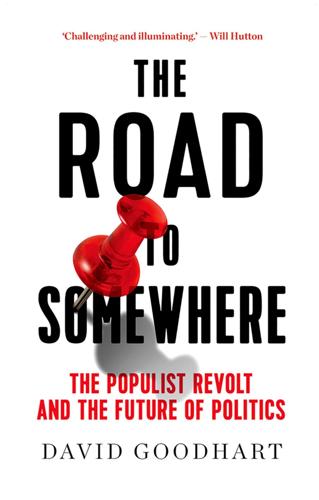
The Road to Somewhere: The Populist Revolt and the Future of Politics
by
David Goodhart
Published 7 Jan 2017
One could argue that there is a sort of ‘contract with the capital’ in which the rest of the country pays to raise children who then as graduates move to London where they are more productive and then pay higher taxes to repay the rest of the country. London does generate proportionally more of Britain’s GDP and tax income than any other region because it has so many high earners and successful companies, but it also sucks up a disproportionate amount of public spending—the 2012 Olympics, Crossrail 2, most spending on high culture (London received public investment on transport of £2,731 per head in the past five years compared with £19 in the West Country). And the idea that London does not need the rest of the country did not survive the financial crisis: the capital could not have supported the London-based banks without the national tax base to draw upon.
…
The HS3 project is supposed to deal with this at some point in the future but it is a far more important national priority than the HS2 high speed link between Manchester and London, which many people think will merely reinforce the dominance of the capital. More will be spent on London’s £4.6 billion Crossrail project 2016–2021 than on all transport projects in the North in the same period.14 If place is central to the more rooted Somewhere worldview, it is also increasingly important to a section of Anywhere opinion through the post-material stress on the environment. Somewhere rootedness and Anywhere green sensibility is one important bridge across the great divide.
…
.: product lines of, 86 Appiah, Kwame Anthony: 117 assortative mating: 188 Aston University: 164 austerity: 98, 200 Australia: 4, 160 Austria: 56, 69–70 authoritarianism: 8, 12, 30, 33, 44, 57; concept of, 57; hard, 45 Baggini, Julian: observations of British class system, 59 Bangladesh: 130 Bank of England: personnel of, 86 Bartels, Larry: Democracy for Realists, 61 Bartlett, Jamie: Radicals, 64 Basel Accords: 85 BASF: 176 Bayer: 176 Belgium: 73, 75, 101; Brussels, 53, 89, 93, 95, 98 Berlusconi, Silvio: 65 birther movement: 68 Bischof, Bob: head of German-British Forum, 174 Blair, Tony: 10, 76, 159, 189; administration of, 218; foreign policy of, 96; speeches of, 3, 7, 49; support for Bulgarian and Romanian EU accession, 26; unravelling of legacy, 221 Bloomsbury Group: 34 Bogdanor, Vernon: concept of ‘exam-passing classes’, 3 Boyle, Danny: Summer Olympics opening ceremony (2012), 111, 222 Branson, Richard: 11 Brexit (EU Referendum)(2016): 1–2, 19, 27, 81, 89, 93, 99–100, 125, 233; negotiations, 103; polling prior to voting, 30, 64; Remainers, 2, 19–20, 52–3, 132; sociological implications of, 4–7, 13, 53–4, 118, 126, 167–8, 225; Stronger In campaign, 61; Vote Leave campaign, 42, 53, 72, 91, 132; voting pattern in, 7–9, 19–20, 23, 26, 36, 52, 55–6, 60, 71, 74, 215, 218 British Broadcasting Corporation (BBC): 112, 145; Newsnight, 60; personnel of, 15; Radio 4, 31, 227; Today, 60 British Empire: 107 British National Party: European election performance of (2009), 119; supporters of, 38 British Future: 19 British Private Equity and Venture Capital Association: personnel of, 135 British Social Attitudes (BSA) surveys: 153; authoritarian-libertarian scale, 44–5; findings of, 38–9, 44, 106–7, 120, 202, 206–7, 218; immigration survey (2013), 44; personnel of, 218–19 British Values Survey: establishment of (1973), 43; groups in, 43 Brooks, Greg: Sheffield report, 155 Brown, Belinda: 205, 207–8 Brown, Gordon: 106; abolition of Married Couples Allowance, 204; budget of (2006), 147–8; political rhetoric of, 16–17 Brummer, Alex: Britain for Sale, 173 Bulgaria: 26; accession to EU, 225 (2007); migrants from, 126; population levels of, 102 Burgess, Simon: 131 Burggraf, Shirley: Feminine Economy and Economic Man, The, 194 Cahn, Andrew: 98 Callaghan, Jim: Ruskin College speech (1976), 154 Callan, Eamonn: 191 Callan, Samantha: 202, 212 Cambridge University: 35, 179, 186; faculty of, 37; students of, 158–9 Cameron, David: 71, 103, 179, 183, 189; administration of, 226; cabinet of, 187 Canada: 160; mass immigration in, 119 capital: 9, 100; cultural, 190; human, 34; liberalisation of controls, 97; social, 110 capitalism: 7, 11; organised, 159 Care (Christian Action Research & Education): 203 Carswell, Douglas: 13 Case, Anne: 67 Casey, Louise: review of opportunity and integration, 129 Catholicism: 15, 213; original sin, 57 Cautres, Bruno: 72 Center for Humans and Nature: 30 Centre for Social Justice: 206; personnel of, 202 chauvinism: 33; decline in prevalence of, 39; violent, 106 China, People’s Republic of: 10, 95, 104, 160; accession to WTO (2001), 88; manufacturing sector of, 86; steel industry of, 87 Chirac, Jacques: electoral victory of (2002), 49 Christianity: 33, 69, 83, 156 citizenship: 68, 121–2; democratic, 7; global, 114; legislation, 103; national, 5; relationship with migration, 126; shared, 113; temporary, 126 Clarke, Charles: British Home Secretary, 84 Clarke, Ken: education reforms of, 158–9 Clegg, Nick: 11, 13, 189 Cliffe, Jeremy: 10–11; ‘Britain’s Cosmopolitan Future’ 216; observations of social conservatism, 217 Clinton, Bill: 29, 76; administration of, 218 Clinton, Hillary: electoral defeat of (2016), 67–8 Coalition Government (UK) (2010–16): 13, 54, 226; cabinet members of, 16; immigration policies of, 124–5 Cold War: end of, 83, 92, 95, 98 Collier, Paul: 110; view of potential reform of UNHCR, 84 colonialism: 87; European, 105 communism: 58 Communist Party of France: 72 Confederation of British Industry (CBI): 164 confirmation bias: concept of, 30 Conservative Party (Tories)(UK): 19, 207; dismantling of apprenticeship system by, 157; ideology of, 76, 196; members of, 31, 164, 187; Party Conference (2016), 226; Red Toryism, 63; supporters of, 24, 35, 77, 143, 216–17 conservatism: 4, 9; cultural, 58; social, 217; Somewhere, 7–8; working-class, 8 Corbyn, Jeremy: elected as leader of Labour Party, 20, 53, 59, 75, 78 Cowley, Philip: 35 Crosland, Tony: Secretary of Education, 36; two-tier higher education system proposed by, 158 Crossrail 2: 228; spending on, 143 Czech Republic: 69, 73 D66: supporters of, 76 Dade, Pat: 43–4, 219; role in establishment of British Values Survey, 43, 218–19 Daily Mail: 227; reader base of, 4 Danish Peoples’ Party: 55, 69–70, 73; ideology of, 73 Darwin, Charles: 28 death penalty: 44; support for, 39, 216–17 Deaton, Angus: 67 deference, end of: 63 Delors, Jacques: 96, 103–4; President of European Commission, 94 Democratic Party: ideology of, 62, 65; shortcomings of engagement strategies of, 66–7 Demos: 137 Dench, Geoff: 207; concept of ‘quality with pluralism’, 214; Transforming Men, 209 Denmark: 69, 71, 99; education levels in, 156 Diana, Princess of Wales: death of (1997), 107 double liberalism: 1, 11, 63 Duffy, Gillian: 124 Dyson: 173; Dyson effect, 173 Economist: 10, 210, 216 Eden, Anthony: administration of, 187 Eichengreen, Barry: 91 Elias, Norbert: 119 Employer Skills Survey: 163 Engineering Employers Federation: 166 Englishness: 111 Erdogan, Recep Tayyip: 218 Essex Man/Woman: 186 Estonia: population levels of, 102 Eton College: 179, 187 Euro (currency): 100–1; accession of countries to, 98–9 European Commission: 26, 97 European Convention on Human Rights: 83–4 European Court of Justice (ECJ): 103 European Economic Community (EEC): 92; British accession to (1973), 93; Treaty of Rome (1957), 101 European Exchange Rate Mechanism (ERM): 97–8 European Parliament: elections (2009), 71–2; elections (2014), 72 European Union (EU): 10, 25, 53, 76, 89, 92–4, 99–100, 120, 124, 160, 215, 221–2, 229, 233; Amsterdam Treaty (1997), 94; Common Agricultural Policy, 92, 96; establishment of (1957), 91–2; freedom of movement principles, 100–1, 163–4; Humanitarian Protection Directive (2004), 83; integration, 50, 98–9, 173; Lisbon Treaty (2009), 94; Maastricht Treaty (1992), 94, 96, 103; members states of, 16, 31, 55, 71, 216; personnel of, 128; Schengen Agreement (1985), 94–5, 99, 117; Single European Act (1986), 94; Treaty of Nice (2000), 94 Euroscepticism: 69 Eurozone Crisis (2008–): 92, 99 Evening Standard: 143–5 Facebook: 86 family culture: 196–7; childcare, 202–3; cohabitation, 196, 211; divorce figures, 196–7; gender roles, 206–13; legislation impacting, 195–6; lone parents, 196; married couples tax allowance, 225; relationship with state intrusion, 200–2; tax burdens, 203–4; tax credit systems, 202, 204–5, 225 Farage, Nigel: 11; leader of UKIP, 72; political rhetoric of, 20 Fawcett Society: surveys conducted by, 195–6 federalism: 69 feminism: 185, 199, 205; gender pay gap, 198–9; orthodox, 194 Fidesz: 69, 71, 73 Fillon, François: 73 Financial Times: 91, 108, 115, 138, 145, 147 Finkelstein, Daniel: 34 Five Star Movement: 53, 55, 64, 70, 73 Florida, Richard: concept of ‘Creative Class’, 136 Foges, Clare: 183 food sector: 17, 102, 125, 126 Ford, Robert: 35, 150 foreign ownership: 172–74, 230 Fortuyn, Pim: assassination of (2002), 50, 69 France: 69, 75, 94–6, 101, 173; agricultural sector of, 96; compulsory insurance system of, 222; Paris, 104, 143; high-skill/low-skill job disappearance in, 151; Revolution (1789–99), 106 Frank, Thomas: concept of ‘liberalism of the rich’, 62 Franzen, Jonathan: 110 free trade agreements: opposition to, 62 Freedom Party: 69; electoral defeat of (2016), 70; ideology of, 73; supporters of, 70 French Colonial Empire (1534–1980): 107 Friedman, Sam: ‘Introducing the Class Ceiling: Social Mobility and Britain’s Elite Occupations’, 187 Friedman, Thomas: World is Flat, The, 85 Front National (FN): 53, 69, 72–3; European electoral performance of (2014), 72; founding of (1973), 72; supporters of, 72 Gallup: polls conducted by, 65 Ganesh, Janan: 115, 145 gay marriage: 5, 76; opposition to, 46–7; support for, 26, 220 General Electric Company (GEC) plc: 172, 175 German-British Forum: members of, 174 Germany: 70, 73, 86, 94, 96, 100–1, 173–4, 209; automobile industry of, 96; chemical industry of, 176; compulsory insurance system of, 222; education sector of, 166; high-skill/low-skill job disappearance in, 151; labour market of, 147; Leipzig, 58; Ludwigshafen, 176; Reunification (1990), 96, 147, 176; Ruhr, 176–7 Ghemawat, Prof Pankaj: 85–6 Gilens, Martin: study of American public policy and public preferences, 61–2 Glasman, Maurice: 227 Global Financial Crisis (2007–9): 56, 169–70, 177; Credit Crunch (2007–8), 98, 177 Global Villagers: 31–2, 44–5, 160, 226; characteristics of, 46; political representation of, 75; political views of, 109, 112 globalisation: 9–10, 50–2, 81–2, 85, 87–8, 90–1, 105–6, 148; economic, 9; global trade development, 86–7; growth of, 85–6; hyperglobalisation, 88–9; relationship with nation states, 85–6; sane, 90 Golden Dawn: 74; growth of, 105 Goldman Sachs: personnel of, 31 Goldthorpe, John: 184–5, 189–90 Goodhart, David: 12 Goodwin, Fred: 168 Goodwin, Matthew: 150 Gordon, Ian: 137–8, 140 Gould, Philip: 220 Gove, Michael: 64, 91 great liberalisation: 39–40, 47; effect of, 40 Greater London Authority (GLA): 143 Greece: 53, 56, 69, 74, 99, 105; Athens, 143; government of, 98 Green, Francis: 163 Green Party (UK): supporters of, 38 Group of Twenty (G20): 89 Guardian: 14, 210 Habsburg Empire (Austro-Hungarian Empire): collapse of (1918), 107 Haidt, Jonathan: 11, 30, 33, 133; Righteous Mind, The, 28–9 Hakim, Catharine: 205 Hall, Stuart: 14–15 Hames, Tim: 135–6 Hampstead/Hartlepool alliance: 75 Hanson Trust: subsidiaries of, 175 Hard Authoritarian: 43–7, 51, 119, 220; characteristics of, 24–5; political views of, 109 Harris, Gareth: 137; ‘Changing Places’, 137 Harvard University: faculty of, 57 Heath, Edward: foreign policy of, 96 Higgins, Les: role in establishment of British Values Survey, 43 High Speed 2 (HS2): 228 High Speed 3 (HS3): aims of, 151, 228 Hitler, Adolf: 94 Hoescht: 176 Hofstadter, Richard: ‘Everyone is Talking About Populism, But No One Can Define It’ (1967), 54 Holmes, Chris: 151 homophobia: observations in BSA surveys, 39; societal views of, 39–40, 216 Honig, Bonnie: concept of ‘objects of public love’, 111 Huguenots: 121 Huhne, Chris: 16, 32 human rights: 5, 10, 55, 113; courts, 113; legislation, 5, 83–4, 109, 112; rhetoric, 112–13 Hungary: 53, 64, 69, 71, 73–4, 99, 218; Budapest, 218 Ignatieff, Michael: leader of Liberal Party (Canada), 13 Imperial Chemical Industries (ICI): 172, 174–5; personnel of, 169; subsidiaries of, 175 Inbetweeners: 4, 25, 46, 109; political views of, 109 India: 104 Inglehart, Ronald: theories of value change, 27 Insider Nation: concept of, 61, 64; evidence of, 61–2 Institute for Fiscal Studies (IFS): 201; findings of, 211–12 International Monetary Fund (IMF): 86–7, 102 interracial marriage: societal views of, 40 India: 10, 160 Ipsos MORI: polls conducted by, 42, 122 Iraq: 84; Operation Iraqi Freedom (2003–11), 82 Islam: 50; Ahmadiyya, 84; conservative, 131; Halal, 68; hostility to, 73; Qur’an, 50 Islamism: 130 Islamophobia: 130 Italy: 55, 64, 69–70, 73, 96; migrants from, 125 Jamaica: 14 Japan: 86; request for League of Nations racial equality protocol (1919), 109 Jews/Judaism: 121, 259; orthodox, 131; persecution of, 17 jingoism: 8 Jobbik: 53, 64, 74 Johnson, Boris: 145 Jones, Sir John Harvey: death of (2008), 169 Jordan, Hashemite Kingdom of: government of, 84 Jospin, Lionel: defeat in final round of French presidential elections (2002), 49 Judah, Ben: This is London: Life and Death in the World City, 145 Kaufmann, Eric: 8–9, 131, 219, 227; ‘Changing Places’, 137 Kellner, Peter: 78 King, Mervyn: Governor of Bank of England, 86 Kinnock, Neil: 98 knowledge economy: 147, 149, 154, 166, 221 Kohl, Helmut: 94 Kotleba: 74 Krastev, Ivan: 55, 65, 82–3 labour: 9, 89–90, 149; eastern European, 125–6; gender division of, 197; hourglass labour market, 150, 191; living wage, 26, 152; market, 95, 101–2, 124, 140, 147–8, 150–2, 156–7, 181, 225 Labour Party (Denmark): 77 Labour Party (Netherlands): 50; supporters of, 76 Labour Party (UK): 2, 23, 53, 57, 72, 123, 157, 159, 207; Blue Labour, 63; electoral performance of (2015), 75; European election performance (2014), 72; expansion of welfare state under, 199–200; members of, 14, 20, 36, 59, 61, 77–8, 84; Momentum, 53; New Labour, 33, 75, 107, 123, 155, 159, 167, 196, 207, 220, 226, 232; Party Conference (2005), 7; social media presence of, 79; supporters of, 17, 35, 75, 77, 143, 221; voting patterns in Brexit vote, 19 Lakner, Christoph: concept of elephant curve, 87 Lamy, Pascal: 97 Latvia: adoption of Euro, 98–9; migrants from, 25–6 Laurison, Daniel: ‘Introducing the Class Ceiling: Social Mobility and Britain’s Elite Occupations’, 187 Law and Justice Party: 69, 71, 73 Lawson, Nigel: 205 Le Pen, Jean-Marie: victory in final round of French presidential elections (2002), 49, 69 Le Pen, Marine: 53; electoral strategies of, 73 Leadbeater, Charles: 53 League of Nations: protocols of, 109 left-behinders: 20 Lega Nord: 69 Levin, Yuval: Fractured Republic, The, 232 liberal democracy: 2, 31, 55 Liberal Democrats: 23, 53–4; members of, 16; supporters of, 38, 78 Liberal Party (Canada): members of, 13 liberalism: 4–5, 12–13, 29–31, 55, 76, 119, 127–8, 199, 233; Anywhere, 27–8; baby boomer, 6; double, 1, 63; economic, 11; graduate, 216–17; meritocratic, 34; metropolitan, 216; orthodox, 13–14; Pioneer, 44; social, 4, 11 libertarianism: 8, 11, 22, 39, 44 Libya: 84; Civil War (2011), 225 Lilla, Mark: 35 Lind, Michael: 105, 135 Livingstone, Ken: 136 Lloyd, John: 56 London School of Economics (LSE): 54, 137–8, 140, 183 Low Pay Commission: findings of, 170 Lucas Industries plc: 172 male breadwinner: 149, 194, 195, 198, 206, 207 Manchester University: faculty of, 131 Mandelson, Peter: British Home Secretary, 61; family of, 61 Mandler, Peter: 135 Marr, Andrew: 53, 181 Marshall Plan (1948): 92 mass immigration: 14, 55, 104–5, 118–19, 121–4, 126–7, 140, 228–9; accompanied infrastructure development, 137–9; brain-drain issue, 102; debate of issue, 81–2; freedom of movement debates, 100–3; housing levels issue, 138–9; impact on wages, 152; integration, 129–32, 140–2; non-EU, 124–5; opposition to, 16–17, 120, 220 May, Theresa: 63, 179, 183, 198–9; administration of, 173, 176, 187, 191, 230; British Home Secretary, 124–5; ‘Citizens of Nowhere’ speech (2016), 31; political rhetoric of, 15, 31, 226 McCain, John: electoral defeat of (2008), 68 meritocracy: 152, 179–80, 190; critiques of, 180–1; perceptions of, 182–3 Merkel, Angela: reaction to refugee crisis (2015), 71 Mexico: borders of, 21 migration flows: global rates, 82, 87; non-refugee, 82 Milanovic, Branko: 126; concept of elephant curve, 87 Miliband, Ed: 78, 189 Mill, John Stuart: ‘harm principle’ of, 11–12 Millennium Cohort Study: 159 Miller, David: concept of ‘weak cosmopolitanism’, 109 Mills, Colin: 185 Mitterand, François: 94, 97 mobility: 8, 11, 20, 23, 36, 37, 38, 153, 167, 219; capital: 86, 88; geographical, 4, 6; social, 6, 33, 58, 152, 168, 179, 180, 182, 183–191, 213, 215, 220, 226, 231 Moderate Party: members of, 70 Monnet, Jean: 94–5, 97, 103–4 Morgan Stanley: 171 Mudde, Cas: observations of populism, 57 multiculturalism: 14, 50, 141–2; conceptualisation of, 106; laissez-faire, 132 narodniki: 54 national identity: 14, 38, 41, 111–12; conceptualisations of, 45; indifference to, 41, 46, 106, 114; polling on, 41 nationalism: 38, 46–7, 105; chauvinistic, 107, 120; civic, 23, 53; extreme, 104; moderate, 228; modern, 112; post-, 8, 105–6, 112; Scottish, 221 nativism: 57 Neave, Guy: 36 net migration: 126; White British, 136 Netherlands: 13–14, 50, 69, 73, 75, 99–100; Amsterdam, 49, 51; immigrant/minority population of, 50–1; Moroccan population of, 50–1 Netmums: surveys conducted by, 205–6 New Culture Forum: members of, 144 New Jerusalem: 105 New Society/Opinion Research Centre: polling conducted by, 33 New Zealand: 160 Nextdoor: 114 non-governmental organizations (NGOs): 21; refugee, 82 Norris, Pippa: 57 North American Free Trade Agreement (NAFTA): 91; opposition to, 62 North Atlantic Treaty Organization (NATO): 85, 92; personnel of, 84 Norway: 69 Nuttall, Paul: leader of UKIP, 72; Obama, Barack: 67; approval ratings of, 60; electoral victory of (2012), 68; healthcare policies of, 22–3; target of birther movement, 68 O’Donnell, Gus: background of, 15–16; British Cabinet Secretary, 15 O’Leary, Duncan: 232 Open University: Centre for Research on Socio-Cultural Change (CRESC), 172–3 Operation Iraqi Freedom (2003–11): political impact of, 56 Orbán, Victor: 69, 218 Organisation for Economic Co-operation and Development (OECD): 201, 204; report on education levels (2016), 155–6; start-ups ranking, 173 Orwell, George: Nineteen Eighty-Four, 108–9 Osborne, George: 189; economic policies of, 4, 226 Oswald, Andrew: 171 Ottoman Empire: collapse of (1923), 107 outsider nation: concept of, 61, 64 Owen, David: 99 Oxford University: 15, 35, 179, 186; Centre on Skills, Knowledge and Organisational Performance, 151; faculty of, 31, 151; Nuffield College, 32 Pakistan: persecution of Ahmadiyya Muslims in, 84 Parris, Matthew: 115 Parsons, Talcott: concept of ‘achieved’ identities, 115 Party of Freedom (PVV): 69; ideology of, 73; supporters of, 50, 76 Paxman, Jeremy: 42 Pearson: ownership of Higher National Certificates (HNCs)/Higher National Diplomas (HNDs), 157 Pegida: ideology of, 73 Pessoa, Joao Paulo: 88 Phalange: 74 Phillips, Trevor: 133 Pioneers: characteristics of, 43–4 Plaid Cymru: supporters of, 38 Podemos: 53, 64 Poland: 56, 69, 73; migrants from, 25–6, 121 Policy Exchange: ‘Bittersweet Success’, 188 political elites: media representation of, 63–4 populism: 1, 5, 13–14, 49–52, 55–6, 60, 64, 67, 69–74, 81; American, 54, 65; British, 63; decent, 6, 55, 71, 73, 219–20, 222, 227, 233; definitions of, 54; European, 49, 53, 65, 68–9, 74; left-wing, 54, 56; opposition to, 74; right-wing, 33, 51, 54 Populists: 54 Portillo, Michael: 31 Portugal: migrants from, 121, 125 post-industrialism: 6 post-nationalism: 105 poverty: 83, 168; child, 183–4, 200, 204; extreme, 87; reduction of, 78, 200; wages, 231 Powell, Enoch: ‘Rivers of Blood’ speech (1968), 127 Professionalisation of politics: 59 Progress Party: 69 progressive individualism: 5 Progressive Party: founding of (1912), 54 proportional representation: support for, 228 Prospect: 14, 91, 136 Prospectors: characteristics of, 43 Protestantism: 8, 213 Putin, Vladimir: 218 Putnam, Robert: 22; theory of social capital, 110 racism: 32, 73–4, 134; observations in BSA surveys, 39; societal views of, 39; violent, 127 Rashid, Sammy: Sheffield report, 155 Reagan, Ronald: 58, 63; approval ratings of, 60 Recchi, Ettore: 104 Refugee Crisis (2015–): 83–4; charitable efforts targeting, 21–2; government funds provided to aid, 83; political reactions to, 71 Relationships Foundation: 202 Republic of Ireland: 99; high-skill/low-skill job disappearance in, 151; property bubble in, 98 Republican Party: ideology of, 62, 65; members of, 68 Resolution Foundation: 87–8; concept of ‘squeezed middle’, 168–9; reports of, 171 Ricardo, David: trade theory of, 101 Robinson, Eric: 36 Rodrik, Dani: 82, 89; concept of ‘hyperglobalisation’, 88; theory of ‘sane globalisation’, 90 Romania: 26; accession to EU, 225 (2007); migrants from, 102, 126 Romney, Mitt: electoral defeat of (2012), 68 Roosevelt, Theodore: leader of Progressive Party, 54 Rousseau, Jean-Jacques: 156 Rowthorn, Bob: 149 Royal Bank of Scotland (RBS): personnel of, 168 Royal College of Nursing: 140 Rudd, Amber: foreign worker list conflict (2016), 17 Ruhs, Martin: 126 Russell Group: 55; culture of, 37; student demographics of, 130–1, 191 Russian Federation: 2, 92; Moscow, 218; St Petersburg, 218 Rwanda: Genocide (1994), 82 Saffy factor: concept of, 199, 221–2 Scheffer, Paul: 85; ‘Multicultural Tragedy, The’ (2000), 49–50 Schumann, Robert: 94 Sciences Po: personnel of, 104 Scottish National Party (SNP): 1, 23, 54, 112; electoral performance of (2015), 75; ideology of, 53 Second World War (1939–45): 105, 194; Holocaust, 109 Security and identity issues: 41, 78, 81 Settlers: characteristics of, 43 Sikhism: 131 Singapore: 101, 128; education levels in, 156 Slovakia: 69, 73–4 Slovenia: adoption of Euro, 98–9 Smer: 69, 73 Smith, Zadie: 141–2 Social Democratic Party: supporters of, 75–6 social mobility: 6, 33, 58, 179–80, 183, 187, 189–91, 220; absolute mobility, 184, 188; relative mobility, 184; slow, 168; upward, 152 Social Mobility Commission: 161, 179–80 socialism: 49, 72, 183, 190 Somewheres: 3–5, 12–13, 17–18, 20, 41–3, 45, 115, 177, 180, 191, 214, 223, 228; characteristics of, 5–6, 2, 32; conflict with Anywheres, 23, 79, 81, 193, 215; conservatism, 7–8; employment of, 11; European, 103; immigration of, 106; moral institutions, 223–4; political representation/voting patterns of, 13–14, 24–6, 36, 53–5, 77–9, 124, 227; political views of, 71, 76, 109, 112, 119, 199, 218, 224–6, 232; potential coalition with Anywheres, 220, 222, 225–6, 233; view of migrant integration, 134 Sorrell, Martin: 31 Soskice, David: 159 South Korea: 86 Soviet Union (USSR): 92, 188; collapse of (1991), 82, 107 Sowell, Thomas: 30; A Conflict of Visions, 29 Spain: 53, 56, 64, 74; government of, 98; migrants from, 125; property bubble in, 98 Steinem, Gloria: 198 Stenner, Karen: 30, 44, 122, 133, 227; Authoritarian Dynamic, The, 30–1 Stephens, Philip: 108 Sun, The: 227 Sutherland, Peter: 31–2 Sutton Trust: end of mobility thesis, 183–5 Swaziland: 135 Sweden: 56, 70, 100; general elections (2014), 70; Stockholm, 143; taxation system of, 222 Sweden Democrats: 70; electoral performance of (2014), 70; ideology of, 73 Switzerland: 37 Syria: Civil War (2009–), 82, 84 Syriza: 53, 69 Taiwan: 86 Teeside University: 164 terrorism: jihadi, 71, 74, 129 Thatcher, Margaret: 58, 63, 95, 189, 205; administration of, 169; economic policies of, 176 Third Reich (1933–45): 104; persecution of Jews in, 17 Times Education Supplement: 37 Timmermans, Frans: EU Commissioner, 128 Thompson, Mark: Director-General of BBC, 15 trade theory: principles of, 101 Transatlantic Trade and Investment Partnership (TTIP): 89; support for, 225 Trump, Donald: 50, 62, 74, 85; electoral victory of (2016), 1–3, 5–7, 13, 27, 30, 64–8, 81, 232; political rhetoric of, 14, 22–3, 51, 54, 66–7; supporters of, 56, 67 Tube Investments (TI): 172 Turkey: 218 Twitter: use for political activism, 79 Uber: 140 UK Independence Party (UKIP): 53, 55, 63–4, 69, 71–3, 228; electoral performance of (2015), 75; European election performance (2009), 71–2; members of, 13; origins of, 72; supporters of, 24, 35, 38, 72, 75, 143, 168, 216, 222 ultimatum game: 52 Understanding Society: surveys conducted by, 37–8, 202 unemployment: 101–2; gender divide of, 208–9; not in employment, education or training (Neets), 151–2, 190; youth, 139, 151–2, 166 Unilever: 175 United Kingdom (UK): 1–3, 8, 11–12, 21, 27–8, 31, 33, 41, 44, 59–60, 69, 73, 75, 81, 83, 91, 111–12, 147, 165, 173, 180, 193–5, 199, 204, 217, 227; Aberdeen, 136; accession to EEC (1973), 93; Adult Skills budget of, 161, 225; apprenticeship system of, 154, 157, 162–3, 166; Birmingham, 7, 123, 166; Boston, 121; Bradford, 133, 136; Bristol, 136; British Indian population of, 77; Burnley, 151; Cambridge, 136; City of London, 95, 106, 174; class system in, 58–9, 75, 123, 135–6, 149–52, 172, 182–3, 186, 195; Dagenham, 136; Department for Education, 206; Department for International Development (DfID), 224; Divorce Law Reform Act (1969), 196; economy of, 152, 170; Edinburgh, 54, 136; education sector of, 35, 147, 154–8; ethnic Chinese population of, 77; EU citizens in, 101; Finance Act (2014), 211; Foreign and Commonwealth Office (FCO), 224; Glasgow, 136; high-skill/low-skill job disappearance in, 150–1; higher education sector of, 35–7, 47, 159–62, 164–7, 179, 208, 230–1; Home Office, 17; House of Commons, 162; general election in (2015), 60; House of Lords, 31; Human Rights Act, 123, 225; income inequality levels in, 169–70, 172, 177, 184–5; labour market of, 16, 26, 124, 140–1, 148, 150–1, 152, 225; Leicester, 133; Leeds, 161; London, 3–4, 7, 10–11, 18–19, 24, 26, 34, 37, 59, 79, 101, 114–15, 119, 123, 131, 133–45, 151, 168, 216, 218, 226, 228, 232–3; Manchester, 123, 136, 151, 161, 228; manufacturing sector of, 17, 88; mass immigration in, 122–4, 126–7, 228–9; Muslim immigration in, 41–2, 44; Muslim population of, 127, 130; National Health Service (NHS), 72, 91, 111, 120, 140, 144, 200–1, 229; National Insurance system of, 204; Newcastle, 131, 136, 161; Northern Ireland, 38; Office for Fair Access, 180; Office for Standards in Education, Children’s Services and Skills (Ofsted), 155; Office of National Statistics (ONS), 138, 144–5; Oldham, 133; Olympic Games (2012), 111, 143, 222; Oxford, 136; Parliamentary expenses scandal (2009), 56, 168; Plymouth, 131; public sector employment in, 171, 208–9, 229–30; regional identities in, 3–4, 186; Rochdale, 124; Scotland, 110, 138; Scottish independence referendum (2014), 53, 110; self-employment levels in, 171; Sheffield, 161; Slough, 131, 133; social mobility rate in, 58, 184–5, 187; start-ups in, 173–4; Stoke, 121; Sunderland, 52, 172; Supreme Court, 66; taxation system of, 222; Treasury, 16; UK Border Agency, 108; vocational education in, 163; voting patterns for Brexit vote, 7–9, 19–20, 23, 26, 36, 52; wage levels in, 168; Wales, 138; welfare state in, 199–203, 223–4, 231–2; Westminster, 54, 58, 60; youth unemployment in, 151–2 United Nations (UN): 102, 198; Conference on Trade and Development (UNCTAD), 10; Declaration of Human Rights (1948), 109; Geneva Convention (1951), 82–4; High Commission for Refugees (UNHCR), 82, 84; Security Council, 99 United States of America (USA): 1–2, 6–7, 22–3, 36–7, 51, 57, 60, 74, 86, 89, 94, 128, 168, 193, 208, 227; 9/11 Attacks, 130; Agency for International Development (USAID), 224; Asian population of, 68; borders of, 21; Chinese Exclusion Act (1882), 54; class identity in, 65–6; Congress, 67; Constitution of, 57; education system of, 166; higher education sector of, 167; Hispanic population of, 67–8, 85; House of Representatives, 67; immigration debate in, 67–8; Ivy League, 36, 61; New York, 135; political divisions in, 65; Senate, 67 University College London (UCL): Imagining the Future City: London 2061, 137, 139 University of California: 165 University of Kent: 36 University of Sussex: 36 University of Warwick: 36; faculty of, 171 Vietnam War (1955–75): 29 Visegrad Group: 69, 73, 99 Vlaams Belang: ideology of, 73 wages for housework: 194 Walzer, Michael: 117–18 War on Drugs: 62 WEIRD (Western, Educated, Industrialised, Rich and Democratic): 27 Welzel, Christian: Freedom Rising, 27 Westminster University: 165 white flight: 129, 134, 136 white identity politics: 9, 67 white supremacy: 8, 68, 73–4 Whittle, Peter: 144 Wilders, Geert: 50, 76 Willetts, David: 164, 185 Wilson, Harold: electoral victory of (1964), 150 Wolf, Prof Alison: 162, 164–5; XX Factor, The, 189, 198 working class: 2–4, 6, 51–2, 59, 61, 65; conservatism, 8 political representation/views of, 8, 52, 58, 63, 70, 72; progressives, 78–9; voting patterns of, 15, 52, 75–6; white, 19, 68 World Bank: 84 World Trade Organisation (WTO): 10, 85, 89–90, 97; accession of China to (2001), 88 World Values Survey: 27 xenophobia: 2, 14, 50–1, 57, 71, 119, 121, 141, 144, 225 York, Peter: 138 York University: 36 YouGov: personnel of, 78; polls conducted by, 16–17, 42, 66, 79, 114, 132, 141 Young, Hugo: 93 Young, Michael: 119, 190; Rise of the Meritocracy, The, 180–1 Yugoslav Wars (1991–2001): 97 Yugoslavia: 97 Zeman, Milos: President of Czech Republic, 73
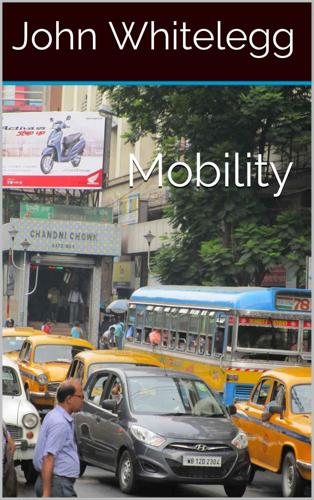
Mobility: A New Urban Design and Transport Planning Philosophy for a Sustainable Future
by
John Whitelegg
Published 1 Sep 2015
In this imaginary world, transport spending would be cut, mobility would decline (but not accessibility) and there would be no more new roads built at 32,916 Euros per metre when the evidence presented to public inquiries shows that the new road will not reduce congestion and will not create new jobs. Back in the real world (the UK in 2015) we have the well-established business as usual arrangement with £46 billion allocated to high speed rail projects and £15 billion to London’s cross-rail project and large numbers of bypasses and motorway widening schemes to promote and encourage the growth of mobility. In addition we have huge cuts in local authority budgets which feed directly into cuts in the support given to bus services. The result is much more mobility by expensive and faster modes of transport and much reduced accessibility for those dependent on buses who are largely made up of lower income groups, children, women and older people.
…
Achieving the maximum level of decarbonisation in the transport sector is not a technical or a fiscal problem. We know how to do it and we have the cash to pay for it and recent spending decisions in the UK e.g. £46 billion on high speed rail (with a lot more than this to come as costs escalate) and £15 billion on London’s cross-rail project indicate that there are funds available. More importantly we know there are a large number of co-benefits flowing from carbon reduction and mobility reduction and these co-benefits produce savings in other budgets. This is often referred to as “spend to save” so for example a large expenditure on combined heat and power (CHP) and a wind turbine at Lancaster University reduces carbon emissions and energy bills.
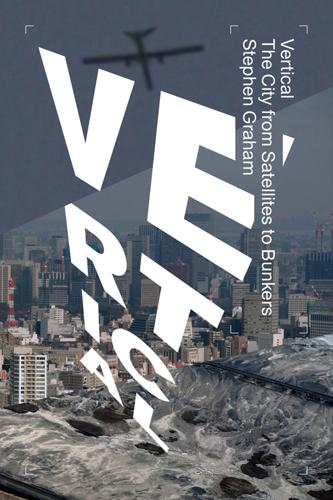
Vertical: The City From Satellites to Bunkers
by
Stephen Graham
Published 8 Nov 2016
Spectacle Island, off the city’s shore, gained 16 hectares in size due to additional dumping.14 Meanwhile, in the UK, at Samphire Hoe on the Kent coast in South East England, a 40-hectare piece of new coastal land was created through the dumping of the 20 million tonnes of material excavated to build the Channel Tunnel. Currently, at Wallasea on the Thames estuary, an island the size of the City of London is being created as a bird reserve out of the material excavated in London’s mammoth Crossrail subterranean train project. Simon Price and colleagues from the British Geological Survey estimate that mining in the UK over the past four centuries has led to the removal, dumping, or use of nearly 20 cubic kilometres of (often badly polluted) material. This amounts to four times the volume of Ben Nevis, the UK’s tallest mountain.
…
See Carrie Mott and Susan Roberts, ‘Not Everyone Has (the) Balls: Urban Exploration and the Persistence of Masculinist Geography’, Antipode 46:1, 2014, pp. 229–45. 66See Matthew Christopher, Abandoned America: The Age of Consequences, Paris: Jonglez, 2014. 67In their defence, UE communities respond by saying they increase the security of a city by exposing weaknesses and loopholes. 68Will Self, ‘Will Self on Crossrail’, Guardian, 2 September 2014. 69Peter Ackroyd, London Under, London: Random House, 2011, p. 2. 70We have already encountered these efforts in the case of US military exercises within the tunnels beneath Chicago. 71Julia Solis, New York Underground: The Anatomy of a City, New York: Psychology Press, 2005. 72Ibid., p. 5. 73Quoted in Sandhu, ‘Dark Days’. 15.
…
G., 121, 204 Ballvé, Teo, 92 Ballymore, 213 Bandra-Worli Sea Link sky bridge, 206 Bangkok, Thailand, 230–1, 232 Bangladesh, 191n39 Barbican, 224 Bar-Hillel, Mira, 204 Barnes, Djuna, 320 Barnes, Yolanda, 219 Barry, Tom, 85 Battersea, 97, 213 Battery Park City, 310 Baudrillard, Jean, 153 Bauhaus school of design, 179–80 Bauman, Ole, 9 Bavaria, 108 Beaux Arts Ball, 155 Bedell, Geraldine, xi Begley, Josh, 91 Beijing, 254–7, 267–8 Being John Malkovich (film), 136 Bélanger, Pierre, xvi, 12–3 Belgium, 369 Belgrand, Eugène, 326–7, 328 Bell, David, 55–6 Bell Super Cobra, 111–2 Ben Nevis, 288 Berger, Alan, 48–9 Berlin, 281–2, 358 Berlin Underworlds Association, 358 Berlin Wall, 358–9 Berlusconi, Silvio, 54 Berman, Marshall, 156 Bernstein, Fred, 197 Bertuca, Anthony, 203 Berwyn, 203 Bhopal, India, 257 BHP Billiton, 375 ‘Big Dig,’ 288 Bilbray, Brian, 71–2 Bill of Rights Defense Committee, 89, 90 Bin Laden, Osama, 170, 171, 342 Birmingham, England, 223, 224 Bishop, Ryan, 111, 112, 340 Blackmore, Tim, 70, 114 Black Sea, 302 Blackwell Companion to the City, 6 Blair, Tony, 61–2 Block, Niko, 379–80 Bloomberg, Michael R., 197, 202 Boddy, Trevor, 227–9 Boeing, 41, 98, 345 Bogotá, Colombia, 118–9 Bonadies, Ángela, 121 Bonaventure Hotel, 138, 234–5 Bonime, Andrew, 334 Book of Genesis, 174–5 Boston, Massachusetts, 248, 288 Boston Marathon, 109–10 Boyle, Danny, 188 Brampton, 318 Brasilia of the North, 224 Bratton, Ben, 172 Brazil, 114, 116n2, 119, 374–5 Brazilian Association of Helicopter Pilots (ABRAPHE), 103 Brechin, Gray, 370, 372–3, 380, 383 Bridge, Gavin, 6, 379n41, 380 Brillembourg, Alfredo, 121–2 Britain, 57, 65, 66n40, 96, 224–5, 316 British Geological Survey, 288 British Royal Air Force, 35–6 Bronze Age, 295–6 Brooklyn, New York, 198 Bryant, Raymond, 246 Bunker Archeaology (Virilio), 341 Bunker Hill, 230 Bureau for Investigative Journalism, 73 Burj Al Arab Hotel, xi, xii Burj Khalifa, xi, xii, 143, 145, 150, 161n34, 167, 271, 373, 373n21, 374n25, 375, 377, 380, 383 Burma, 46 Buruma, Ian, 170 Bush, George, 346 Bush, George W., 61–2, 176n5 Cabral, Sergio, 103 Cairo, Egypt, 128, 169–70, 254 Calgary, 239 Californian Gold Rush, 370–1 Calvino, Italo, 360 Cambodia, 298 Campbell, Reese, 127–8 Canada, 146, 379 Canetti, Elias, 244n1 Cappadocia, 316 Capulong, Romeo, 309 Caracas, Venezuela, 119–22, 127 Caracciolo, Lucio, 39 Cardiff, Wales, 96 Caribbean, 116, 290–1, 293 Carney, Jay, 71 Cartwright, James E., 347 Cascio, Jamais, 274–5 Cazucá, 123n16 Center for International Policy, 85 Center for Land Use Interpretation (CLUI), 34–5 Central America, 378 Central Park, New York, 198 Centre Pompidou, 225 Centro Financiero Confinanzas, 120 Chadwick, Edwin, 322–3, 323n2, 324–5 Chamayou, Grégoire, 71, 79–80 Channel Tunnel, 288 Charing Cross, 97 Charlie and the Great Glass Elevator (film), 138 ‘Cheesegrater,’ 164, 165 Chelsea, 144, 313–5 Chemical Weapons Convention, 276 Chernobyl, 257 Cheshire, 357 Chicago, Illinois, 134, 141, 150–2, 154, 158, 162–3, 184, 203, 221, 249–50, 265, 285, 334, 351–2, 363n70 China, 40, 46, 140–1, 161n34, 162n36, 198, 201, 219, 253–4, 256–8, 263, 274, 276n105, 291, 297, 304–5, 309, 343, 375 Chinese Air Quality Index (AQI), 266–7n68 Chow, Rey, 29n11 Choy, Tim, 233, 247, 260–1 Chrysler Building, 155–6, 197 CHUD (film), 334 CIA, 73–4, 274 Cities Under Siege (Graham), 104 Cities Without Ground, 233–5 Città Nuova (‘New City’), 220 City Journal, 109 City Planning in the Syrian Town of Aleppo (Atta), 16 Clark, Joe, 69 Clark, Kenneth, 65 Clark Howell project, 185 Clausen, Meredith, 98 Clichy-sous-Bois, 146–7 ‘The Cloud, 240–1 Cold War, 35, 59, 66n40, 273, 340–2, 343n11, 355–8 Cole, Chris, 112 Coleman, Alice, 184, 191 ‘Collateral Murder’ video, 113 ‘Collect-It-All,’ 36 Collins, Joan, 315 Colombia, 122, 123n16, 368, 377 Comaroff, Joshua, 298 Combined Air and Space Operations Center (CAOC), xiv Commonwealth Games, 187 Comodromos, Demetrios, 127–8 Condor Legion, 54 Congo, 379 Congrès Internationaix d’Architecture Moderne (CIAM) organisation, 222 Congressional Caucus on Unmanned Systems (CCUS), 86 Connecticut, 266 Copacabana beach, 124 Copernicus, 29 Coppola, Francis Ford, 111 Corbett, Harvey Wiley, viii, 221 Corner, James, 312 Cosgrove, Denis, 29 Coulthard, David, xii Council for Tall Buildings and Urban Habitats, 161 Cox, Stan, 265 Crali, Tullio, 52–3 Creech Air Force Base, 70, 90 Creep (film), 333, 334 Crossrail project, 288 Crouch, J. D., 343 Crouch, Tom, 60–1 Cumbernauld, 224 Cwerner, Saulo, 100 Dahl, Roald, 138 Dalitas, 338–9 Dallas, Texas, 225 Dallevo, Amilcare, Jr., 102 Darfur, 46 Dark Days (documentary), 364 DARPA, 74, 78 Darton, Eric, 172–3 Das, Samarendra, 367 da Silva, Nelio Pereira, 124 Davies, Kate, 375–6 da Vinci, Leonardo, 225 Davis, Mike, 119, 161, 168, 216, 272 Davison, Graeme, 156n21 Dawkins, James, 71 de Certeau, Manuel, 211 Deckelbaum, Leona, 125 Deconstructing Harry (film), 137 de Jong, Johannes, 131 Delhi, India, 192, 307, 336, 338–9 DeLillo, Don, 356 Delirious New York, 154 della Dora, Veronica, 302 Demilitarised Zone, 343 Democratic Republic of Congo, 375, 378 de Munck, Cécile, 264 De Quille, Dan, 372 d’Eramo, Marco, 151–2 Detroit, Michigan, 138, 292 Dick, Phillip K., xii Diering, D.
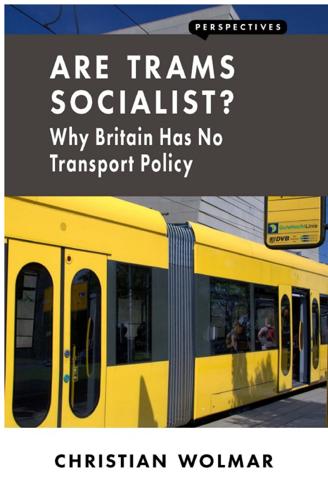
Are Trams Socialist?: Why Britain Has No Transport Policy
by
Christian Wolmar
Published 19 May 2016
It already had a fantastic network of transport infrastructure, but thanks to devolution and being given control over its finances (plus the added advantage of being able to bully national politicians by arguing that London is a great growth generator and that transport is vital to that growth), it has, since the mayoralty was created in 2000, created a new network of railways (London Overground), massively improved bus services, imposed a congestion charge to help finance improvements, established a large network of hire bikes, created a series of ‘cycle superhighways’, obtained a promise to be given control of much of the suburban rail network, and has two massive rail investment schemes due to be completed before the end of the decade (Thameslink and Crossrail). This cannot be replicated easily in any provincial cities, obviously, though Manchester – with its greatly expanded tram network and the soon to be realized assumption of control over its bus network – is showing the way. Crucially, though, devolution must go together with money, as otherwise it will be a poisoned chalice.
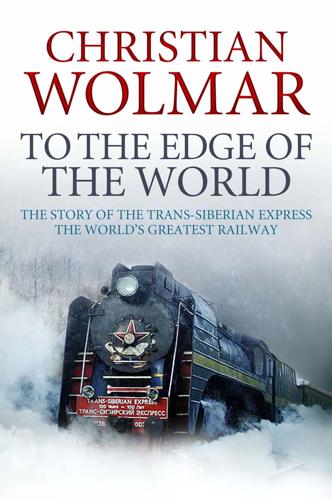
To the Edge of the World: The Story of the Trans-Siberian Express, the World's Greatest Railroad
by
Christian Wolmar
Published 4 Aug 2014
The ministry of finance was obsessed by keeping a tight rein on the state budget, while the transport ministry had a strategic grand vision that saw the railways as being at the heart of Russia’s industrialization. Indeed, this type of row has been repeated countless times around the world over the past century whenever big projects are put forward, and is even echoed in contemporary Britain today with, for example, Crossrail in London, which was on the drawing board for more than half a century before work finally began in 2009. Vyshenegradsky kept up his rearguard action by suggesting a plan that would involve constructing only those sections of line where no traditionally navigable river was available. This would have reduced the required construction of railway from more than 4,600 miles19 to just 2,000.
…
Dr Francis, 108, 115–17 coal, 27, 31, 159, 173, 207 thefts of, 119–20 wartime supplies, 217–18, 225 Collins, Perry McDonough, 31–2 communism, collapse of, 247–8, 257, 259 Compagnie Internationale des Wagons-Lits, 163–4, 209, 212 Constantine, Grand Duke, 32 containerization, 255–6 convicts, runaway, 6–7 copper deposits, 235 Cossacks, 127, 133, 182–6 cotton production, 218 Crimea, 199 Crimean War, 24–5, 31, 34, 37, 41, 73 Crossrail, 44 Cuba, 238 Czech Legion, 176–83, 187–9, 191–2, 198–9 Czechoslovakia, 176 dacha traffic, 27–8 Dalny (Dalian), 123, 164 de Windt, Harry, 5, 114–15, 117 death penalty, 8–9 Decembrists, 14, 35 Denmark, 158 diligences, 3 Doctor Zhivago, 193 Donbas (Donets Basin), 27, 217, 225 Dostoevsky, Fyodor, 15 Duff, Thomas, 29–30 Duma, 139–40 dysentery, 17 earthquakes, 233, 241 East China Sea, 123 Egypt, 59 Eiffel Tower, 109–10, 194 Ekaterinadar (Krasnodar), 184 Elizabeth Petrovna, Empress, 8–9 Engineer, The, 94 engineers, Russian, 19–20 Erie Railroad, 17 étapes, 10 exile system, 8–11, 220 factories, wire-making, 254 famine, 146, 205, 210, 222 Far East Fleet, Russian, 126 ferries, 4, 90–1, 101, 103, 106, 121 Figes, Orlando, 177, 183, 189, 192 films, Soviet, 204–5 Finland, 174 First American Transcontinental Railroad, 2, 64, 67, 79, 244 First World War, xvi, 9, 137, 154, 158, 161, 172, 218, 225 Fleming, Peter, 180, 182, 186, 190, 195, 201 France expansionist policies, 123 and Russian civil war, 173–4, 181, 183, 191 freight tariff, national, 52 Frolov, Pyotr, 12 garden cities, 155–6 gas fields, 235, 246 Geneva Convention, 234 Germany expansionist policies, 123–3 export market, 158 invasion of Russia, 224–5, 232, 258 Gerstner, Franz von, 14–17 global warming, 247 gold, tsar’s, 196, 199 Golden Horn, 79 Gorbachev, Mikhail, 226, 244, 248 grain, 27, 54–5, 159, 218, 222 Graves, Major General William S., 181–3, 185–8, 190, 193 Great Khingan Range, 125–6 Greece, 59 Greener, William Oliver, 100–1, 107, 157 Guide to the Great Siberian Railway, 102, 112–13, 159 Guizzardi, Ettore, 162–3 Gulags, 220–2, 226, 259 and BAM, 231–2, 234–5, 244, 246 Hampshire Regiment, 188, 199 Harbin, 123, 125–6, 138, 164, 191, 209, 214, 230 Russification, 165–6 Hartman (conspirator), 51 Hartmann, Mr, 38 Haywood, Richard, 24 Helsinki, 25 Hiroshima atomic bomb, 229 Hitler, Adolf, 194 Holy Druzhina, 51 Hong Kong, 186 Horn, Mr, 31 Howard, Ebenezer, 155–6 Hubbenet, Adolf von, 44, 53–4, 59 Hungary, 16 hunghutzes (‘redbeards’), 127–8 ice floes, 4, 106 Ignatiev, Count Alexei, 40–1 Iman, river, 87 Imperator Alexander II bridge, 42, 73 Imperial School of Engineering, 20 India, 37, 59 Ingoda, river, 88 Inter-Allied Railway Agreement, 191–2, 214 Intourist, 253 Irkutsk and civil war, 180, 182, 198–9 connection to Lake Baikal, 66, 89, 101 and early railway schemes, 30, 38–41 and electrification of line, 218, 228–9, 251 governor-general of, 162 panorama, 110 population increase, 155, 219 prison, 78 and railway route, 65–6, 84–6, 102 and railway timetable, 103 and Russo-Japanese War, 133–4 station architecture, 92 travellers and, 8, 32, 103, 106, 115, 140, 164 Irkutsk county, fires in, 243 iron and steel industry, 13, 20, 52, 217 Irtysh, river, 81–2 Italy, and Russian civil war, 181 Izvestiya, 238 Japan and containerization, 255 and First World War, 175, 181, 201 and Manchuria, 213–16, 223–4 and railway construction, 70–2 and Russian civil war, 173–5, 181–4, 187, 191–2, 199–201 and Russian foreign policy, 36–7, 145 and Second World War, 224, 229–30 Tsarevich’s visit, 59–60 war with China, 70–1 war with Soviet Union, 229, 234 see also Russo-Japanese War Jefferson, Richard, 105–8 Jews, 51, 54, 141, 185, 190 Kaganovich, Lazar, 221–3 Kalmykov, Ivan, 182–5, 192, 200 Kama, river, 42 Kamchatka, 8, 254 Kankrin, Count Yegor, 14, 16 Karaganda, 218, 225 Kazakhs, 147 Kazakhstan, 7, 12, 42, 218, 225 Kazan, 29, 39, 203 Kemorovo, 156 Kerbedz, Stanislav, 125 Kerensky Provisional Government, 174–6, 188, 194 Khabarovsk, 66, 69, 79, 87, 101, 121, 168, 216, 257 and civil war, 183–4, 187, 209, 212 damaged bridge, 209, 212 population increase, 219 and railway administration, 120 Khabarovski Krai, 245 Khalkhin Gol, Battle of, 224 Khilkov, Prince Mikhail, 89–91, 102, 108–9, 111–12, 151 inspects completed line, 135–6 Khor, river, 87 Khrushchev, Nikita, 234, 255 Kiev, 25, 222 Kirghiz horses, 112 Kleinmichel, Count, 21 Knox, General Alfred, 187–8, 193 Kolchak, Admiral Aleksandr, 184–90, 192, 194–9, 203, 205 Komsomol, 236–7, 247 Komsomolsk-na-Amure, 231, 233, 242 Korea, 7, 130, 137–8, 214 Korff, Baron Andrei, 41 Kotlin island, 90 Kougoulsky, Boris, 184 Krasnoyarsk, 84–6, 102–3, 106, 155, 255 station architecture, 92 Kronstadt, 90 Kuibyshev, 226 see also Samara kulaks, 146, 222 Kulomzin, Anatoly, 144–5, 147, 149, 151, 153, 157–8 Kultuk, 135 Kuropatkin, General Aleksey, 140 Kuznets Basin, 217–19, 225 Kuznetsk, 156 Kuznetsovsk Tunnel, 248 Kwantung Army, 224 Ladrintsev, Nikolai, 35 Lake Baikal and civil war, 187 and early railway schemes, 30, 33, 36, 40–1 environmental damage, 243–5, 249 ferry service, 84, 90–1, 101, 121, 129 and railway route, 65–6, 69 replacement of lakeside route, 228–8 Russo-Japanese War, 132–3 storms on, 135 temporary tracks across, 90–1, 132–3 travellers and, 108, 162, 164 see also Baikal Amur Railway (BAM); Circum-Baikal Railway; Transbaikal Railway Lake Khasan, 224 Laue, Theodore von, 43 Le Matin, 162 League of Nations, 216 Lee, Mrs John Clarence, 164–5 Legras, Jules, 151, 155 Lenin, V.
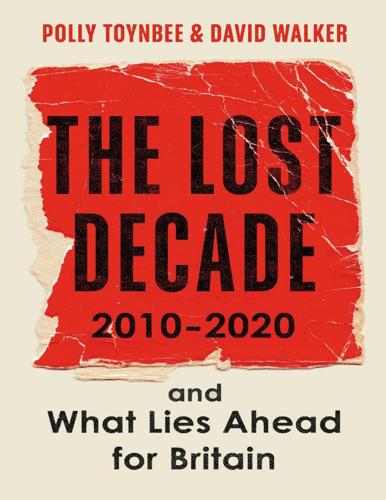
The Lost Decade: 2010–2020, and What Lies Ahead for Britain
by
Polly Toynbee
and
David Walker
Published 3 Mar 2020
Improvements were made: Paddington’s Grade I-listed roof and Brunel’s wrought-iron arches were renovated; Reading and Birmingham New Street stations rebuilt. But the electrification of the Great Western route was halted: the NAO found that the operator and infrastructure were uncoordinated and costs were escalating; inexplicably, Network Rail had even underestimated how many bridges it would need to rebuild or modify. Crossrail – linking Reading in the west with Abbey Wood in south-east London and Shenfield in Essex – involved massive tunnelling and station-building in the heart of the capital. A Labour-era project, it ran into difficulties with signalling after the major works were completed, embarrassing both London’s Labour mayor, Sadiq Khan, and May’s unembarrassable transport secretary, Chris Grayling (though his successor, Grant Shapps, may yet give him a run for his money).
…
But ‘where a surface transport scheme is not solely required to deliver airport capacity and has a wider range of beneficiaries, the government will consider the need for public funding’, the government said, opening a treasure chest of potential subsidy; it did not specify whether ‘international connectivity’ was a public or a private interest. No plan integrated jobs and growth in the south-east – or elsewhere in the UK – with Heathrow, which would not be on either Crossrail or HS2. A government that did not believe in intervention was prepared to hand massive subsidies to the foreign owners of Heathrow. Expansion was approved in June 2018, with a planned completion date of 2026; legal challenges citing lack of consideration of environmental factors were lost. Heathrow’s users objected bitterly to the cost implications for them.
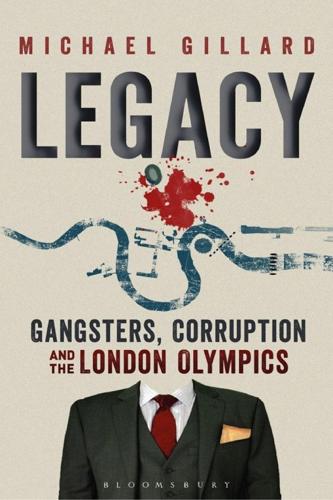
Legacy: Gangsters, Corruption and the London Olympics
by
Michael Gillard
Published 24 Jul 2019
This style of leadership was going out of fashion in the new ‘dog eat dog’ London force where many senior officers drove desks and were loyal only to their own promotion prospects. At the time, Stratford was undergoing major redevelopment. Westfield, the commercial developers, had a £1.5bn plan for a retail complex erected around Stratford’s soon to be upgraded transport hubs linking the Docklands Light Railway to Canning Town and to the High Speed line and eventually Crossrail. Stratford was also the proposed gateway to the London 2012 athletes’ village intended to be a residential and commercial space called Stratford City after the Games. The International Olympic Committee considered public security a key factor when deciding between candidate cities. This meant the London bid team and Sir Robin Wales, the newly-elected Newham major, had to get on top of their significant street crime problem.
…
Index Adair, Brian here Adams, Terry here, here, here, here Adams, Tommy here, here, here Adams family here, here, here, here, here, here, here, here, here ‘adverse inference procedure’ here Aglionby, Judge here Ahearne, DS Ray here, here, here, here, here Ahmed, Mushtaq here AIDS here Allen, Billy here, here, here, here, here, here, here, here, here, here, here, here, here, here, here, here and DPS investigation, here, here, here and libel trial here, here Allen, Jimmy here, here, here, here, here Allen, Lorraine here, here Allen, Louise here Altman, Andrew here, here Ambrose, Billy here Andre, Peter here Andrews, Jean here Andrews, Tilly here Anne Summers sex shops here Arnold, Maxine here, here, here, here, here, here, here Arsenal FC here, here, here Association of Chief Police Officers here Attrell, Matty here Austin, David here Avery, DI Peter here, here, here Bancroft club here, here, here, here, here, here Bank of England here, here Barham, Edward ‘Teddy’ here, here, here Barry, Terence here bearcats here Behara, ‘Mad’ Micky here, here Benn, Nigel here, here Bennett, Charles ‘Wag’ here Betts, Leah here Bingham, Paul here Birmingham City FC here Blackwell, Robert here Blair, Commissioner Sir Ian here, here Blair, Tony here, here, here, here, here, here Bowers, Martin here, here, here Bowers, Paul here, here Bowers, Tony here, here, here Bowers family here, here, here, here, here, here, here, here, here, here, here, here, here, here Boy George here Boyle, Danny here Bracken, Commander Nick here Brady, Karren here, here, here, here Brett, Alastair here Bridge, Judge Stuart here, here Brink’s-Mat robbery here, here, here, here, here, here, here, here British Movement here British Telecom here Bromley-Derry, Kim here brothels here, here, here, here, here, here, here, here, here, here, here, here Brown, Gordon here Brown, Janice here, here Brown, Lyn here, here Bruno, Frank here Bryant, Steven here, here ‘Bug, The’ here, here Bunyon, Angus here Burbage, Dave here, here Butler, Charlie here, here, here, here, here Calzaghe, Joe here Cameron, David here, here, here Camp, Kevin here Carle, Christopher P. here Carr, Tommy here Carroll, DC Michael here, here Carvell, David here Cavanagh, Joe here, here Cavanagh, Paul here, here, here, here, here, here, here, here, here, here and libel trial here, here Celtic FC here Chamberlain, Joseph here, here Channel Tunnel here Chapman, Ronald here Charalambous, Louis here Charles, Amber here Cherry, Neneh here Childs, Amy here City Airport here Clark, Patrick ‘Patsy’ here, here, here, here Clark, DC Paul here, here, here, here, here, here, here DPS investigation here, here, here, here, here, here, here Clark, Stephen here Clooney, George here Coe, Lord Sebastian here, here, here, here Coghlan, Arran here Cole, Joe here Coleman, Jimmy here, here, here Collins, Gemma here Collins, John here Collins, Mr Justice here, here, here Condon, Commissioner Sir Paul here Connery, Sean here Connor, Julian here Cook, Robert and Samuel here Corbyn, Jeremy here Covert Policing Standards Unit here Cray, Tim here Cressey, Kevin here Critchell, Roger here Crossrail here Cubitt, DC Chris here, here Daltrey, Roger here Dennett, Nick here, here, here, here, here, here Dickens, Charles here, here Directorate of Professional Standards (DPS) here, here, here, here McKelvey investigation here, here Docklands Light Railway here, here ‘Document 522’ here Donald, DC John here Donnelly, Peter here, here, here, here Doyle, Hugh here Duckworth, James here Duckworth, Joe here Duggan, Mark here Dutton, Jonathan here Eastwood (informer) here, here, here, here, here, here Easy, DCI David here, here Edelman, Keith here, here Edmonds, Paul here Edwards, Jeff here Ellis, DS Michael here EMM Ltd here, here, here, here, here, here, here Epping Forest, double murder here, here, here, here, here, here, here Epping Forest Country Club here, here Essex, Joey here Essex Boys here Evans, Glyn here, here Everett, Ron here, here Everitt, Derek here, here Everitt, Stuart here Faiers, Sam here Falco, Victor here Fenwick, David here Ferry, Bryan here Fiaz, Rokshana here, here, here Financial Conduct Authority here Fitzpatrick, Jim here, here Flood, DS Frankie here, here Flynt, Larry here Football Lads’ Alliance here Ford, Harrison here Foreman, Freddie here, here, here, here Foster, Patrick here Fox, Dr Liam here Frazier, Joe here freemasons here, here, here, here, here, here, here, here French family here Fuller, Ron here Galleons Reach club here, here Galvin, Steven here Gatwick Airport robbery here, here, here, here, here Geddes, Will here, here Gerard, Alfie here Gerard, Nicky here, here German John here, here Giret, Jane here, here, here, here Gold, David here, here, here, here Gold Group here, here, here, here, here, here, here Gooderham, Terrence here, here, here, here, here, here, here Goscomb, DC Paul here Gosling, Dave here, here Gray, John here Grays Athletic FC here Guntrip, DC Darren here, here, here, here DPS investigation here, here, here, here, here, here, here Newham investigations here, here, here, here Hacked Off lobby group here Hardie, Keir here Harrison, Danny here Harvey, Martin here Hassani, Rexhap here Hatton Garden robbery here Hayman, Commander Andy here Heathrow Airport here Heaton, Bob here, here Hennessey, Michael here Hennessey, Peter here Hill, Aaron here Hill, Howard here, here, here, here, here Hitler, Adolf here HMP Belmarsh here HMP Ford here, here HMP Hollesley Bay here Hobbs, Professor Dick here Hole, Kevin here, here Hole, Tommy here Holmes, Jimmy here, here, here, here, here, here, here, here, here, here, here, here, here, here, here, here, here Judas Pig book here, here and libel trial here, here HOLMES computer system here Hoskins, Bob here Houghton, Mick here Howells, DC Taffy here Hughman, Peter here Hunt, Christopher here Hunt, Davey (‘the Long Fella’) and Adams family here and anti-corruption investigation here and Billy Allen affair here, here, here, here Billy Murray and here Cavanagh and here, here, here, here, here, here, here corrupt approach to DI Avery here Country Club purchase here daily routine here father’s funeral here football and television interests here, here Holmes and here, here, here, here, here, here, here, here, here, here, here, here, here and the Krays here, here libel trial here McKelvey and here, here, here, here, here, here, here, here, here, here, here and million-pound contract here Morleys mansion purchase here narcissism here and Olympic regeneration, here, here and Operation Blackjack here and Operation Tiger here, here Peter Wilson and here pigeon fanciers’ gala assault here, here and Snipers here, here, here, here, here, here, here and stolen cars here Sullivan and here, here, here, here tax affairs here, here, here Time Out campaign here Hunt, David junior here, here, here Hunt, Jeremy here Hunt, Perry here Hunt, Raymond here, here, here Hunt, Stevie here, here, here, here, here, here, here, here, here, here, here, here Hunt, Tina here, here, here, here Hunt’s Iron & Steel here, here, here, here Hunt’s Waste here, here, here, here, here, here Hunter, Rachel here ‘illegal capitalism’ here Intelligence and Surveillance Unit (ISU) here Intelligence Development Group (IDG) here, here Intercity Firm (ICF) here, here, here International Corporate Protection (ICP) here, here International Olympic Committee here, here, here, here IRA here, here, here Iraq war here Jacobs, Billy here Jarman, Commander Rod here, here, here Jenkins, Kevin here Jenkins, Matthew here Johnson, Boris here, here, here, here, here, here, here Johnson, David here Johnson, Douglas here Johnson, Commander Mick here Johnson, Ronnie here, here Jones, Danny here Joshua, Anthony here Jowell, Tessa here, here July 2005 bombings here, here, here Kamen, Nick here Kean, Bob here, here Keeffe, Barrie here Keehan, John here Keene, DC Derek here, here, here Kelly, Amanda here, here, here, here, here, here, here, here, here Keltbray here, here, here, here, here, here, here Kemp brothers here Kenny, Kenneth here, here Kerr, Brendon here, here, here, here Kerr, DCS Sharon here Khan, Sadiq here, here, here Knight, Dionne here, here, here, here Knight, Ronnie here, here Knights of Columbus here Korner, Judge here Kray twins here, here, here, here, here, here, here Kurtz (source) here Kyriacou, Giggy here Lake, Mark here Lancaster, Penny here Law, Mike here, here, here, here, here, here Lawless, Terry here Lawrence, Stephen here, here, here Legacy Stadium Partnership (LSP) here Leveson, Lord here Levy, Daniel here, here, here, here, here Life on Mars here Lillie, Lawrence here Livingstone, Ken here, here London City Self Storage here, here London Development Agency (LDA) here London Organising Committee (LOCOG) here, here London Underground here Long, Jennifer here ‘Long Fella, the’, the, see Hunt Davey Long Good Friday, The here Love, Kelli here, here, here, here McAuley, Conor here, here McAvoy, Micky here, here, here McGuigan, Barry here McGuinness, Danny here, here, here, here, here, here, here, here, here, here, here, here, here McKelvey, DCI David ‘Mac’ here, here, here, here, here, here, here, here ‘adverse inference procedure’ here DPS investigation here, here, here, here, here Newham investigations here, here, here, here retirement and subsequent career here, here, here McKelvey, George here, here McKelvey, Joanna here McLean, Charlene here Madden, DS Jim here Mahmood, Pervaz ‘Pelé’ here, here, here, here, here, here, here, here Mann, John here Manning, Lee here Martin, Tony here Mason, John here, here Matthews, Charles ‘Chic’ here, here, here, here, here, here, here, here, here, here, here, here, here, here, here, here, here, here, here, here Matthews, Charles ‘Chicky’ junior here, here, here, here, here, here, here, here collapsed trial here, here, here, here, here, here, here, here, here, here, here, here May, Theresa here Mayflower Youth Club here Michael, George here Michel, Peter here, here, here, here, here Millar, DC Andrew here Millar, Gavin here, here, here Millennium Dome here, here Millwall FC here Mitchell, Phil here, here, here Monk, Paul here Moore, Bobby here, here, here Morgan, DC Martin here, here, here, here Morley, Trevor here Morleys manor here, here, here, here, here, here, here, here, here, here, here Morris, Peter here, here Morris, Sheron here Mortimer, Bob here Mossack Fonseca here Mould, Nigel here, here Mulholland, James here Murray, Billy here Nahome, Solly here National Crime Agency here, here National Crime Officers Association here National Crime Squad (NCS) here, here, here National Criminal Intelligence Service (NCIS) here, here, here National Front here, here National Grid here National Health Service (NHS) here, here Naylor, Lenny here Neuberger, Lord here, here Newham enforcement division here, here, here, here, here, here, here, here, here, here, here, here Newham Nettles blog here Newham Parks police here, here, here, here, here News International here, here, here, here ‘noble cause corruption’ here Norris, Clifford here Norris, David here Norris, Steve here Northern Ireland here O’Dowd, Gerry here Olliffe, Joey here Olliffe, Ronnie here, here, here, here, here, here, here Olympic Delivery Authority, (ODA) here Olympic Park Legacy Company (OPLC) here, here, here Onions, Paddy here Operation Blackjack here, here, here, here, here Operation Kayu here, here, here, here, here, here, here, here, here Operation Scrap It here, here Operation Tiger here, here Osman warnings here, here, here, here, here, here Owens, Paul here Oxley, Gary here, here, here, here, here Page, John here, here, here, here Paget, Judge David here Palmer, John ‘Goldfinger’ here Palmer, Michael here, here, here, here, here, here, here, here, here, here Parvizi, Iraj here, here Patrick, DCS Albert here, here Paul, Terry here Payne, Anthony here Payne, Timothy ‘Tommy’, suicide of here Peacock pub and gym here, here, here, here, here, here, here, here Pearman, Darren here Pearson, John here Peat, Erica here Penny, Alan here Perkins, Terry here, here Peterson, Mickey here Phillips, Dr Spencer here Phoenix club here, here phone hacking scandal here, here, here Piccadilly Circus here pigeon racing here, here, here, here, here, here Pinchbeck, Simon here Police Federation here, here, here Pomfrett, Peter here, here pornography here, here, here, here, here, here, here, here, here, here, here see also prostitution Powell, Mark here, here, here, here Prevent strategy here Price, John here Price, Katie here Price, Lenny here Prince of Wales pub here, here, here prostitution here, here, here, here, here, here, here, here see also brothels Pykett, Joey here racism here, here, here, here, here, here Railtrack here Ramakrishnan, Biju here rave scene here Raymond, Paul here Reader, Brian here Reading, Albert here Reading, Bobby here, here Red House, the here Redgrave DS John, here, here, here, here, here Redrow housebuilders here Reeves, Vic here Regional Asset Recovery Team (RART) here Relton, Michael here Roberts, Sheila here, here Robertson, DS Gavin here Robinson, Carl ‘the Dread’ here, here, here, here, here Robinson, Steve here Rodrigues, Paolo here Rogge, Jacques here Rolfe, Craig here Ronan Point disaster here Rose, DCI Simon here, here, here, here, here Ross, Jonathan here Royal Docks here, here, here Ruiz, Sarah here Sabine, Terry here, here, here, here, here, here, here, here, here, here Sade here Sarma, Pia here Sawyer, Shaun here, here SCD here here Schwarzenegger, Arnold here Security Express robbery here, here Seed, Michael here September here attacks here Serious Organised Crime Agency (SOCA) here, here, here, here, here Hunt investigations here, here, here, here, here, here and McKelvey investigation, here, here, here Service Confidence Policy here Sewell, Alan here, here, here sex tapes allegation here Sharp, John here Shatford, DI John here, here, here Siddique, DI Ashfaq here, here, here, here, here, here, here, here, here, here, here Silver, Bernie here, here, here, here, here, here, here, here, here, here Simon, Mr Justice here, here Sims, Frankie here Skinny Gary here, here skunk farms here Slavkov, Ivan here Smales DI Tim here, here Smith, Anthony here Smith, Bill here Smith, Jacqui here Smith, Levi here Smith, DCI Martin here Snipers here, here, here, here, here, here SO10 undercover unit here, here Spandau Ballet here Specialist Crime Directorate here Spiteri, Frank here Stanton, Shane here Stewart, Rod here, here Stone, Richard here Stratford, Billy and Joey here Straw, Jack here Stretch, Gary here Stronge, Ben here Sugar, Alan here Sullivan, David here, here, here, here, here, here Sunday Times here, here, here, here, here, here, here, here, here, here libel trial here Swallow, Andy here, here Syndicate, the here Tarrant, Jimmy here Tash, Selwyn here, here, here, here Tate, Pat here Taylor, Deputy Assistant Commissioner Fiona here Thalidomide here Thatcher, Margaret here, here, here, here, here The Only Way is Essex (TOWIE) here, here, here Thompson, Frankie junior here Tibbs, James junior here Tibbs, Jimmy here, here Tibbs family here, here Tiberius Report here, here, here, here, here Time Out magazine here, here, here Timmons, DS Clive here Tisshaw, John here Tomkinson, Martin here Tomlinson, Hugh here Tompkins, Ian here, here, here Tottenham Hotspur FC here, here, here, here Troy, Gisa here Truth Commission here, here, here, here Tucker, Tony here Tugendhat, Michael here Tunn, DI Jason here, here Turner, John here Twiddy, Alan ‘Toofa’ here, here Twilight nightclub here, here Untouchables squad here, here, here, here Vagabonds, the here, here Van Outen, Denise here Vietnamese gangs here Violet’s club here, here, here Wales, Sir Robin here, here, here, here, here, here, here, here, here, here and Fiaz challenge here, here, here McGuinness and here Walker, Clive here Walker, Ian here Walker, Mark here Walls, Stewart here Ward, Lord Justice here West, John here West Ham United FC here, here, here, here, here, here, here, here, here, here, here, here, here fans’ protest here Olympic stadium bid here, here, here, here Westfield shopping centre here, here, here, here Whincup, Shani here Whitchelo, Rodney here, here White Roding, FC here Wickstead, Commander Bert here, here Williams, Billy ‘Jango’ here, here Williams, Chris here, here, here, here, here, here, here, here, here Williams, Mark here Williams, Robbie here Willoughby, Holly here Wilson, Peter here, here Windsor, Barbara here Winton Investments here, here, here, here, here Wood, Carl here Wood, Chris here Woollard, Danny here, here, here, here, here, here, here, here, here Woollard, Danny junior here Woolston Manor here, here, here, here, here, here, here, here, here, here, here Wright, Eddie here Wright, Jason (‘Tattoo’) here, here, here, here, here Wright, Mark here, here, here, here, here, here Wright, Mark junior here, here, here Yallop, Matthew here Yates, Assistant Commissioner John here Zomparelli, Tony here Plates ‘The Long Fella’, Davey Hunt, in 2013 outside the High Court where he lost his libel claim and was found by Mr Justice Simon to be a violent organised crime boss.
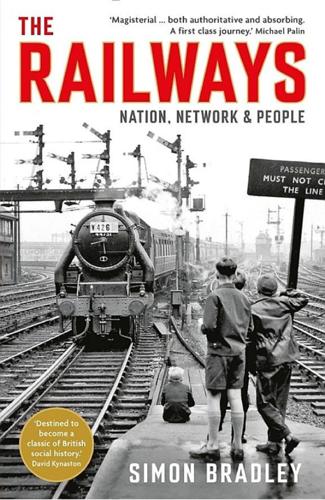
The Railways: Nation, Network and People
by
Simon Bradley
Published 23 Sep 2015
When a new route is made purely by subtraction, as in the case of underground railways, special measures are required. The English share of spoil from the Channel Tunnel was mostly dumped at the foot of the White Cliffs of Dover, to form a seventy-acre public facility called Samphire Hoe Country Park. The Crossrail route below London, lacking a nearby sea coast, has sent much of its spoil by train and ship to a blank expanse of farmland on the edge of the Essex marshes. In a reversal of the usual Victorian transformation of marginal land into productive use, this is being remodelled into what is described as the largest man-made nature reserve in Europe.
…
p. 352 Huntsmen were noted at Euston: Sidney, 10. p. 352 By the 1860s: Carr, 106–10. p. 352 number of packs: Itkowitz, 53. p. 352 ‘the Bold Dragoon’: Griffin, 137. p. 353 To even out the slopes: Williams 2, 109, 134. p. 354 Samphire Hoe: www.samphirehoe.com/uk/samphire-hoe/creation. p. 354 Crossrail route: Guardian, 17 Sept. 2012. p. 354 ‘Calculating Boy’: MP, 3 Apr. 1815. p. 354 Edinburgh University: Rolt 1, 92, 229. p. 355 details of grass species: Rolt 2, 149. p. 355 a cutting in northern England; Intake embankment: Williams 2, 115; 134. p. 355 fissured clays: Skempton, 43–4. p. 355 Round Down: Dendy Marshall, ii, 293; RHRGB, ii (1982 edn), 30; Quick, 126.
…
B. 511 CLASP (Consortium of Local Authorities Special Programme) 506 Class 141 diesel multiple units 234–5 Class 142 diesel multiple units 235 Class 405 electric multiple units 228 Class 415 electric multiple units 228 Class 442 electric multiple units 228 classes 73–8, 208 see also first class; fourth class; second class; third class Claverings, The (Trollope) 228–9 Clay Cross 358 Clayton Tunnel disaster 142, 159–60 Clegg, William 268 Cleopatra’s Needle 16 clerestories 39–40, 80 Clifton Bridge 264 clothes see dress Clough, Arthur 492 club carriages 83 coaches (road) 18, 26, 56, 112 conversation 112–13 design 26–7, 28 expense and speed 57 on flat wagons 83–6, 102 heating 40–1 outside seats 53, 57, 112 refreshment stops 475 Ruskin 139 tickets 22 Wellington 87 coal 359 heating carriages 115 at stations 439 wagons 4, 267–8, 403–4, 404, 405–6, 414–15, 416, 433 see also steam locomotives coat hangers 215 Cobden, Richard 266 Coggeshall 17 Colchester 261 Cole, Henry 262–3, 266, 283 Cole Adams, Alfred 470–1, 483 Coleman, Terry 336–9 Collecting Railwayana (Mander) 539 Collectors’ Corner 539 Colleen Bawn, The (Boucicault) 98 Collins, Wilkie 126, 150, 155, 184 Colmans 347 colour-light signals 296, 302–4 Comic Bradsaw, The 62 communication cord 193–6, 201, 226 commuters 22 compartments 25, 26, 103, 214, 224 conversation 112–18, 214 coupé compartments 157, 203–4 dogs 112 ladies-only 182 lavatories 202 partitions 67 seat-marking 103–5, 104 side corridors 4, 25, 211–13, 228–9 size 28–9 smoking 108, 109, 110–11 concrete bridges and viaducts 362–3, 373, 374 Channel Tunnel Rail Link 359–60 footbridges 450 platforms 447 sleepers 275–7, 278–9 Connop, Captain 105 container trains 415, 417 continuous automatic brakes 197, 199–201 continuous brakes 197 continuously welded rails (cwr) 257–8 contractors 335–6, 337, 338, 362 control offices 305–6 conversation 112–18, 214, 253 Conwy 368 Cook, Thomas 89 Cooper, Fenimore 125 Copenhagen Fields 542–3 Corbett, Gerlad 289 Corby 413 Corkickle 455 Cornhill Magazine 21–2 Cornish Riviera Express 221 Cornwall agriculture 345 milk trains 343 semaphore signals 297 sleeper trains 247, 249–50 tourism 481 Cornwall Railway 11 broad gauge 273 viaducts 360, 361, 366, 366 Corus Infrastructure Services 447 Cossons, Sir Neil 544, 545 couchettes 246 Coulson, W. 389 coupé compartments 58, 157, 203–4 Covent Garden 208 Coventry 140, 506 Cowes & Newport Railway 11 cremation 101, 548 creosote 275, 276, 278 Crewe 12, 29, 274, 400 Basford Hall Yard 385 trainspotting 523–4, 525 cricket 47, 93 crime 164 assaults 171, 174–8 blackmail 184–7 con men 167–70 damage and pilfering 224–7, 315, 322 murder 171–4, 175, 176 prisoner transportation 164–7 prostitution 183–4 signal cable theft 315 theft 171 crinolines 32–3 Cross, Derek 533 crossing-keepers 331 Crossrail 354 Cruden Bay 482 Crumlin Viaduct 372–3 Crystal Palace 16–17, 97, 364 Cubitt, William 268–9, 271 ‘Cuckoo Valley Railway’ (Quiller-Couch) 514–15 Cudworth 150 ‘Cuisine 2000’ 222 Culham 483 Cumbrian coast line 297, 413, 439 Cureton, William 150 Curtis vs March 20 cut cards 385 cuttings 353–6, 353, 357–60, 380 D Daily Mirror 70 Daily Telegraph 35, 120, 327, 395 dairying 342–3 Dalkey 268, 271 Damems 302, 463 Danish State Railways 249, 506 Darlington 21, 286, 304, 487, 508, 517 Darsham 456 Dartmoor prison 164 dash pots 385 Daumier, Honoré 50 de Maré, Eric 533 De Profundis (Wilde) 165–6 Death, John 171–2 Decline and Fall (Waugh) 318 Decline of Steam (Gifford) 533 Deepdale Viaduct 372 Deeside 149 Delmonico 209 Deloitte, William Welch 430 Deltic diesel locomotive 3, 549 Denham Golf Club station 455 Dent, David 51–2 Derby 38, 48, 124, 426, 478, 484 Derwent Valley 344 Design magazine 230, 503 Design Museum 264 Design Panel 230, 231, 232 Design Research Unit (DRU) 504 destination boards 493–4 Deutsche Bahn 507 Devon 247, 343, 345–6 Dickens, Catherine 154, 162 Dickens, Charles 6, 67, 126, 150, 161–2 All the Year Round 15, 159 American Notes for General Circulation 115–16 Bradshaw 16–17, 21 cattle 341–2 conversation 116–17 Dombey and Son 85 and Ellen Ternan 153–5 Household Words 16–17, 140 Little Dorrit 15 Martin Chuzzlewit 162 Mugby Junction 34, 301, 395, 477 The Old Curiosity Shop 119 Our Mutual Friend 15, 151 Pickwick Papers 113 railway bells 468 railway catering 476–7 reading tours 155–8 ‘The Signal-Man’ 158–9, 291, 293, 307, 311 signals 296 and Spiers and Pond 47 Staplehurst disaster 151, 152–3, 153, 154, 155–6, 157–8, 162, 178 and stone-throwing 322 theatrical company 98 Dickens, Mary (‘Mamie’) 158 Dickens Incognito (Aylmer) 155 Dickenson, Edward 152–3 Dickinson, Kate 177, 178 Dickinson, W.
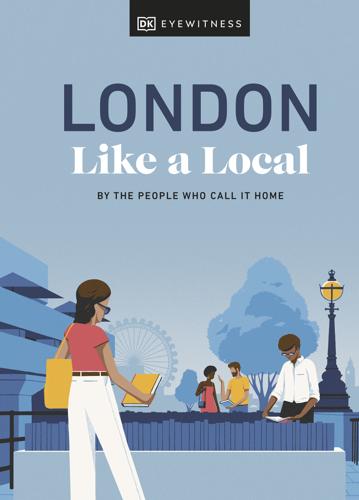
London Like a Local
by
Florence Derrick
g City History g Contents Google Map MUSEUM OF LONDON DOCKLANDS Map 6; 1 Warehouse, West India Quay, Canary Wharf; ///puppy.sweep.ranged; www.museumoflondon.org.uk The West India Docks were the world’s largest dock complex when they opened in 1802 and this museum, in the shadow of skyscrapers, looks at how these historical warehouses operated. Here you’ll discover the stories of merchants and pirates, the trade of enslaved African people and sugar, and the uncomfortable resulting success of the British economy and empire. Cross the quay bridge to Crossrail Place Roof Garden, where you’ll find an oasis of plants from across the globe. g City History g Contents Google Map THE POSTAL MUSEUM Map 1; 15–20 Phoenix Place, Clerkenwell; ///being.orange.vouch; www.postalmuseum.org Okay, a visit to a postal museum doesn’t sound like the most exciting of days out but this sorting office genuinely brings to life five fascinating centuries of postal work in the city.
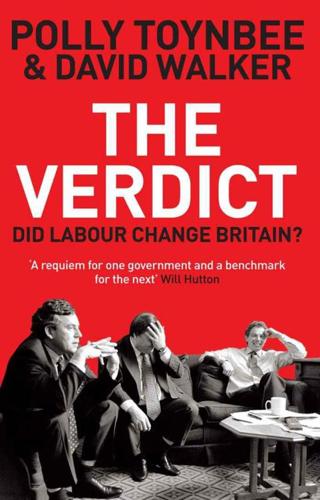
The Verdict: Did Labour Change Britain?
by
Polly Toynbee
and
David Walker
Published 6 Oct 2011
In 2007, 307,000 people worked in the City of London and 103,000 at Canary Wharf: an extraordinary amount of construction was devoted to meeting their travel requirements over the years, the Docklands Light Railway included. Now the government projected a new railway line, Crossrail, at a cost of £16 billion. If the City slickers did not get Crossrail, they would have to rub shoulders with the hordes on the Central Line. The Treasury praised London as the motor of UK economic growth but put tight limits on the corollary: the investment needed to sustain transport in the capital. Labour gave London its own government but then Brown refused London’s transport authority any involvement in upgrading the Tube.
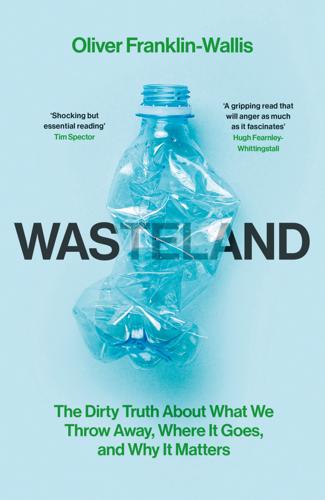
Wasteland: The Dirty Truth About What We Throw Away, Where It Goes, and Why It Matters
by
Oliver Franklin-Wallis
Published 21 Jun 2023
‘You could see the slick of fat in the river. People were complaining about the smell.’ Lee is a reassuring presence, tall with soft features and skin ruddy from working outdoors and on the water. He’s a tunneller, not a sewer man: before Tideway his last job was managing the recently renovated Crossrail and Underground station at Tottenham Court Road, in the city’s West End. After a short safety briefing, we head down a spiralling scaffold staircase and into the tunnel. To descend into the Thames is to go back in time. Below the riverbed – three metres of sediment, gravel, and several centuries of waste that carpet the bottom – London sits on a bank of clay 20 metres deep.
…
Catlin and Yitong Wang, ‘Recycling gone bad: When the option to recycle increases resource consumption’, Journal of Consumer Psychology 23(1), 2013: DOI: 10.1016/j.jcps.2012.04.001 11 Cited in Adam Minter, Secondhand: Travels in the New Global Garage Sale (New York: Bloomsbury), 2019, p. xiii. 12 Neil Lancefield, ‘Millions of garages too full of junk to store cars – survey’, London Evening Standard, 28/06/2021: https://www.standard.co.uk/news/uk/rac-b942895.html 13 I feel somewhat better after reading life-cycle analyses, which suggest that reusables only become more sustainable by the second child. 14 Scottish Government, ‘Scotland’s deposit return scheme’, 2021: https://www.gov.scot/news/scotlands-deposit-return-scheme/ 15 ‘Historic day in the campaign to beat plastic pollution: Nations commit to develop a legally binding agreement’, United Nations Environmental Program, 02/03/2022: https://www.unep.org/news-and-stories/press-release/historic-day-campaign-beat-plastic-pollution-nations-commit-develop 16 Tim Burrows, ‘The only grave is Essex: how the county became London’s dumping ground’, The Guardian, 25/10/2016: https://www.theguardian.com/cities/2016/oct/25/london-dumping-ground-essex-skeleton-crossrail-closet 17 Rachel Salvidge and Jamie Carpenter, ‘MAPPED: England and Wales’ toxic legacy landfills’, Ends Report, 15/01/2021: https://www.endsreport.com/article/1704522/mapped-england-wales-toxic-legacy-landfills 18 I’m here counting ‘industrial waste’ as unknown content, because the term describes the creator, not its constituents.
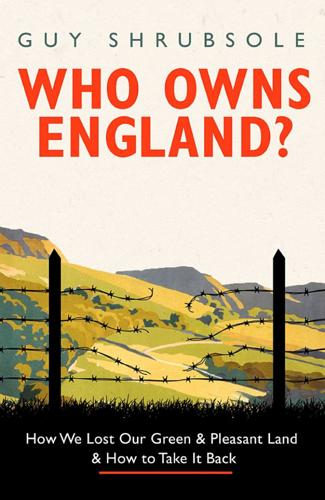
Who Owns England?: How We Lost Our Green and Pleasant Land, and How to Take It Back
by
Guy Shrubsole
Published 1 May 2019
Every time a set of sidings or engine sheds become surplus to requirements, there’s a feeding frenzy by developers, such as has happened in the King’s Cross Central development – where a former goods yard is being converted into a multi-billion-pound suite of posh eateries, offices and flats – and as is set to happen with the Old Oak Common and Royal Park development, as Crossrail and HS2 free up land at an old railway interchange. Network Rail is also busily engaged in selling off the leases to its railway arches, in the hope of generating higher rents from new cocktail bars and hipster cafés – but in the process pushing out the many small businesses who currently inhabit them and can’t afford the rent hikes.
…
Rider 165, 172 Haldane, Richard 32 Halifax, Charles Wood, 1st Viscount 8 Halvergate Marshes, Norfolk 258, 259 Ham Hill, Somerset 59 Hamilton Palace, Uckfield 134–6 Hamnett, Chris 69, 71, 112 Hampton Court 62 Hansard 142 Hardin, Garrett 216 Harding, Luke 125 Hardstoft, Derbyshire 91 The Hares 81 Harewood, Edwin Lascelles, 1st Baron 78 Harewood, Henry Lascelles, 2nd Earl 78 Harewood House, Yorkshire 78 Harlow, Essex 230 Harmondsworth 191 Harrison, Brian 102 Harrowby, John Ryder, 5th Earl 99 Harrying of the North (1069-70) 77 Harvey, David 105 Harworth Estates 180 Hatfield House, Hertfordshire 103 Hattersley, Roy 250 Healey, Denis 102, 104, 105, 124 Healey, John 231 Heathrow 191 Hebden Bridge, West Yorkshire 96 Henry II 50 Henry IV (Henry Bolingbroke) 56 Henry VIII 64–5, 83, 93 Her Majesty’s Revenue & Customs (HMRC) 38–9 Herodsfoot, Cornwall 59 Heronsgate 221 Heseltine, Michael 205, 257 Highclere Castle 9–10 Highgrove Farm, Gloucestershire 59 Highland Clearances 209 Highland Land League 223 Highland Spring 121 Highways Act (1980) 18, 39 Highways Agency 10, 298 Hill, Octavia 215, 232, 238, 240, 243 Hilton, Steve 132 Hindle, Jim 8 Hinduja Brothers 147 Hirst, Damian 132 Historic Houses Association 104 Historic Royal Palaces 62 HMRC see Her Majesty’s Revenue & Customs Hodge, Margaret 129 Holderness 53 Holiday Inn, Reading 60 Hollingsworth, Mark 126 Holnicote, Somerset 242 Home Builders Federation 198 Hoo marshes 255 Hoogstraten, Nicholas van 134–6 horse-racing 10–11 horsebreeders 122–3 Horton, Fiona Catherine 248n Houghton Hall, Norfolk 46 House of Lords 29, 48–9, 66, 82, 89, 90, 99, 103–4, 106, 117, 142, 174, 280 housing 2, 3; empty properties 109–12, 276; fixing crisis in 275–7; and land reform 232, 232–4; proposals for 9 Housing Acts 228 Housing White Paper (2017) 42 Howard de Walden, Mary Hazel Caridwen Czernin, 10th Baroness 94 Howard, Greville, Baron Howard of Rising 46 Hudsun Trustees 118 Hunt, Jeremy 132 Hunter, Robert 238 Hussey family 89 ICI 166, 167 Iliffe, Edward, 1st Baron 16, 18, 117 ‘I’m a Rambler’ (folk song) 250 Imber, Wiltshire 158–9, 162, 170 IMF see International Monetary Fund INEOS 91, 130, 134 Insite Development Ltd (Guernsey) 123, 303 Institute for Public Policy Research (IPPR) 276, 308 International Monetary Fund (IMF) 125 International Union for the Conservation of Nature 250 IPPR see Institute for Public Policy Research Ireland 223 Ireton, General Henry 220 Isle of Eigg 287 Isle of Harris 117 Isle of Lewis 117 Isle of Man 126, 184, 186 Iveagh Bequest 119 Iveagh, Edward Guinness, 1st Earl 118n–19 Iveagh, Edward Guinness, 4th Earl 215 James, Alex 132 James I 82 Javid, Sajid 198, 199 JCDecaux 193 Jenkins, Simon 94 Jersey CI 46, 103, 119, 122 John, King 50 Johnson, Boris 133, 276 Juddmonte Farms stud, Newmarket 123 Kazakhstan 110 Kennet valley 11 Kent 80, 218–19 Kew Palace & Gardens 62, 173 Keynes, John Maynard 92 Khodorkovsky, Mikhail 128 Kielder Forest, Northumberland 149, 175 Kielder Water, Northumberland 175 Killerton, Devon 242 Kinder Scout 250, 251, 252 Kindersley, Juliet 12 Kindersley, Peter 12 King, Miles 168, 281 King’s College London 69 Kingsthorpe Field, Northamptonshire 258 Kirby House Estate, Berkshire 118n Knepp Estate, Sussex 260, 280 Knight Frank estate agents 212 Knightley, Phillip 115 Knole Castle, Kent 80, 242 Knowsley Safari Park 101 Kulibayev, Timur 110–11, 134 Labour Party 31, 35, 42–3, 95, 100, 101–2, 104 and note, 105, 106, 177, 178, 227, 229–30, 242–3, 251 Lake District 238, 239, 244–7, 248, 250 Lamb, Robert 255 Lambourn 11 Lambourn Downs 8 Lambton, Lucinda 282 Lammy, David 42 Lancaster, John of Gaunt, Duke 56 land banking 197–203, 274 Land Compensation Act (1961) 230, 231 Land Enclosure Acts 78 The Land Is Ours group 119 Land Justice Network 307 land ownership: benefits 1–2; companies 299–305; concentration and possession of 21–2; Crown, Church, conservation charities 297–8; dukes 307–8; effect on housing, food and nature 2; investigations into 3–5, 18–22, 263; public discussion on 25; questions concerning 2–3; scale of inequality in 268–9; secrecy concerning 1, 23–5, 34–6, 40–1, 129, 283–4; summary figures 264–7, 298, 299, 300–305, 306–7; surveys 25–33, 40; unequal ownership as a problem 269–71 Land Reform Act (suggested) 272 land reform agenda: abolish last vestiges of feudalism 281–3; complete opening up access to England’s green and pleasant land 288; curb ways that corporate capitalism use to avoid tax 283–4; end secrecy around land ownership 273–4; fix farming system 278; fix housing crisis 275–7; give people stake in country and control of local land 286–8; instigate new land ethic 289; proposals 271–3, 290; restore nature’s abundance 279–81; stop fire sale of public sector land and property 284–6 Land Registration Acts 34, 262 Land Registry 1, 4, 28–9, 32, 33–4, 37, 38, 40, 41–3, 56, 57, 58, 61–2, 63, 66, 87, 141, 181, 187, 188–9, 192, 193, 198, 200–1, 264, 265–7, 273–4; INSPIRE maps 199 land value 2, 272 land value capture 231 land value tax 31–2, 229, 277 Land Workers Alliance 307 landfill sites 193–7 Langford 158 Lascelles family 78 Launceston, Cornwall 59 Law Commission 262 Lawson, Nigel 105 Laxton Estate, Nottinghamshire 54 Le Grand Veneur, Hugh 75 League Against Cruel Sports 249 Lebedev, Evgeny 125 Lee, Jennie, Baroness Lee of Asheridge 104, 228 Lees, Andrew 258 Lees-Milne, James 242 Legal & General 199 Leigh, David 124 Leopold, Aldo 246, 289 Letwin, Sir Oliver 201–2 the Levellers 220 Lever, William, 1st Viscount Leverhulme 117 Liberal Party 2, 24, 30–2, 98–9, 118, 227 Liburn Estate, Northumberland 131 Lincolnshire 53, 130 Linebaugh, Peter 50 Lingiari, Vincent 116 Litvinenko, Alexander 128 Liverpool 78, 115, 183, 184 Liverpool John Lennon Airport 186 Lloyd George, David 2, 31–2, 32, 98–9, 100, 116, 155, 229 ‘Lloyd George’s Domesday’ 31–2 Lloyd, Toby 231–2 Local Government Board 8 Local Plans 202 Localism Act (2011) 287 Locke, John 23–4 Lodge Hill, Kent 171 London 78, 92–5, 114, 133, 268, 270; Angel Centre, Islington 70; Athlone House, Hampstead Heath 126; Banqueting Hall 62; Beechwood House, Hampstead Heath 126; Belgrave Square 100; Bishop’s Avenue, Hampstead 69, 124; Boundary Estate, Bethnal Green 227; Buckingham Palace 55, 61; Cabinet War Rooms 140, 141; Cadogan Estate 94; Canary Wharf 192; Cartwright Estate, Tottenham Court Road 70; Chester Square 127; Clapham Common 215; Clermont Club, Berkeley Square 120; De Beauvoir Town, Hackney 19; Grenfell Tower 94, 111–12; Grosvenor Estate 92–3, 109–11; Guinness Estate, Brixton 119; Hampstead Heath 214; Howard de Walden Estate 93–4; Kennington Common 221; Kennington housing estates 60; Kensington & Chelsea 111–12, 121; Kensington Palace 62; Kensington Palace Gardens 127, 134; Kenwood House, Hampstead 119; Kingsway Tunnels, Holborn 137–9, 140, 141–4; Lambeth Palace 69; Lancaster House 57; Mayfair & Belgravia 93, 109–11, 122, 125, 126, 128, 134, 270; New Era estate, Hoxton 19; Octavia Hill Estates 71; Oval Cricket Ground 60; Paddington estates 69; Palace of Westminster 62–4; Paternoster Square 70; Portman Estate 93; Pure Genius eco-village, Wandsworth 119; Q-Whitehall tunnel 140–3; Red Cross Gardens, Southwark 238; Regent Street & Regent’s Park 53; royal parks 62; St Paul’s Cathedral 70; Savoy Chapel 55–6, 57; Tower of London 62; Whitehall 144–7; Witanhurst, Hampstead Heath 126 London County Councill (LCC) 227 London Stock Exchange 70 Longleat, Wiltshire 101 Longton Freehold Land Society 222 lost villages 156–9, 162, 170 Lothian, Philip Kerr, 11th Marquess 241, 242 Lulworth Ranges, Dorset 157–8 Luxembourg 131, 147 M11 8 McEwen, John 18 Machynlleth, north Wales 175 McKay, George 14 McLynn, Frank 221 Macmillan, Harold 102, 182, 230 Macquarie 181 Maddison, Ronald 166 MAFF see Ministry of Agriculture, Fisheries and Food Magna Carta (1215) 47, 50 Mainland Nominees Ltd 103 Mais, S.P.B. 251 Major, John 25, 180, 187, 206 Manchester 183, 250 Manchester Ship Canal 183, 184 Manchester University 148 Mandelson, Peter 106 Manor of Inglescombe (nr Bath) 59 ‘Mansion Tax’ 104n Marlborough, Charles Spencer-Churchill, 9th Duke 84 Marlston Estate, Berkshire 118n Marr Estate, Northumberland 175 Marren, Peter 255 Marten, Lieutenant-Commander Toby 160–1 Martins, Susanna Wade 225 Marx, Karl 25, 133 Massey, Doreen 1, 86, 179 Massingham, Harold 164 Maude, Francis 146 May, Theresa 42, 207, 276 MediaCityUK, Salford 183 Merchant Ivory Productions 105 Mereworth castle, Kent 121 Mexborough, John Savile, 8th Earl 248n Middle Eastern magnates 119–24 Mill, John Stuart 25, 215 Millennium Trust 11 Miller, General Euan 157 Miller, Robert 131 Milne, Seumas 122 Milton Keynes 230 Ministry of Agriculture, Fisheries and Food (MAFF) 34–5, 156 Ministry of Defence (MoD) 13–15, 24, 248 and note, 275, 298; Crichel Down precedent 160–3; disposal of land 170; ecological sites 169–70; effect of First World War 154–5; inter-war acquisitions 155–6; land contamination 167–9; land ownership maps 147–9; Porton Down 163–8; post-war lost villages 156–9; Project Cleansweep (2007) 169; visit to Foulness 149–54 Ministry of Health and Housing 228 Ministry of Justice 181 Ministry of Supply 167 Minsmere, Suffolk 255 Mitchell, Andrew 129 Mjor, John 95 Molesworth 14 Molior 202 Monbiot, George 9, 90, 242, 246 Montagu, Edward Douglas-Scott-Montagu, 3rd Baron 104 Montagu, John Douglas-Scott-Montagu, 2nd Baron 174 Montague, Brendan 91 Monty Python and the Holy Grail (film, 1975) 79 Moorland Association 96, 97 More, Sir Thomas, Utopia 214 Moss, Kate 132 Mossack Fonseca 189 Mount, Harry 71 Moy Park Ltd 192, 203 MRH Minerals 187 Mugabe, Robert 135 Murdoch, Rupert 132 Nancekuke, Cornwall 166, 167 Napoleon Bonaparte 27, 28 Napoleonic Wars 27 National Archives 32, 33, 34, 87, 151, 157 National Audit Office 57 National Crime Agency (NCA) 127 National Farm Survey (1941) 26, 33 National Farmers’ Union (NFU) 13, 260, 270 National Freehold Land Society 222 National Geographic 59 National Health Service (NHS) 100, 177, 182, 228 National Housing Service 228 National Land Fund 243 National Nature Reserves (NNRs) 178, 255–6 National Park Authorities (NPAs) 248–52, 280 National Parks 280–1, 291 National Parks and Access to the Countryside Act (1949) 251 National Pinetum, Kent 173 National Trust 101, 170, 173, 178, 235, 248n, 254, 262, 265, 289; acquisitions 239–43; founding of 237–9; and the Lake District 244–7, 250; land law deployed by 239; land ownership 298; tax relief and the aristocracy 240–3 National Trust Acts (1907 & 1937) 239 Natural England 21, 40 Natural Resources Wales 176 Nature Conservancy 255, 258, 259 nature reserves 10, 253–6, 271 Navalny, Alexei 125 NCA see National Crime Agency NEF see New Economic Foundation; New Economics Foundation neonicotinoids 12, 13 Network Rail 180, 298 New Economics Foundation (NEF) 182, 276, 285, 308 New Forest, Hampshire 49, 130, 174, 215 New Labour 106, 180, 251–2 New Liberalism 31 new money 266; acceptance of farm subsidies 132, 135; buccaneering businessmen 114–15, 129–32; definition of 112; Edwardian plutocrats 114, 115–19; emergence of 113–14; empty property investments 109–12, 132; Middle Eastern 119–24; moral aspects 134–6; outward appearance of aristocracy 134–5; Russian Oligarchs 114, 125–9; security issues 133–4; tax avoidance and offshore companies 129–32 New Scientist 169 New Statesman 143 New Yorker 126 Newbury, Berkshire 7–8, 14 Newbury bypass 8–10, 15, 17 Newbury Racecourse 10–11 Newcastle upon Tyne 70 Newmarket, Berkshire 122, 123 NFU see National Farmers’ Union NGOs see non-governmental organisations Nicholson, I.F. 162 NNRs see National Nature Reserves non-governmental organisations (NGOs) 35–6, 129, 201, 257 Norfolk Broads 248 Norfolk, Dukes of 76, 82 Norman Conquest 9, 26, 48, 49, 75, 77, 211 North York Moors 51, 248 and note, 268 Northampton, Spencer Compton, 7th Marquess 102 Northern Ireland 265 Northfield Inquiry into the Acquisition and Occupancy of Agricultural Land (1979) 35 Northrop, W.B. 92 Northumberland, Henry Percy, 9th Duke 174–5 Northumberland National Park 248 Northumberland, Ralph Percy, 12th Duke 76, 90, 106, 215, 248, 254 NPAs see National Park Authorities nuclear weapons 13–15 O’Brien, Neil 231 Observer 121, 162 Occupy movement (2011) 70 O’Connor, Feargus 220–1 Office for National Statistics (ONS) 2, 231 offshore holdings/tax havens 37–8, 109, 119, 121–2, 123, 126, 129–32, 284 Onslow, William, 4th Earl 99 Onward 200, 276 OPEC 119 Open Data Institute 42 Open Data movement 41 Ordnance Survey 27, 31, 40, 42, 43, 148 Orford Ness 170 Ormskirk Estate, Lancashire 72 Osborne, George 41, 54, 130, 181 O’Shea, Dr Francis 197 Ostrom, Elinor 216 Otmoor 9 Otterburn, Northumberland 149, 157, 175 Owen, Wilfred 164 Packham, Chris 170 Padulli, Count 37 Paine, Thomas 107 Panama 38 Parliament 62–4 Parliament Act (1911) 99 Paterson, Owen 107 Peak District 96, 250 Peasants’ Revolt (1381) 26, 51–2, 56, 219 Peel Holdings 183–7, 188, 190, 203, 301 Pen Wood, Berkshire 17 People Need Nature 261 People’s Budget (1909) 31, 98–9 People’s Charter (1838) 220 Percy, William de 76 Perkins, Dr Chris 148 Perren, Dr E.A. 167 Perrott, Roy, The Aristocrats 85–6 Perry, Richard 254 Persimmon Homes Ltd 131, 248, 303 Persons of Significant Control 37 Persson, Stefan 18, 131 pesticides 11–13, 166–7, 169, 249, 256, 260, 279 Petroleum Act (1934) 91 Pettit, Ann 14 PFI see Private Finance Initiative Phibbs, John 89 Philip, Prince 45 PhosAgro 126 Pidd, Helen 110 Piecemaster of Atherstone Common 216 Poll Tax (1381) 51–2, 56 Pomerantsev, Peter 128 Poor Law 29 Poore, Major Robert 165 POPS see Privately Owned Public Spaces Porchester, Lord 10 Portman, Christopher, 10th Viscount 93 Portman, Sir William 93 Porton Down, Wiltshire 163–8 Post Office Works Act (1959) 141 Potter, Beatrix 245 Poundbury, Dorchester 59–60 Powell-Smith, Anna 4, 38, 43, 111, 188, 189, 200, 263 Pratchett, Terry, Discworld series 115 Pretyman, Ernest 154 Private Eye 38, 66, 187, 188, 212 Private Finance Initiative (PFI) 180 Privately Owned Public Spaces (POPS) 192 Profitable Plots Ltd 198–9 Profumo, John 101, 118 property-owning democracy: allotments and smallholdings 223–7; and the Chartists 220–2; common land 213–17; council acquisition of land 229–31; council housing 227; data on 207–9; death of the dream 233–4; influence of the Diggers 210–13; Kentish custom of gavelkind 218–19; post-war reconstruction 228–9; Thatcher’s vision for 205–7 Protect and Survive (public information series) 143 Prudential 59 Public Accounts Committee 283 Public and Commercial Services (PCS) trade union 42 public institutions see Forestry Commission; Ministry of Defence public sector/state property 35, 36–7, 43; acquisitions 177–8, 276; London above ground 144–6; London defensive tunnel systems 137–44; prevention of fire sales 284–6; sales of 146–7, 178–82 Punch magazine 245 Putin, Vladimir 114, 128 Putney Debates (1647) 220 Pye, Michael 34 Qatari Investment Authority 192 QinetiQ 150 Queen Mary University 195 Raby, Baron 97 Racine Trust 11 Railtrack 180 railways 180–1, 275; Crossrail 181; HS2 181; King’s Cross Central 180 Ramblers 251 Ramsbury Estate, Wiltshire/West Berkshire 131 Ratcliffe, Jim 130, 133–4 Rathbone Trust Company Ltd 102, 118, 301 Rawnsley, Harwicke 238, 245 Reagan, Ronald 13–14 Rebanks, James, The Shepherd’s Life 247 Reform Acts (1867, 1885, 1918) 222 Republic campaign group 57 Restormel, Cornwall 59 Return of Owners of Land (1873) 26, 29–30, 31, 34, 41, 46, 65, 79, 84 Rewilding Britain 247 Ricardo, David 25 Rich, Colonel Nathaniel 220 Richard II 56 Richmond, Charles Gordon-Lennox, 11th Duke 249 Ridley, Matthew, 5th Viscount 90, 91 Right to Roam 17, 24, 106, 288 The Rime of King William (1087) 49–50 Riseley, Bedfordshire 168 road systems 8–10, 15 The Rock (film, 1996) 166 Romney Marsh 53 Ross, David 131, 248n Rotenberg, Roman 126 Rothman, Benny 250 Rothschild, Charles 253–4, 281 Royal Commission on Coast Erosion and Afforestation (1909) 172 Royal Commission on the Distribution of Income and Wealth (1974) 35 Royal Household Property Section 61–2 Royal Institute of Chartered Surveyors 200 Royal Mail 181 royal residences and parks 61–2 Royal Society for the Protection of Birds (RSPB) 255, 257, 265, 285, 298 Royal Victorian Order 55 Royals Society for the Protection of Birds (RSPB) 96 RSPB see Royal Society for the Protection of Birds; Royals Society for the Protection of Birds Rufus, Alan 77 Ruskin, John 238, 245 Russia, Russians 125–9 Rutland, David Manners, 11th Duke 88 Sackville, Edward Sackville-West, 5th Baron 242 Sackville-West, Vita 80 Safran Holdings Ltd 126 Said, Wafic 124 St George’s Hill, Surrey 131, 209–13, 215 Salisbury 128, 163, 167 Salisbury Plain 149, 158, 169 Salisbury, Robert Gascoyne-Cecil, 3rd Marquess 20 Salisbury, Robert Gascoyne-Cecil, 6th Marquess 103 Salisbury, Robert Gascoyne-Cecil, 7th Marquess 129, 215 Samos Investments 103 Samos Investments Ltd 103 Sanctuary 170 Sanders, Adrian 66 Sandford Principle (1974) 252–3 Sandringham Estate, Norfolk 21, 39, 45–7, 51, 60, 298 Sargent, John Singer 115 Saudi Arabia 123–4, 133 Savills Estate Agents 67 Schwarzenbach, Urs 131 Scotland 4, 5, 17, 18, 114, 118n, 121, 171, 175, 217, 265, 287 Scotney Castle, Kent 89 Scottish Community Right to Buy 288 Scottish Land Commission 273 Scottish Land Reform Act (2003) 208 Scout Movement 251 Second World War 101, 137, 140, 155, 157, 168, 177–8, 228, 230, 236, 253 Secret Map of Britain (documentary, 2002) 148 Secrett, Charles 258–9 Section 106 agreements 230 Senny Bridge, Brecon 156 Serious Fraud Office 124 Serrano, Rafael 147 A Shade Greener 190 Shakespeare, William, King Lear 217–18 Shared Assets 307 Shaxson, Nicholas 103 Sheepdrove 12 Shelter 42, 201, 231, 276, 307 Shipbourne, Kent 123 Shoard, Marion 17, 251, 252, 261, 279 Shoreline Management Plan (Essex) 153 Short, Brian 32 Shrewsbury, Earls of 100 Shuvalov, Igor 129 Singapore 198–9 Single Area Payment 11 Sipson 191 Sissinghurst Castle, Kent 81 Sites of Special Scientific Interest (SSSIs) 8, 169, 256–9, 261, 271, 281, 285 Skelton, Noel 206 Skinner, Dennis 176 Skripal, Sergei 128, 163, 166 Sky Limited 132 Smallholdings Acts (1892 & 1908) 225 SMECH Properties Ltd 121 Smith, Adam 25, 92 Smith, Chris 252 Smith, Graham 57 Snelsmore Common, Berkshire 17 Snelsmore reserve, Berkshire 8 Snow, Dan 87, 114 Snow, Peter 87, 90, 114 Soames, Nicholas 39 Society for the Promotion of Nature Reserves (SPNR) 254 Somerset Levels 258 South Downs 248, 249 Sovereign Grant 54–5, 57, 60, 283 Spaunton Estate 248n Spectator 35, 97, 161 The Spectator 212 Spelman, Caroline 177 Spencer, Kate 195, 196, 197 SPNR see Society for the Promotion of Nature Reserves SSSIs see Sites of Special Scientific Interest Stanford Training Area, Norfolk 149, 157, 158, 159 State of Nature reports 249, 261 state ownership see public sector/state property Stevenage 230 Stewart, Rory 247 Stoke Climsland, Cornwall 59 Stoker, Bram 92 Stolton, Frank 166 Stone, Jean 83 Stone, Lawrence 83 Stowell Park Estate, Gloucestershire 116 Straw, Jack 185 Strickland Estate 248n Sturston 158 Sturt, Mary Anna 160–1, 163 Sulhamstead Estate, Berkshire 118n Sun newspaper 132 Sunday Times 34; Rich List 75, 93, 113, 129–30 Sustrans 179 Sutherland, George Sutherland Leveson-Gower, 2nd Duke 222 Sutton Estate, Berkshire 9, 12 Sutton Place, Surrey 127 Sutton, Sir Richard 9, 18 Swanscombe, Kent 218 Syros Investments Ltd 103 Tarrant, Walter George 212 Tata Steel UK Ltd 187, 301 tax: and the aristocracy 98–106, 107–8, 241; avoidance 116–17, 129–32, 188, 274, 282; death duties 84, 98, 100, 114, 119, 174, 240, 241; exemptions 38–9, 219, 282; hand-outs to owners of grouse moors 279; land value 31–2, 229, 277; and the National Trust 240–1; suggested changes 274, 277, 279, 282, 290 Tax Justice Network 38 Tayberry Ltd 121–2 Taylor, A.J.P. 116 Taylor Wimpey UK Ltd 187, 200–1, 301 Tenant Farmers Association 226 Tennyson, Alfred, Lord 88 Tesco Stores Ltd 187, 191, 203, 302 Thames Basin heaths 169 Thatcher, Margaret 8, 35, 68, 70, 105–6, 113, 114, 124, 176, 179, 180, 182, 187, 205–7, 226, 230, 233 Thetford Forest 149 Thomas, Mark 39, 148 Thompson, F.M.L. 87; English Landed Society in the Nineteenth Century 84, 85 Thorney Island 62 Thornhill Manor, Wirral 117 Thorold, Peter 94 Thorpe Report (1969) 224 Three Acres and a Cow (travelling show) 251, 307 Thurlow Estate, Suffolk 116 Thurrock Council 196–7 Tilbury 195 Tilbury Contracting and Dredging Company Ltd 196 Tilshead Estate, Wiltshire 159 The Times 30, 90, 230, 239, 258 Tintagel 59 Tithe Commission 27–8 Tithe Commutation Act (1836) 27 Tithe Maps 26 Toon, Donald 127 Tottington 158 Town and Country Planning Acts (1947 & 1959) 229, 230, 261, 278 Trafford Centre 183, 184, 185 Transfer of Woods Act (1924) 174 Transparency International 38, 129 Transport for London (Tfl) 180 Tree, Isabella 260 Trematon, Cornwall 59 trespass 34–5, 90–1, 210, 213, 238, 250–1, 252, 263; aggravated 25; joke concerning 79; laws 1, 15, 24–5, 250, 271 Trevelyan, Sir Charles 242 Trevelyan, George Macaulay 173, 242 Truss, Liz 231 trusts 38, 102, 108, 116–17, 265, 266, 273, 282 Turner, Michael 85 Tusmore Park, Oxfordshire 124 Two Tree Island, Thames Estuary 196 Twyford Down 8 Tyler, Wat 219 Tyneham Action Group 159 Tyneham, Dorset 157–8, 159, 162, 275 UAE see United Arab Emirates UK Coal 180 UK National Ecosystem Assessment 208 UK Overseas Territories 38 UKIP 118 Ulva 217 Underwood, Austin 159 UNESCO 184 Unexplained Wealth Orders (UWOs) 129 Unilever 117 United Arab Emirates (UAE) 121 United Utilities 180 University College London (UCL) 78 Upper Teesdale 97 US Air Force 13–15 US Army 100–1 Usmanov, Alisher 126, 127 Uthwatt Report (1941) 229 UWOs see Unexplained Wealth Orders Valuation Maps (1910-15) 26 Valuation Office 32, 43 Varroa mite 12 Veolia 194 Verderers 216 Verney, Sir Ralph 258 Vestey, Edmund 115, 116–17, 129 Vestey Food Group 116 Vestey, Samuel, 3rd Baron 116 Vestey, William, 1st Baron 115–17, 129 Victoria & Albert Museum (V&A) 104 Victoria, Queen 46, 51, 53, 83, 84, 97, 279 Vote Leave campaign 118 Wainwright, Oliver 184 Waitrose distribution centre, Milton Keynes 60 Wales 4, 5, 17, 30, 40, 43, 80, 84, 171, 175, 200, 203, 252, 264, 265, 288 Wallace Estates 37, 189–90 Wallace Partnership Group Ltd 37 Wallace, William, Lord Wallace of Saltaire 81 Wallington estate, Northumberland 242 Walshaw Moor Estate, West Yorkshire 96, 304 Walshaw Moor (nr Hebden Bridge) 20–1 War Agricultural Committees 33, 156 War Ministry 33 War Office 156, 157, 158, 158–9, 164 Warcop 169 Ward, Colin 224 Wardroper, Catherine Mary 248n Warwick, Hugh 260 Wauth, Evelyn 101 Welby, Justin, Archbishop of Canterbury 68 West Berkshire Council 18 West Tofts 158 Westminster, Dukes of 99–100; see also Grosvenor family Westminster, Gerald Grosvenor, 6th Duke 75, 81, 95, 106 Westminster, Hugh Grosvenor, 1st Duke 118, 240 Westminster, Hugh Grosvenor, 7th Duke 81, 93, 97, 270 White Cliffs of Dover 235–7 Whittaker, John 184, 186 Who Owns Scotland 308 Whose Britain Is It Anyway?
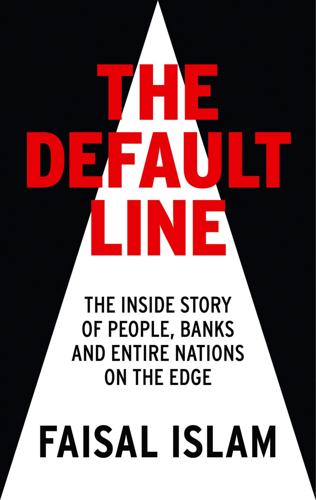
The Default Line: The Inside Story of People, Banks and Entire Nations on the Edge
by
Faisal Islam
Published 28 Aug 2013
In mid-2012, at one of his visits to a taxpayer-funded construction site, on this occasion a giant shaft for the Crossrail project near London’s Bond Street, the chancellor boasted about his capital spending record, claiming that while it included large cuts, those cuts were smaller ones than Labour had planned. With his Liberal Democrat deputy Danny Alexander by his side, he said: ‘We are the people who sat around the table eighteen months ago and gave the go-ahead to this [Crossrail] project that we are standing in today. We are actually spending more on capital investment than the Labour Party planned, more on our roads and railways than they spent in the boom years.
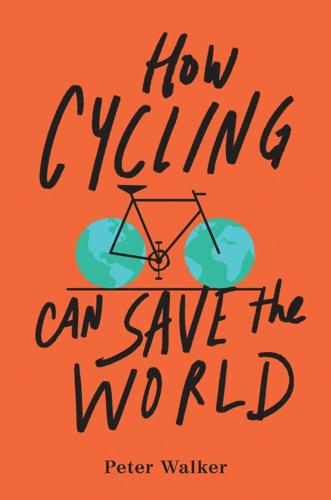
How Cycling Can Save the World
by
Peter Walker
Published 3 Apr 2017
44 Greater London Authority, “Mayor of London Announces Bold Plans to Clean Up London’s Toxic Air,” May 13, 2016, https://www.london.gov.uk/press-releases/mayoral/bold-plans-to-clean-up-londons-toxic-air. 45 Interview with the author. 46 European Commission Joint Research Centre: C02 per capita for world countries. 47 Climate Reality Project. 48 European Cyclists’ Federation, “Cycle More Often 2 Cool Down the Planet,” November 2011, https://ecf.com/sites/ecf.com/files/co2%20study.pdf. 49 Jacob Mason, Lew Fulton, and Zane McDonald, “A Global High Shift Cycling Scenario,” November 12, 2015, https://www.itdp.org/wp-content/uploads/2015/11/A-Global-High-Shift-Cycling-Scenario_Nov-2015.pdf. 50 Interview with the author. 51 Interview with the author. CHAPTER 4 1 Interview with the author. 2 Odense municipality figures. 3 Interview with the author. 4 Chris Kenyon, “Unilever PLC, with €50bn Turnover and 1,200 Staff in London, Backs ‘Crossrail for Bikes,’” CyclingWorks.com, October 6, 2014, https://cyclingworks.wordpress.com/2014/10/06/unilever. 5 Peter Walker, “Cyclists v Lobbyists: Gloves Are off in the Battle for London’s Cycle Lanes,” The Guardian, October 10, 2014, https://www.theguardian.com/world/2014/oct/10/cyclists-lobbyists-battle-london-cycle-lanes-boris-johnson. 6 Interview with the author. 7 David Carslaw, “Oxford Street—Highest NO2 Concentrations in the World?”
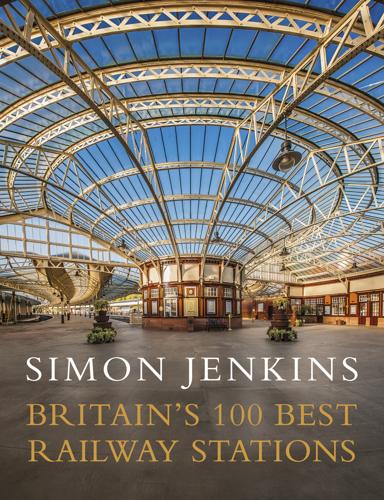
Britain's 100 Best Railway Stations
by
Simon Jenkins
Published 28 Jul 2017
The concourse was developed on the site of what was briefly the hotel garden, an area known to this day as the Lawn. The ramp down from Praed Street remained little more than a tradesman’s entrance. The western arrivals side was more dignified, but in the discreet style of a Bayswater terrace. Its wall remains as part of the Crossrail interchange. Paddington’s ‘letter from home’ Brunel’s great waves of iron Great Western boardroom in Moorish mode Otherwise, the station was to make its impact, as it still does, inside. The building was planned during the construction of the Great Exhibition of 1851, on whose committee Brunel served.
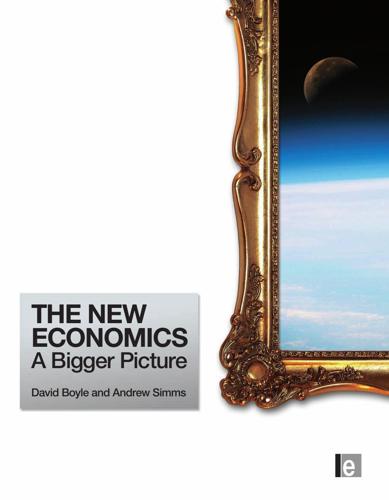
The New Economics: A Bigger Picture
by
David Boyle
and
Andrew Simms
Published 14 Jun 2009
Then they leave their cars behind and go by tube. The solution to speeding up the traffic is therefore to speed up the main public transport infrastructure. What’s more, said Mogridge, this works even if you take space away from cars to make room for public transport.4 It was the thinking that led to plans like Crossrail – the new high speed underground line across London – as well as Zurich’s successful strategy to reduce car use based on better pedestrian access and investment in trams. By the end of his life, Mogridge reckoned that traffic speed could be doubled just by reducing space for cars, though it remains difficult for public officials – at least in the UK – to act on this new law of traffic management.
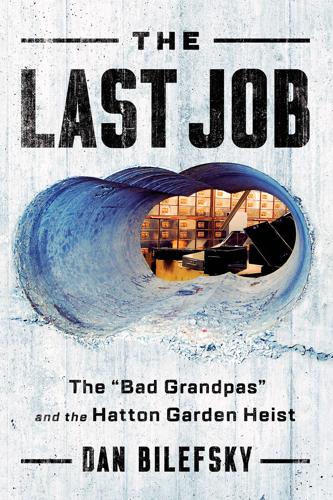
The Last Job: The Bad Grandpas and the Hatton Garden Heist
by
Dan Bilefsky
Published 22 Apr 2019
The air was thick with smoke as the cement flew everywhere with each thrust of the drill, and produced a loud humming sound. So loud, in fact, that several neighbors next to the safe deposit said they heard the commotion. But it was the gang’s good fortune that the area had been under construction during the previous several months, and Crossrail, a £15 billion ($22.5 billion) project to build a high-capacity, high-frequency railway line for London and the southeast, had sent out letters to local residents warning them about upcoming construction. No one thought anything was amiss. Reader was the commander, and he and the Firm would have calculated how long it would take before the sun rose and they had to flee.
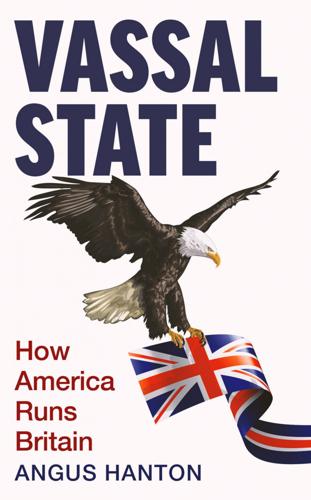
Vassal State
by
Angus Hanton
Published 25 Mar 2024
As a result, 15 per cent of the UK’s prison population is held in privately run prisons, which are mostly larger and newer.35 Time will tell if the US model of incarceration is adopted even more enthusiastically in the UK. Big projects mostly run by Uncle Sam One might assume that the British are capable of organising their own infrastructure building as the French do. Such projects include the HS1 railway for the Channel Tunnel, HS2, connecting London to the Midlands, Crossrail, the Gatwick Airport extension and the new terminal at Heathrow Airport.36 In fact, a principal contractor for each of these was Bechtel, which is based in Reston, Virginia. While the Virginians are clearly effective project managers, the profit goes west, and their research teams are mostly in that state, as well as Texas.
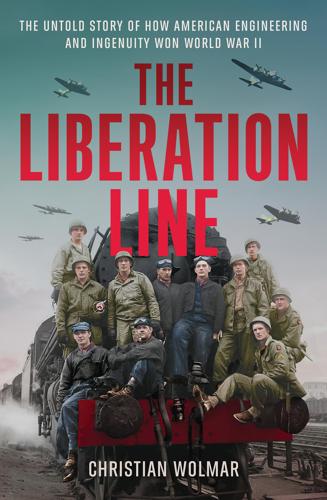
The Liberation Line: The Untold Story of How American Engineering and Ingenuity Won World War II
by
Christian Wolmar
Published 15 Dec 2024
Also by Christian Wolmar Blood, Iron & Gold British Rail Broken Rails Cathedrals of Steam Down the Tube Driverless Cars: On a Road to Nowhere Engines of War Fire & Steam Forgotten Children The Great British Railway Disaster The Great Railway Revolution The Iron Road On the Wrong Line Railways Railways & the Raj A Short History of Trains Stagecoach The Story of Crossrail Subterranean Railway To the Edge of the World NOTES INTRODUCTION 1. Carlo D’Este, A Genius for War (New York: HarperCollins, 1995), 605. 2. Emerson Itschner, speech to engineer conference, Fort Leonard Wood, Missouri, May 6, 1989. 3. Military Engineer 36, no. 336 (December 1944): 408. 4.
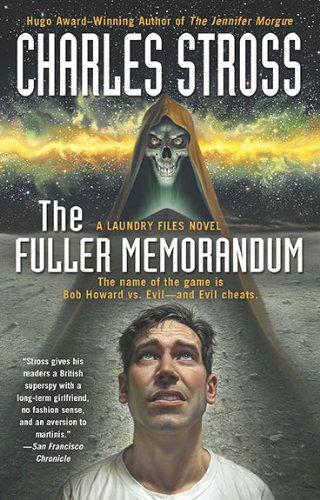
Fuller Memorandum
by
Stross, Charles
Published 14 Jan 2010
There are many railways under London. There are the tube lines that everyone knows about, hundreds of kilometers, dozens of lines, carrying millions of people every day. And there are the London commuter rail lines, many of which run underground for part or all of their length. There are the other major railway links such as CrossRail and the Eurostar tunnel into St. Pancras. There's even the Docklands Light Railway, if you squint. But these are just the currently operational lines that are open to the public. There are other lines you probably don't know about. There are the deep tube tunnels that were never opened to the public, built to serve the needs of wartime government.

Choked: Life and Breath in the Age of Air Pollution
by
Beth Gardiner
Published 18 Apr 2019
There and at stations around the city, commuters would be able to walk outside and “either jump on an electric tram or get on their bike.” It’s an appealing vision, one not beyond our reach. Britain, in the years I’ve been here, has shown itself more than able to do big things—in addition to the new King’s Cross, there’s Crossrail, the Olympic Park project, the Jubilee Line extension, and more. Small shifts are already visible: Cycling, for example, has been steadily gaining popularity. The bigger changes will take commitment, and money. But they’re eminently doable. Frank Kelly’s right about one thing, though. It took a long time to create today’s mess, and with all the diesel buses, trucks, vans, and cars on Britain’s streets, “it’s going to take much longer than most people appreciate to get it sorted out
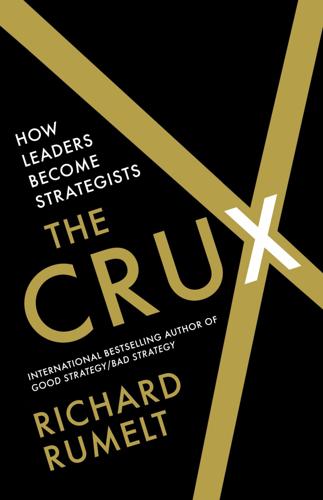
The Crux
by
Richard Rumelt
Published 27 Apr 2022
Additional research by transit expert Aron Levy has shown that most US rail construction costs are inflated when compared to those in other industrial countries. In a 2011 study he provided the specific comparisons shown in Figure 12. FIGURE 12. Aron Levy Data on US Light-Rail Construction Costs Project Cost per km in $ millions Length in km New York City East Side access 4,000 2 New York City Second Ave. Subway, phase 1 1,700 3 London Crossrail 1,000 22 London Jubilee Line Extension 450 16 Amsterdam North–South Line 410 9.5 Berlin U55 250 1.8 Paris Metro Line 14 230 9 Naples Metro Line 6 130 5 Source: Aron Levy, “U.S. Rail Construction Costs,” Pedestrian Observations (blog), pedestrianobservations.com, May 16, 2011.
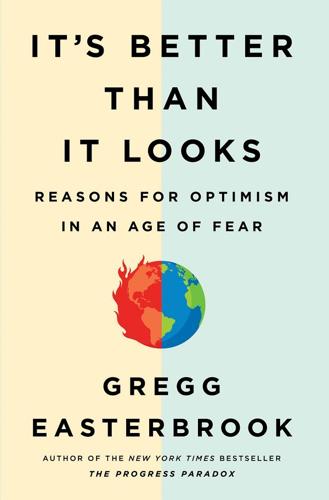
It's Better Than It Looks: Reasons for Optimism in an Age of Fear
by
Gregg Easterbrook
Published 20 Feb 2018
Yet while Washington borrows lavishly to subsidize interest groups, construction and repair are overlooked. In 2014, President Barack Obama lamented of American infrastructure, “We are not spending enough.” Rather, the United States spends plenty while getting little, since US infrastructure projects are overpriced, slow, and ill-administered. The ambitious high-speed Crossrail subway being completed underneath London is costing $285 million a mile; the world’s longest and deepest rail tunnel, opened under the Swiss Alps in 2016, cost $355 million a mile; subway tunnels being bored beneath San Francisco and Seattle at the same time cost $1 billion a mile, far more in the United States than in England or Switzerland.

The Long History of the Future: Why Tomorrow's Technology Still Isn't Here
by
Nicole Kobie
Published 3 Jul 2024
That almost sounds sensible.12 Lilium’s chairman Alex Asseily once suggested to me that the Jet would be perfect to link Heathrow airport to London’s business district, Canary Wharf, as there was no direct rail route between the two. While his argument was sound, we had our call on the opening day of the Elizabeth Line (aka Crossrail) that now links the airport directly to Canary Wharf in 45 minutes. CHAPTER SEVEN Hyperloop I am standing in the rain in Edinburgh, waiting for a hyperloop. Don’t worry, this isn’t some sci-fi future-looking scene set 20 or 30 years in the future where I imagine what life will be like when these technologies eventually arrive.
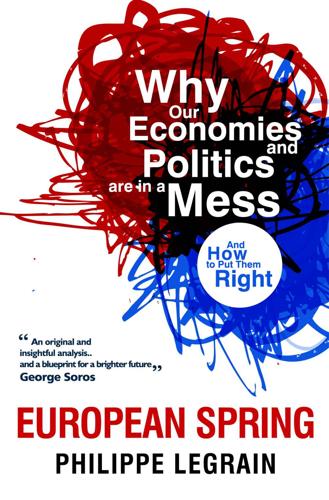
European Spring: Why Our Economies and Politics Are in a Mess - and How to Put Them Right
by
Philippe Legrain
Published 22 Apr 2014
Bypassing banks by creating a credit market for lending to smaller businesses would also help, an idea advocated by Adam Posen, a former member of the Bank of England’s monetary-policy committee and now the president of the Peterson Institute for International Economics, the world’s top think-tank on such matters.439 A new British Investment Bank could finance productive investment – for example, much-needed infrastructure improvements – and provide credit to smaller businesses, as the European Investment Bank does.440 Britain needs better roads, more underpasses and bridges, a high-speed railway network, new Tube (metro) lines and a second Crossrail in London, greater airport capacity in the south-east of England, modernised ports, new power plants, a smart electricity grid, broadband infrastructure, water reservoirs – why not maglev trains and a Hyperloop to boot?441 Unfortunately, the government has so far failed to take advantage of this once-in-a-generation opportunity to borrow cheaply, invest and promote a healthy, investment-led recovery.
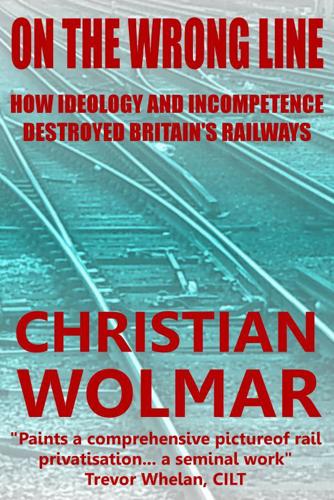
On the Wrong Line: How Ideology and Incompetence Wrecked Britain's Railways
by
Christian Wolmar
Published 29 May 2005
The Committee concluded that the SRA was incapable of undertaking any visionary thinking, a view held by ministers and which helped the SRA on its way to oblivion. Bowker tried to update the Strategic Plan for 2004 in an effort to make it more robust. The draft plan¹⁴ promised that the SRA would continue to look at ‘long-term initiatives such as Crossrail, an East Coast Route Strategy and a possible North South High Speed Line’ despite ‘budget stringency’ but that is not what ministers wanted the public to hear. They saw the draft as yet another demand for a blank cheque and blocked its publication. The SRA’s unpopularity among ministers and civil servants was exacerbated by the increase in its own spending as it turned into a huge bureaucracy.
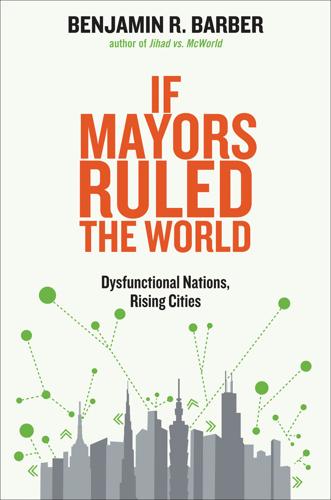
If Mayors Ruled the World: Dysfunctional Nations, Rising Cities
by
Benjamin R. Barber
Published 5 Nov 2013
At the same time, he has no problem with congestion fees and other interventionist policies when they improve the quality of life in the city. He took 10,000 knives off the street (the equivalent of handguns in other cities), although he did it using controversial stop-and-search tactics. He is expanding rail (firing up the long-stalled Cross-rail) and championing both a new sprawl-spewing gateway airport on the lower Thames and new parks and green spaces (more than 450 already established). And he is a fan of local agriculture. Critics on the left worry about his Tory outlook, but as with so many mayors, fixing things seems more important to Johnson than upholding abstract ideological ideals.
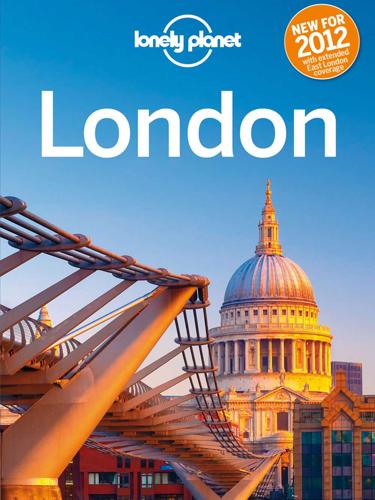
Lonely Planet London
by
Lonely Planet
Published 22 Apr 2012
Moving Forwards An intelligent and nifty redesign of London’s transport options is either on the drawing board or already on the streets. The Barclay’s Cycle Hire Scheme (Click here) has transformed the way a large number of people – including visitors – get about town. The East London Overground line has been extended and a cable car is planned to drape itself across the Thames between Greenwich and the Royal Docks. Crossrail will bring high-frequency underground trains linking east and west London along two brand new lines costing £15.9 billion, due to commence service in 2018. The old Routemaster buses have largely vanished – axed to great dismay in 2005 – but are due to reappear by 2012 in modernised, more environmentally-friendly form, replacing the much-mocked ‘bendy buses’.

Lonely Planet London City Guide
by
Tom Masters
,
Steve Fallon
and
Vesna Maric
Published 31 Jan 2010
In the end, Johnson soundly beat Livingstone to become London’s mayor until 2012; the capital reeled, gasped and joked before carrying on as normal. * * * London’s successful bagging of the 2012 Olympic Games meant that a vast building program in East London was rolled into action. Most importantly for Londoners, the Olympics will release money for much-promised new transport routes – including the Crossrail scheme that will see the construction of two brand-new underground train lines linking London’s east to its west – and produce much-needed affordable housing after the games. The global financial crisis has taken its toll on London, too, of course. Many of the more ambitious construction schemes were being cancelled or postponed at the time of writing, and there are likely to be far fewer iconic city skyscrapers going up in the next decade.
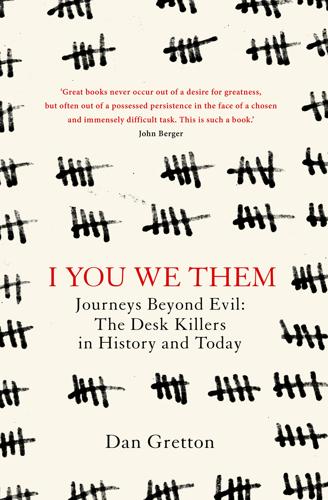
I You We Them
by
Dan Gretton
And our minds cannot keep the imprint of buildings in our memory for long, unless the structures were remarkable in some way. When new sites in the city are developed, and the demolition phase takes place, you notice the gap, but within days or weeks it’s impossible to remember the buildings that existed before. Recently, as part of the Crossrail development, an entire block of Soho was suddenly not there any more. Having not been into the centre for a while, I was halted in my tracks by seeing the sky where buildings used to be. I knew that part well; my favourite Italian restaurant was at that end of Dean Street. No more. Gone within days.
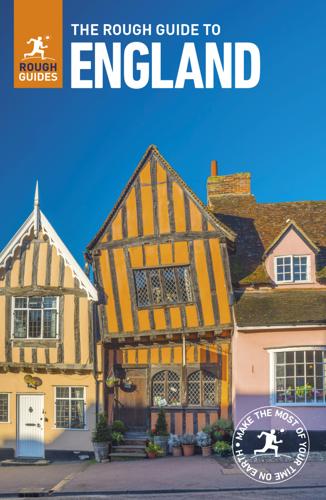
The Rough Guide to England
by
Rough Guides
Published 29 Mar 2018
Heathrow Express High-speed trains travel nonstop to Paddington Station (Mon–Sat 5.15am–11.20pm, Sun 6.20am–11.20pm; every 15min; journey 15min; £22–25 one-way off-peak, £37 return, more if you purchase your ticket on board; heathrowexpress.com). Elizabeth Line Formerly Heathrow Connect, the new Elizabeth Line (Crossrail) service will run four trains an hour from terminals 2, 3 and 4 to Paddington from May 2018 (with a service from terminal 5 from December 2019 onwards), with several stops on the way. Underground The Piccadilly tube line runs directly into central London (daily 5am–11pm; Fri & Sat 24hr from terminals 1, 2, 3 & 5 only; every 5min; journey 50min–1hr); £3.10 off-peak, £5.10 peak (Mon–Fri 6.30–9.30am) with Oyster card.

England
by
David Else
Published 14 Oct 2010
It’s expected that the project will rejuvenate this economically depressed area – and with a price tag of £9 billion, you’d certainly hope so. The improved transport connections will certainly help. An expanded East London line will link the East End to Highbury & Islington in the north and Clapham and Crystal Palace in the south. It won’t be ready for the Olympics, but the Crossrail project will add a new east–west route to the colourful spaghetti of the tube map. Return to beginning of chapter ORIENTATION The M25 ring road encompasses the 609 sq miles that is broadly regarded as Greater London. The city’s main geographical feature is the murky Thames, which snakes around but roughly divides the city into north and south.
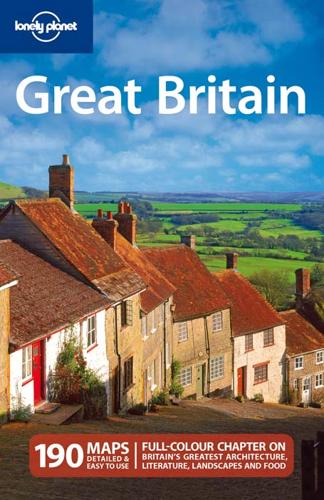
Great Britain
by
David Else
and
Fionn Davenport
Published 2 Jan 2007
It’s expected that the project will rejuvenate this economically depressed area – and with a price tag of £9 billion, you’d certainly hope so. The improved transport connections will certainly help. An expanded East London line will link the East End to Highbury & Islington in the north and Clapham and Crystal Palace in the south. It won’t be ready for the Olympics, but the Crossrail project will add a new east–west route to the colourful spaghetti of the tube map. Return to beginning of chapter ORIENTATION The M25 ring road encompasses the 609 sq miles that is broadly regarded as Greater London. The city’s main geographical feature is the murky Thames, which snakes around but roughly divides the city into north and south.